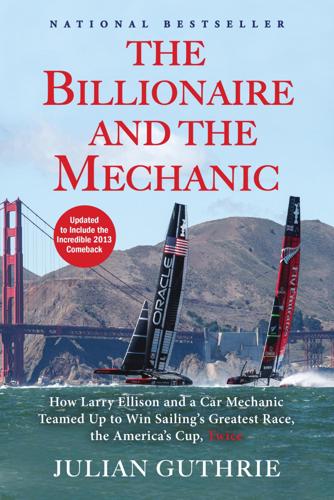
The Billionaire and the Mechanic: How Larry Ellison and a Car Mechanic Teamed Up to Win Sailing's Greatest Race, the Americas Cup, Twice
by
Julian Guthrie
Published 31 Mar 2014
Oracle Team USA sails home to victory, pulling off one of the greatest comebacks in sports history. ACEA/Balazs Gardi Celebration after winning the 34th America’s Cup. From left: David Ellison, Judge Jimmy Linn, Sandy Ellison, Meir Teper, Nikita Kahn, Larry Ellison, Kim Dubin, Pam Tilton, FBI Agent Jonathan Dubin, Jon Weis. Courtesy of Larry Ellison Jimmy Spithill, Larry Ellison, and Norbert Bajurin celebrate the remarkable victory in 2013. ACEA/Gilles Martin-Raget 18 Valencia, Spain Spring 2007 IN APRIL 2007, eleven teams began racing for the Louis Vuitton Cup in the waters off Valencia. Each team raced every other team twice in two round-robins, which ended in May.
…
The refrain was becoming as familiar as the I-carried-my-shoes-to-save-the-soles story. Jozo told Norbert he’d worked too hard for too long to have his son take his business for granted. Madeleine had her own approach. She wanted to understand what her husband was up against, so she picked up the biography The Difference Between God and Larry Ellison: God Doesn’t Think He’s Larry Ellison. She peppered Norbert with pillow-talk tidbits. “The Oracle Way . . . was simply to win,” Madeleine read aloud. “How that goal was achieved was secondary.” She went on, “While Ellison demanded absolute loyalty, he did not always return it. The people he liked best were the ones who were doing something for him.
…
A 1903 cartoon from Puck shows the “American Sportsman” declaring, “If we can not keep both, we would rather lose the Cup than lose you, Sir Thomas.” Larry Ellison at age two. Larry’s adoptive parents, Lillian and Louis Ellison. Larry at twenty-four years old, rock climbing in Yosemite. Larry with his children, David and Megan, in 1989. Sayonara during a relatively calm moment in the 1998 Sydney-to-Hobart race. Larry Ellison and Melanie Craft at their wedding in December, 2003. From left: Rep. Tom Lantos with his wife, Annette Tillemann, Steve Jobs, Melanie, Larry, Megan Ellison, David Ellison, Laurene Powell Jobs.
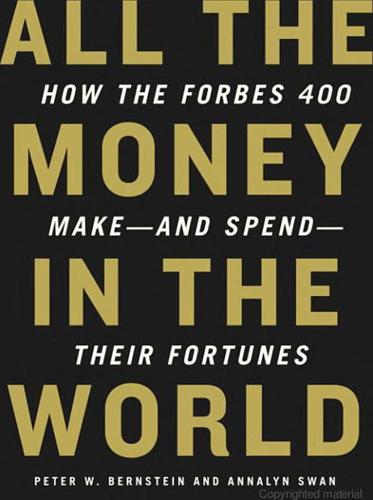
All the Money in the World
by
Peter W. Bernstein
Published 17 Dec 2008
To be sure, all those mundane calculations can take some of the romance out of a new marriage, but prenuptials also come with a huge benefit: They can help provide a shield of confidentiality, as such serial divorcés among the Forbes 400 as Larry Ellison and Ronald Perelman have discovered. * * * The marrying kind About half of all U.S. marriages end in divorce. But for the Forbes 400, only 20% to 30% do, though the percentage has been increasing over the last 25 years. Interestingly, those who divorce are, on average, richer than those who don’t. The divorce premium in 2006: about $200 million. * * * Larry Ellison was divorced three times by the time he was forty-two. Before marrying third wife, Barbara, a former Oracle employee, he presented her with a prenuptial agreement that capped her entitlement at $1 million.
…
(The fortunes of Oprah Winfrey; Martha Stewart; Pleasant Rowland, founder of the American Girl doll empire; and Meg Whitman, the chief executive officer of eBay, are entirely self-made.) • The average net worth in 200610 of Forbes 400 members without a college degree was $5.96 billion; those with a degree averaged $3.14 billion. Four of the five richest Americans—Bill Gates, casino owner Sheldon Adelson, Oracle’s Larry Ellison, and Microsoft cofounder Paul Allen (whose combined net worth was $110 billion in 2006)—are college dropouts. The fifth, Warren Buffett, has an undergraduate degree from the University of Nebraska—and subsequently got a master’s degree in economics from Columbia University. A broader study of the Forbes 400 over the last twenty-five years indicates that in any given year about 10 percent of the members dropped out of high school, possess only a high school diploma, or never completed college
…
Many of the best examples of excess and pretension during the last twenty-five years have in fact been the work of the lesser rich. Surprisingly few of the Forbes 400 regularly make headlines because of their ostentatious lifestyles. Houses and yachts remain important showpieces, of course, and the competition in both areas is intense: Larry Ellison built a boat that is ninety feet longer than a football field. Few have put on30 a more ostentatious show than list member Ira Rennert, who constructed a five-building compound in the Hamptons, the centerpiece of which is a sixty-six-thousand-square-foot, twenty-nine-bedroom, Italianate villa by the sea.
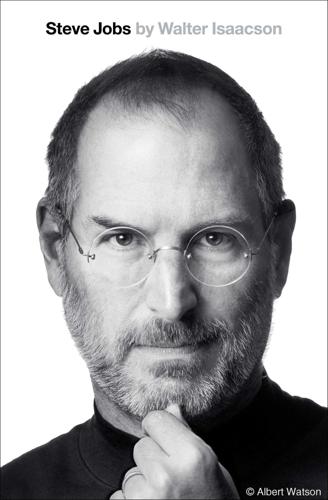
Steve Jobs
by
Walter Isaacson
Published 23 Oct 2011
Bart Ziegler, “Industry Has Next to No Patience with Jobs’ NeXT,” AP, Aug. 19, 1990; Stross, 226–228; Gary Wolf, “The Next Insanely Great Thing,” Wired, Feb. 1996; Anthony Perkins, “Jobs’ Story,” Red Herring, Jan. 1, 1996. Apple Falling: Interviews with Steve Jobs, John Sculley, Larry Ellison. Sculley, 248, 273; Deutschman, 236; Steve Lohr, “Creating Jobs,” New York Times, Jan. 12, 1997; Amelio, 190 and preface to the hardback edition; Young and Simon, 213–214; Linzmayer, 273–279; Guy Kawasaki, “Steve Jobs to Return as Apple CEO,” Macworld, Nov. 1, 1994. Slouching toward Cupertino: Interviews with Jon Rubinstein, Steve Jobs, Larry Ellison, Avie Tevanian, Fred Anderson, Larry Tesler, Bill Gates, John Lasseter. John Markoff, “Why Apple Sees Next as a Match Made in Heaven,” New York Times, Dec. 23, 1996; Steve Lohr, “Creating Jobs,” New York Times, Jan. 12, 1997; Rajiv Chandrasekaran, “Steve Jobs Returning to Apple,” Washington Post, Dec. 21, 1996; Louise Kehoe, “Apple’s Prodigal Son Returns,” Financial Times, Dec. 23, 1996; Amelio, 189–201, 238; Carlton, 409; Linzmayer, 277; Deutschman, 240.
…
Lev Grossman, “How Apple Does It,” Time, Oct. 16, 2005; Leander Kahney, “How Apple Got Everything Right by Doing Everything Wrong,” Wired, Mar. 18, 2008. From iCEO to CEO: Interviews with Ed Woolard, Larry Ellison, Steve Jobs. Apple proxy statement, Mar. 12, 2001. CHAPTER 29: APPLE STORES The Customer Experience: Interviews with Steve Jobs, Ron Johnson. Jerry Useem, “America’s Best Retailer,” Fortune, Mar. 19, 2007; Gary Allen, “Apple Stores,” ifoAppleStore.com. The Prototype: Interviews with Art Levinson, Ed Woolard, Millard “Mickey” Drexler, Larry Ellison, Ron Johnson, Steve Jobs, Art Levinson. Cliff Edwards, “Sorry, Steve . . . ,” Business Week, May 21, 2001. Wood, Stone, Steel, Glass: Interviews with Ron Johnson, Steve Jobs.
…
EDDY CUE. Chief of Internet services at Apple, Jobs’s wingman in dealing with content companies. ANDREA “ANDY” CUNNINGHAM. Publicist at Regis McKenna’s firm who handled Apple in the early Macintosh years. MICHAEL EISNER. Hard-driving Disney CEO who made the Pixar deal, then clashed with Jobs. LARRY ELLISON. CEO of Oracle and personal friend of Jobs. TONY FADELL. Punky engineer brought to Apple in 2001 to develop the iPod. SCOTT FORSTALL. Chief of Apple’s mobile device software. ROBERT FRIEDLAND. Reed student, proprietor of an apple farm commune, and spiritual seeker who influenced Jobs, then went on to run a mining company.
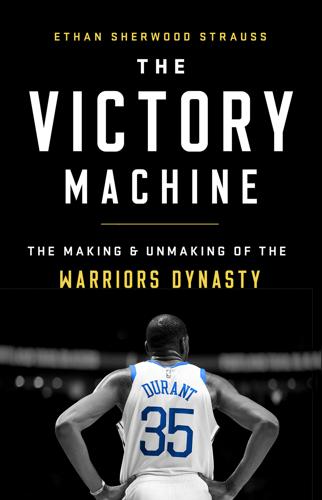
The Victory Machine: The Making and Unmaking of the Warriors Dynasty
by
Ethan Sherwood Strauss
Published 13 Apr 2020
And yet, in the version of events told by Lacob, Guber, and additional sources, Joe did indeed get on that plane and meet with Chris Cohan. Lacob retells, “I said in the meeting with Cohan, ‘I can’t bid against Larry Ellison. We just can’t do that. So can you name a price that you will sell it to me for. Just name the price.’ And we’re in at four hundred, which we thought was a lot, and I’m sure Larry [Ellison] did too. And Cohan said, ‘I can’t do that, we have a process, a bidding process, blah, blah, blah.’” It was time for Joe to add some pressure. “I said, ‘Well, here’s the deal—I’m not bidding anymore, so I’m out.
…
It’s also a story of why ultimate success cannot sustain. 1 THE BIG DEAL EGO AND AMBITION NOT ONLY BUILT THE GREATEST TEAM OF this era, but were necessary for its purchase. On July 15, 2010, Bay Area newspapers received a curious press release from California’s richest man. Oracle founder and tycoon bon vivant Larry Ellison made a surprising non-announcement: he wasn’t acquiring the Warriors. It had long been assumed that Ellison was in line to buy the team, then a long-suffering franchise, from then owner Chris Cohan. But something had happened. “Although I was the highest bidder, Chris Cohan decided to sell to someone else,” Ellison’s email read.
…
With $28 billion in a recession-ravaged economy, Ellison should have had a monopoly over the selling process. A notoriously extravagant spender, he claimed one of the most extensive real estate portfolios on earth, to go along with a similarly lavish fleet of superyachts. Even for your average billionaire, entering a bidding war with Larry Ellison was akin to fighting a tank with a bayonet. Conversely, who was Joe Lacob? A successful Kleiner Perkins partner to be sure, but not to the tune of billions. Nor did Lacob have anything resembling Ellison’s fame. On the day of the Warriors team sale, the name “Joe Lacob” had not appeared in the Chronicle since 1998, back when the paper briefly mentioned Joe’s purchase of a San Jose squad in a since defunct women’s basketball league.
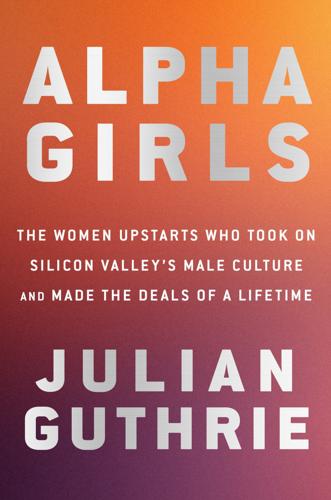
Alpha Girls: The Women Upstarts Who Took on Silicon Valley's Male Culture and Made the Deals of a Lifetime
by
Julian Guthrie
Published 15 Nov 2019
It was ruled by men: Samuel Brannan, Levi Strauss, John Studebaker, Henry Wells, and William Fargo. Women, outnumbered and overmatched, were mostly reduced to entertainers, companions, wives, or housekeepers. Things were not that different in the more recent gold rush. The Valley was always a region dominated by men, from William Hewlett, Dave Packard, Bob Noyce, Gordon Moore, Andy Grove, Larry Ellison, Steve Jobs, and Steve Wozniak to, decades later, in the twenty-first century, Larry Page, Sergey Brin, Mark Zuckerberg, Elon Musk, Tim Cook, Travis Kalanick, and Marc Benioff. Mary Jane, fueled by peanut butter sandwiches packed in wax paper for the two-day journey, was under no illusion that it would be easy to navigate the old boys’ club of Sand Hill Road and Silicon Valley.
…
Here Arthur Rock, at first reluctantly, had provided funds and advice to a scruffy and “very unappealing” Steve Jobs to build Apple. Here venture capitalist Tom Perkins and scientist Bob Swanson had started Genentech. It was on Sand Hill Road that Dave Marquardt’s early investment in Microsoft had yielded a bonus of a new red Ferrari, and where Larry Ellison incubated a start-up called Oracle, getting a loan from VC Don Lucas to keep the relational database company going. It was here that Arthur Rock had defined venture capital as “taking adventures with capital.” The day Sonja arrived in California, in July 1994, Time magazine hit the stands with a cover story titled “The Strange New World of the Internet.”
…
* * * Morby had started at TA Associates as an unpaid intern in the late 1970s, when The Mary Tyler Moore Show had caused a stir with its touching depiction of a single, independent, and empowered working woman. Morby made partner in 1982, a year before MJ Elmore. She met with the young Bill Gates and Larry Ellison and landed deals with the earliest software companies, including Digital Research, McCormack & Dodge, Capex, and many more, at a time when investing in software was considered risky. Sonja told Kim a story Morby had shared with her about meeting Microsoft co-founder Bill Gates. Arriving at Microsoft in Seattle for an early-morning meeting, Morby was told that Gates was on his way from the airport.

Valley of Genius: The Uncensored History of Silicon Valley (As Told by the Hackers, Founders, and Freaks Who Made It Boom)
by
Adam Fisher
Published 9 Jul 2018
Ron Johnson: It was, “I want to make a music device and I want it to hold all your music, I want it to be digital, with great software so you could take your music everywhere.” I don’t think he had thought of “a thousand songs in your pocket” yet, but that was what he was imagining. Larry Ellison: He was obsessive about making an MP3 player easy to use, and affordable, and beautiful… all the things you’d think Sony would do. Tony Fadell: Then we flip to the next page of the checklist, and there was something about Sony. “And Sony, yes they are number one, but we are going to beat them up!” Next page… Larry Ellison: Steve had decided, rather brilliantly, “Why should I compete with Microsoft and bang my head up against the wall when I can compete with Sony instead?”
…
Bono (singing Bob Dylan’s song): “I hear the ancient footsteps like the motion of the sea / Sometimes I turn, there’s someone there, other times it’s only me / I am hanging in the balance of the reality of man / Like every sparrow falling, like every grain of sand.” Mike Slade: And then of course Larry Ellison gave this big eulogy, which was, you know, funny and charming and kind of all about Larry. Larry Ellison: I wanted to talk about my friendship with Steve, what it was like, and a little bit about what Steve was really like. Mike Slade: Bill and I were kind of eye-rolling each other about Larry because it had a lot of the pronoun I in it—shall we say—for a eulogy.
…
David Boies’s quotes are from an interview in Wired in October 2000. The Dot Bomb Peter Thiel’s comments were made in the spring of 2012 in a series of lectures at Stanford and recorded in the notes of Blake Masters, who was in the audience. The Return of the King Larry Ellison’s remarks were made on a special August 2013 episode of CBS This Morning, “An Hour with Larry Ellison,” and in the commencement speech he gave at the University of Southern California in 2016. I’m Feeling Lucky Paul Buchheit’s quotes are found in the book Founders at Work by Jessica Livingston. Susan Wojcicki’s quotes can be found in Jefferson Graham’s USA Today story, “The House That Helped Build Google,” in July 2007.
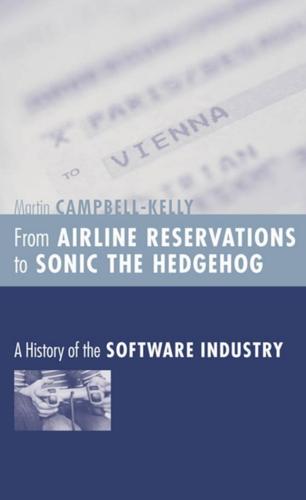
From Airline Reservations to Sonic the Hedgehog: A History of the Software Industry
by
Martin Campbell-Kelly
Published 15 Jan 2003
Schwartz, “Computer Associates Gets User Friendly,” Business Week, January 21, 1991: 86–87. 29. Ibid. 30. Steve Hamm et al., “Why Oracle Is Cool Again,” Business Week, May 8, 2000: 42–47. Notes to pp. 185–190 333 31. Wilson, The Difference between God and Larry Ellison*. (The asterisk in the title led to a footnote: “God doesn’t think He’s Larry Ellison.” This was apparently a popular joke inside and outside Oracle while Wilson was researching his book.) 32. AnnaLee Saxenian, Regional Advantage: Culture and Competition in Silicon Valley and Route 128 (Harvard University Press, 1994). 33. Richard S. Rosenbloom and Clayton M.
…
Peterson’s AlmostPerfect, John Walker’s The Autodesk File, Douglas Carlston’s Software People, John Imlay’s Jungle Rules, and Ben Voth’s A Piece of the Computer Pie.30 All these books contain valuable firsthand accounts of individual firms. Some of the better books by journalists (and not about Microsoft) are Mike Wilson’s account of Oracle, The Difference between God and Larry Ellison, Gerd Meissner’s SAP: Inside the Software Power, and Tristan GastonBreton’s La Saga Cap Gemini.31 There are also a few article-length reminiscences by industry pioneers, including Elmer Kubie’s recollections of the early years of the Computer Usage Company and J. Lesourne and R. Armand’s description of the first decade of the French software house SEMA.32 Most histories of individual firms focus on the largest companies—those with hundreds or thousands of employees and with revenues of $1 billion or more.
…
Charles Wang has been portrayed as uncompromisingly aggressive, streetwise, and hostile to “kiss-ass MBAs.”22 In the mid 1990s, Computer Associates established a public relations department and adopted more enlightened human-resources policies, and in 1998 Fortune ranked it among the 100 best companies to work for. The older image persisted to a degree, but the turnaround was remarkable. Computer Associates shows the imprint of its founder as much as Microsoft bears the hallmark of Bill Gates or Oracle that of Larry Ellison. Yet, unlike Gates and Ellison, Charles Wang is virtually unknown outside The Corporate Software Products Industry 181 Table 6.6 Computer Associates’ principal acquisitions, 1980–1995. 1982 1983 1984 1984 1985 1986 1986 1987 1987 1988 1988 1988 Corporation acquired Activity (cost, where known) Capex Information Unlimited Sorcim Johnson Systems Top Secret Software Software International Integrated System Software Co.
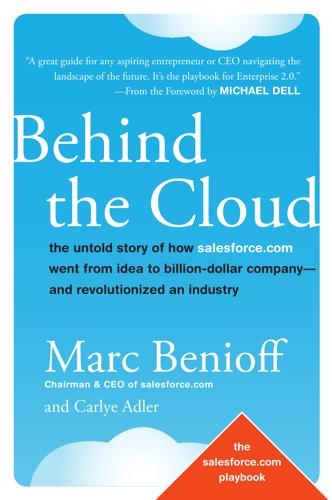
Behind the cloud: the untold story of how Salesforce.com went from idea to billion-dollar company--and revolutionized an industry
by
Marc Benioff
and
Carlye Adler
Published 19 Nov 2009
I wasn’t convinced that I wanted to dedicate myself to sales, and I didn’t want to be an 800-number operator, but I soon discovered that working with customers was much more fun than writing code, and it turned out that I was pretty good at it. Oracle had about two hundred people when I started, and the fast-growing company prized the efforts of young people and rewarded them. Founder and CEO Larry Ellison regularly xx Introduction walked the halls to chat with employees. (I usually took these opportunities to share my enthusiasm for Macs.) Soon after I sent Larry a note asking when Oracle would be on the Macintosh and included a business plan about how to make us successful in the Apple market, Larry made me the director of Oracle’s Macintosh division.
…
Play #12: Hire the Best Players You Know I obliged Larry’s request to limit my use of Oracle as a recruiting fair, but I was ecstatic about the opportunity to handpick three talented and well-trained individuals to help build salesforce.com. I asked Nancy Connery to run recruiting and human resources, something we desperately needed. I tapped 15 BEHIND THE CLOUD The Larry Ellison Playbook Many of the lessons I learned from Larry still guide me today. Most of all, he taught me that accomplishments are fueled by faith. When Oracle entered its darkest days, every employee, customer, analyst, and even the people closest to him doubted the company would rebound. Even in that difficult climate, Larry’s resolve never faltered.
…
The fighter jet represented our company, which was built on the most advanced technology and was a vast improvement on anything that came before it. The biplane was a metaphor for the software industry: obsolete and ill-suited for its task. The inside story is that I stole this entire concept from Larry Ellison and Oracle. Previously, Larry had commissioned an advertisement with Oracle as the fighter plane taking down its database competitors, which were depicted (you guessed it) as biplanes. I knew that an updated version would pay homage to my origins and serve as the perfect vehicle to introduce our cutting-edge End of Software campaign.
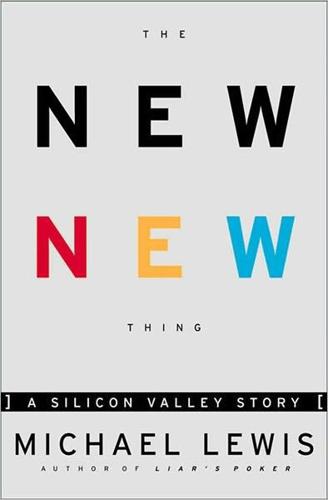
The New New Thing: A Silicon Valley Story
by
Michael Lewis
Published 29 Sep 1999
One evening as we sat in his kitchen I reminded Clark that he had said that once he became a real after-tax billionaire he'd retire. He said, without missing a beat, "I just want to make more money than Larry Ellison. Then I'll stop." This was news. I pointed out that he'd never before mentioned this ambition. "I just want to have more money than Larry Ellison," he said again. "I don't know why. But once I have more money than Larry Ellison, I'll be satisfied." Larry Ellison, the CEO of Oracle, the biggest Page 260 software company in the Valley, was worth about nine billion dollars; Clark was worth a bit more than three billion. On the other hand, Ellison's wealth was completely tied up in Oracle stock, which had mostly missed out on the boom.
…
His temperament did not belong in a man of his size. He was as agitated as a mongoose eyeing a cobra. This agitation could be deeply unsettling to others. Rich Karlgaard, the publisher of Forbes and a longtime observer of Silicon Valley, once said that there were only three men in the Valley who were physically intimidating. Larry Ellison, who ran Oracle, Gerald Saunders who ran Advanced Micro Devices, and Clark, who ran himself. That statement was both strange and true. It was strange because though Clark had a temper he was never violent. It was true because people often were terrified of Clark, even if they didn't fear being hit.
…
The general idea was to sell their software first to rich technophiles and then, gradually, infiltrate the minds of the middle-class owners of suburban tract houses. In one of his messages written about the time Hyperion left its dock, Steve informed his fellow programmers of a big-time CEO who might want to help create, as Steve put it, "a package which he can sell as part of a big custom installation to the Larry Ellisons of the world [i.e., rich technologists]. Ultimately I think this technology could be sold as more of a standard product, maybe via franchises. One interesting example was big vacation homes in Hawaii where the owners would like to log in to the house over the web and see if the pool's warm and the cleaners are not fucking in the master bed."
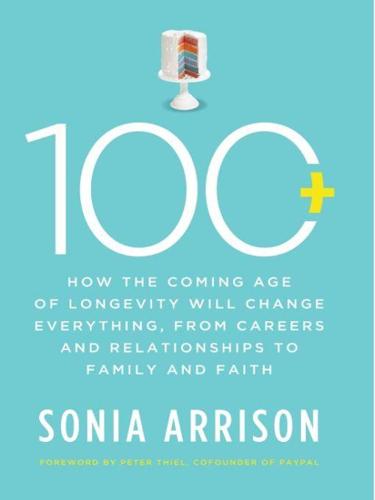
100 Plus: How the Coming Age of Longevity Will Change Everything, From Careers and Relationships to Family And
by
Sonia Arrison
Published 22 Aug 2011
Those who have already made it big in the technology industry have not failed to notice. Aside from Bill Gates and Jeff Bezos, other tech titans who are driving interest in the longevity meme include Oracle’s Larry Ellison, PayPal cofounder Peter Thiel, Google’s Larry Page and Sergey Brin, and Microsoft cofounder Paul Allen. TECH TITANS TAKING ON BIOLOGY “Death has never made any sense to me,” Larry Ellison told investigative reporter Mike Wilson, who wrote an authorized biography of the so-called bad boy of Silicon Valley. “How can a person be there and then just vanish, just not be there?. . . Death makes me very angry.
…
Craig Venter and Daniel Gibson, “How We Created the First Synthetic Cell,” Wall Street Journal, May 26, 2010, http://online.wsj.com/article/SB10001424052748704026204575266460432676840.html. 61 Ibid. 62 See http://groups.google.com/group/diybio/?pli=1. 63 Mike Wilson, The Difference Between God and Larry Ellison: *God Doesn’t Think He’s Larry Ellison (New York: HarperBusiness Paperback, 2003), 266. 64 www.ellisonfoundation.org/adsp.jsp?key=01misstmnt. 65 “Mr. Ellison said that he would have liked to do molecular biology as an alternative career, so Dr. Lederberg invited the software entrepreneur to work in his lab at Rockefeller in 1994.”
…
Through Google, Larry Page has given over $250,000 to Singularity University and has said that if he were a student, SU is where he’d want to be.67 Interestingly, his wife, Lucy Southworth, is a biologist who has written papers on aging issues, including one titled “Effects of Aging on Mouse Transcriptional Networks,” coauthored with Stanford’s Dr. Stuart K. Kim, who is a well-known aging expert and one of Larry Ellison’s award recipients.68 Sergey Brin is spreading the meme in a more personal way. 23andMe is a genomics company that was cofounded by Brin’s biologist wife, Anne Wojcicki, and has gone a long way toward popularizing the idea of personalized medicine. “Spit parties” are one of the cute marketing techniques the company uses to get the public interested in thinking about their DNA and how it might be fixed to cure disease.

Elon Musk
by
Walter Isaacson
Published 11 Sep 2023
“I made an offer”: Author’s interviews with Elon Musk, Kimbal Musk, Larry Ellison, Navaid Farooq, Jared Birchall, Claire Boucher (Grimes), Chris Anderson. Text messages, https://www.documentcloud.org/documents/23112929-elon-musk-text-exhibits-twitter-v-musk; Rob Copeland, Georgia Wells, Rebecca Elliott, and Liz Hoffman, “The Shadow Crew Who Encouraged Elon Musk’s Twitter Takeover,” Wall Street Journal, Apr. 29, 2022; Mike Isaac, Lauren Hirsch, and Anupreeta Das, “Inside Elon Musk’s Big Plans for Twitter,” New York Times, May 6, 2022. 74. Hot and Cold: Author’s interviews with Elon Musk, Larry Ellison, Kimbal Musk, Robert Steel, Leslie Berland, Jared Birchall.
…
“I need to shift my mindset away from being in crisis mode,” he told me, “which it has been in for about fourteen years now, or arguably most of my life.” It was a wistful comment, not a New Year’s resolution. Even as he made the pledge, he was secretly buying up shares of Twitter, the world’s ultimate playground. That April, he snuck away to the Hawaiian house of his mentor Larry Ellison, founder of Oracle, accompanied by the actress Natasha Bassett, an occasional girlfriend. He had been offered a board seat at Twitter, but over the weekend he concluded that wasn’t enough. It was in his nature to want total control. So he decided he would make a hostile bid to buy the company outright.
…
Musk bucked this trend, largely because he wanted to have tight control of the manufacturing process. He believed that designing the factory to build a car—“the machine that builds the machine”—was as important as designing the car itself. Tesla’s design-manufacturing feedback loop gave it a competitive advantage, allowing it to innovate on a daily basis. Oracle founder Larry Ellison joined only two corporate boards, Apple and Tesla, and he became close friends with Jobs and Musk. He said they both had beneficial cases of obsessive-compulsive disorder. “OCD is one of the reasons for their success, because they obsessed on solving a problem until they did,” he says. What set them apart is that Musk, unlike Jobs, applied that obsession not just to the design of a product but also to the underlying science, engineering, and manufacturing.
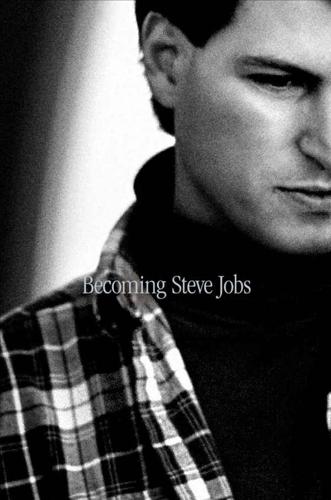
Becoming Steve Jobs: The Evolution of a Reckless Upstart Into a Visionary Leader
by
Brent Schlender
and
Rick Tetzeli
Published 24 Mar 2015
They watched the whole thing, even though only about half of it was fully completed, with the rest filled in by line drawings or semi-complete renderings. When it was over, Steve told me that the Pixar board of directors hadn’t even seen this much of the movie. I took that with a grain of salt. (Lasseter later told me that Steve showed it to everyone: “He was impossible!” Steve’s friend Larry Ellison, the billionaire founder of Oracle, said he saw eleven different versions.) Steve quickly turned from me to the kids. He was busy conducting market research, Steve Jobs–style. “Whaddya think?” he asked the girls. “Is it as good as Pocahontas?” Greta and Fernanda nodded vigorously. “Well, then, is it as good as The Lion King?”
…
But this time his sophistry was recognized as such by the media—and by those competitors, like Microsoft, who supposedly did not exist. Steve did not shut down the entire company. Just as he had never given up on Pixar, he never quite gave up on NeXT. And just as he had at Pixar, he decided to play out two separate end strategies. He halfheartedly pitched the company to Sun (again), Hewlett-Packard, and even Larry Ellison’s Oracle, but nothing ever came through. At the same time, he kept pushing Avie Tevanian and his software team hard. Steve genuinely believed he had the sharpest team of operating system software engineers in the business, and he still hoped that the workstation world might embrace the NeXTSTEP operating system.
…
Indeed, the reason Steve had held on to one share of Apple stock for the previous decade was to be able to keep getting shareholder information materials and, if the spirit moved him, to be able to attend the annual shareholders meeting. He hadn’t cut the cord completely. In 1995, his billionaire friend Larry Ellison had suggested the idea of making a hostile bid to buy the company outright so they could take it private and run it as they saw fit. Ellison had even offered to raise the bulk of the money, so Steve wouldn’t have to risk his own resources (Pixar hadn’t yet gone public). “Steve’s the only one who can save Apple,” he told me.

The New Class Conflict
by
Joel Kotkin
Published 31 Aug 2014
.’: A Legacy of Continued Bad Behavior at Google,” Huffington Post, May 16, 2012, http://www.huffingtonpost.com/eric-k-clemons/google-privacy-case_b_1522874.htm. 20. Luisa Kroll and Kerry A. Dolan, eds., “The Forbes 400: The Richest People in America,” profile no. 3, “Larry Ellison,” Forbes, http://www.forbes.com/profile/larry-ellison. 21. Kroll and Dolan, “The Forbes 400,” profile no. 1, “Bill Gates,” Forbes, http://www.forbes.com/forbes-400/gallery/bill-gates. 22. Romain Dillet, “Zuckerberg Now Owns 29.3 Percent of Facebook’s Class a Shares and This Stake Is worth $13.6 Billion,” TechCrunch, February 15, 2013, http://techcrunch.com/2013/02/15/zuckerberg-now-owns-29-3-percent-of-facebook-representing-18-billion; Kroll and Dolan, “The Forbes 400,” profile no. 20, “Mark Zuckerberg, Forbes, http://www.forbes.com/profile/mark-zuckerberg. 23.
…
The largest automotive company, General Motors, doesn’t have a single direct shareholder with over 1 percent of the stock.18 In contrast, Sergey Brin, Larry Page, and Eric Schmidt control roughly two-thirds of the voting stock in Google.19 Brin and Page alone are worth over $20 billion each. Larry Ellison, the founder of Oracle, owns just under 23 percent of his company and is worth over $50 billion; in 2013 Forbes ranked him the country’s third richest man.20 Bill Gates, the country’s richest man, is worth $78 billion and still controls 7 percent of his firm.21 Mark Zuckerberg’s 29.3 percent stake in Facebook is worth upwards of $25 billion.22 As a result, like their far less admired counterparts on Wall Street, America’s elite tech firms—and their owners—have become fantastically cash rich.
…
Combined with the tech Oligarchy, they could well emerge as the dominant part of the twenty-first century’s economic elite, pushing aside fortunes made in energy, manufacturing, or housing.38 At the same time, the media itself, particularly in its most visible manifestations, is increasingly populated by the children of prominent politicians and by those who come from the ranks of the plutocracy. These include the offspring of the Reagans, GOP standard-bearer John McCain, various Kennedys, and Nancy Pelosi. In Hollywood, meanwhile, some of the new powerful producers come from the ranks of the ultra-rich, including heirs to the Pritzker fortune and the daughter of Oracle founder Larry Ellison, one of the world’s ten richest men.39 This creative community, as Daniel Bell observed over half a century ago, now serves as something of a permanent conscious “avant-garde.”40 As Thomas Frank has shown, even the term “hip,” once seen as anti-materialistic and hostile to the establishment, has devolved into an advertising technique.
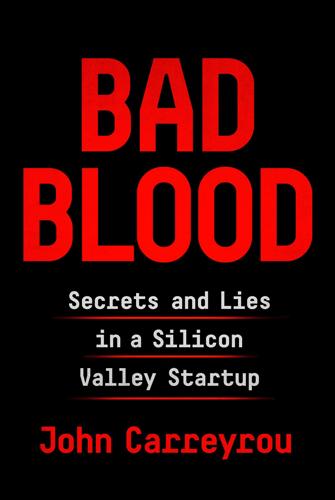
Bad Blood: Secrets and Lies in a Silicon Valley Startup
by
John Carreyrou
Published 20 May 2018
Theranos was far from his first rodeo. What had drawn Mosley to Theranos was the talent and experience gathered around Elizabeth. She might be young, but she was surrounded by an all-star cast. The chairman of her board was Donald L. Lucas, the venture capitalist who had groomed billionaire software entrepreneur Larry Ellison and helped him take Oracle Corporation public in the mid-1980s. Lucas and Ellison had both put some of their own money into Theranos. Another board member with a sterling reputation was Channing Robertson, the associate dean of Stanford’s School of Engineering. Robertson was one of the stars of the Stanford faculty.
…
At the company Christmas party in a Palo Alto restaurant in late 2006, Elizabeth got too tipsy to go home on her own, so she called Sunny and asked him to come pick her up. That’s when Ed learned that they were living together in a condo a few blocks away. Sunny wasn’t the only older man giving Elizabeth advice. She had brunch with Don Lucas every Sunday at his home in Atherton, the ultrawealthy enclave north of Palo Alto. Larry Ellison, whom she’d met through Lucas, was also an influence. Lucas and Ellison had both invested in Theranos’s second funding round, which in Silicon Valley parlance was known as a “Series B” round. Ellison sometimes dropped by in his red Porsche to check on his investment. It wasn’t uncommon to hear Elizabeth start a sentence with “Larry says.”
…
The old man treated her like a granddaughter. A portly gentleman with white hair who liked to wear broad-brim hats, Don was in his late seventies and was part of an older generation of venture capitalists who approached venture investing as if it were a private club. He’d mentored one famous entrepreneur in Larry Ellison. In Elizabeth, he clearly thought he’d found another. Except Avie didn’t think it was good corporate governance to do what Elizabeth wanted. Since she would control the foundation, she would also control the voting rights associated with the new stock, which would increase her overall voting stake.

Fire in the Valley: The Birth and Death of the Personal Computer
by
Michael Swaine
and
Paul Freiberger
Published 19 Oct 2014
The Hustler At the time that Philippe Kahn was writing software for André Truong Trong Thi’s Micral microcomputer, Lawrence Joseph Ellison, a fast-talking programmer from Chicago, had just landed a job at Ampex, a video- and audio-equipment manufacturer in Silicon Valley. Four years earlier, Lee Felsenstein had left Ampex to write for the counterculture publication The Berkeley Barb. But Larry Ellison was no 1960s revolutionary. When Ampex got a contract to develop a tape storage system for the CIA, Ellison was thrilled to be working on the project, which the CIA code-named Oracle. Ellison was definitely Type-A entrepreneur material: aggressive, bright, fearless, arrogant, and mercenary. In June 1977, Ellison’s energy and drive led him to start his own company.
…
An alternative to the usual flat-file model, in which no structure exists that governs the relationship among database entries, the relational model was largely untested. The relational database model required computing horsepower well beyond the capability of the microcomputers of the time. But microcomputers were not yet part of Larry Ellison’s world. Ellison’s company, SDL, which soon changed its name to Relational Software Inc. and then again to Oracle, was planning to market a minicomputer database program that would sell “like donuts,” Ellison said. He had been telling everyone that he was going to become a billionaire, and to get there he knew he’d have to sell software to everybody.
…
Gates’s firm had a new operating system called Windows NT, which was intended to give business PCs all the power of workstations. McNealy decided to wage not only a technical war but also a public-relations war. In public talks and interviews, he ridiculed Microsoft and its products. Along with Oracle CEO Larry Ellison, he tried to promote a new kind of device, called a network computer, which would get its information and instructions from servers on the Internet. This device did not immediately catch on. But Sun had a hidden advantage in the consumer market—its early, foursquare advocacy of networks. People were repeating its slogan, “the network is the computer,” and it seemed prescient as the Internet emerged.
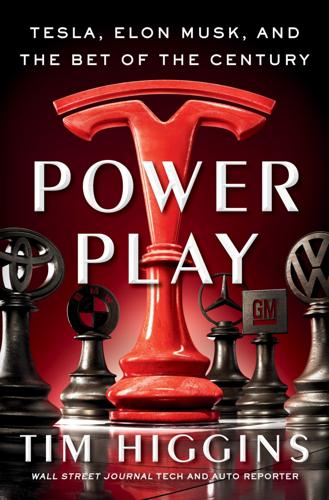
Power Play: Tesla, Elon Musk, and the Bet of the Century
by
Tim Higgins
Published 2 Aug 2021
Many of the features that had previously been standard were now add-ons; previous add-ons became even more expensive. Going forward, the Roadster would start at $109,000, with about $20,000 worth of additional options available. That was a dramatic increase from the $80,000 starting price that had been detailed when the Roadster was first revealed in 2006. Responses were mixed. Billionaire Larry Ellison, the co-founder of Oracle, told the team he wanted to configure his car so that it was as expensive as possible to help them generate whatever revenue they needed. One customer posted the price-increase email on his personal blog along with his accommodating reply. “We complained a lot but, in the end picked a set of options and agreed to pay the price increase because we want Tesla to be successful and we want our car as soon as possible,” wrote Tom Saxton, a vocal early-reservation holder, part of the grassroots community surrounding Tesla that had taken root on internet chatrooms and blogs.
…
CEO Masayoshi Son was on the verge of controlling a nearly $100 billion fund that was intended to rewrite the rules of investing in Silicon Valley and pick world-changing winners, infusing them with the kinds of cash that a generation ago would’ve seemed impossible in the private market. Goldman thought a meeting between Musk and Son might be fruitful. A matchmaker was found for the two: Larry Ellison, co-founder of Oracle. He lived near Son’s Silicon Valley home and was friendly with both men. He’d been an excited customer of the Roadster in the early days and had quietly amassed a sizable chunk of Tesla shares. In March, a conference room on the second floor of the Fremont factory overlooking the assembly line was converted into a dining room.
…
Will be way smoother & less disruptive as a private company. Ends negative propaganda from shorts.” The next day the Securities and Exchange Commission opened an investigation. * * * — Musk and Masayoshi Son of SoftBank may not have hit it off, but after the heady dinner that Musk’s friend and investor Larry Ellison had assembled at the Fremont factory in March 2017, the Saudis had kept in touch with Musk. As his war with the short sellers moved through July 2018, the fund requested a meeting. Musk met with them on Tuesday evening, July 31, a day ahead of announcing Tesla’s second-quarter results, in which he promised to continually turn a profit going forward, and a week before the tweet heard around the internet.
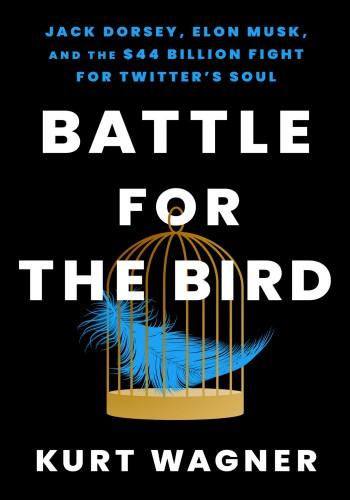
Battle for the Bird: Jack Dorsey, Elon Musk, and the $44 Billion Fight for Twitter's Soul
by
Kurt Wagner
Published 20 Feb 2024
The more time he spent with Twitter’s board, the less impressed he became. Some of his close friends and family, including his brother Kimbal, were urging him to reconsider his decision. On the morning he was supposed to officially join the board, Musk was in Hawaii staying on Lanai, his friend Larry Ellison’s private island. It was three thirty in the morning and Musk was in the midst of an all-nighter when he opened Twitter and decided to torch the company he had agreed to work with. Musk found a tweet that listed the ten most-followed Twitter accounts on the service—folks like Justin Bieber, Katy Perry, and Taylor Swift.
…
He promised to make dramatic cost cuts at Twitter, including layoffs, if the deal went through, and discussed the idea of expanding Twitter’s business to focus more on subscriptions. Billionaires typically know a lot of other billionaires, and Musk’s Rolodex also proved handy. In some cases, like with Oracle founder and Tesla board member Larry Ellison, a billion-dollar commitment came together as quickly as if Musk was asking to borrow five dollars for a cup of coffee. Musk texted Ellison on April 20, one week after sending the offer letter to Twitter’s board: MUSK: Any interest in participating in the Twitter deal? ELLISON: Yes… of course MUSK: Cool MUSK: Roughly what dollar size?
…
He’s an “Ultra Genius and doer builder,” Grimes claimed, and more importantly, he was very interested in working with Musk. “It could get us 5bn equity in an hour,” Grimes added. Musk agreed to get together. “So long as I don’t have to have a laborious blockchain debate,” he replied. Musk, meanwhile, was working his own network. He’d already hooked his pal Larry Ellison, and now he turned to other tech heavyweights. He exchanged texts with Reid Hoffman, the venture capitalist and cofounder of LinkedIn, suggesting his firm put in $2 billion. Musk asked his friend David Sacks, another VC and a former executive at PayPal, if he was open to an investment. Jason Calacanis offered to fundraise on Musk’s behalf.

Hawaii Travel Guide
by
Lonely Planet
On Maui, Kauaʻi, Hawai‘i the Big Island and Molokaʻi, infrequent public buses primarily serve commuters and residents. Bicycle Not practical for island-wide travel due to narrow highways, heavy traffic, high winds and changeable weather. What’s New Lanaʻi On this ex-pineapple-plantation island, tech billionaire Larry Ellison has been keeping construction workers busy with upgrades to everything from the luxury Four Seasons resorts to the local supermarket. Even Lanaʻi City’s historic movie theater has been transformed into a state-of-the-art media center. Pie-in-the-sky plans to spur 'green growth' include solar energy, a desalination plant and small farms.
…
Locavore Heaven Grass-fed beef from Upcountry pastures, day-boat fish and bountiful organic gardens ensure Mauiʻs chef-driven restaurants always have the raw ingredients to whip up their famed Hawaii Regional Cuisine creations. Lanaʻi South Pacific Ignoring the great views of other islands, Lanaʻi feels like an isolated bit of subtropical pleasure far from the rest of the world. And given that new owner Larry Ellison wants to make the island self-sufficient, its sense of remoteness will only increase. Pineapple Town Nearly the entire island was planted with pineapples, which were exported around the world, for much of the 20th century. The crops are gone but the vintage plantation town of Lanaʻi City is timeless.
…
And therein lies the charm of Lanaʻi, a small island (at its widest point only 18 miles across) that's an off-the-beaten-path destination. Hidden beaches, archaeological sites, oddball geology and a sense of isolation let you get away from it all, without going far. Of course, looming over Lana‘i is billionaire owner Larry Ellison, who is determined to transform the island, even if the details change by the week. When to Go ANov–Mar Jackets are needed at night in lofty, temperate Lanaʻi City, while the beaches stay balmy. AApr–Aug Winter rains have stopped and the entire island enjoys breezy tropical comfort. ASep–Oct Lanaʻi City stays in the sunny 70s (°F), while Hulopoʻe Beach is in the lovely low 80s.
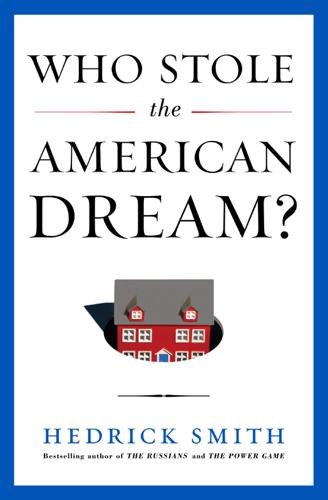
Who Stole the American Dream?
by
Hedrick Smith
Published 10 Sep 2012
Melrose: Caring About People: Employees and Customers,” Ethix, October 1, 2007, http://ethix.org; and Ken Melrose, “2005 Minnesota Business Hall of Fame,” Twin Cities Business, July 2005, http://www.tcbmag.com. 54 The top echelons of business Jon Bakija, Adam Cole, and Bradley T. Heim, “Jobs and Income Growth of Top Earners and the Causes of Changing Income Inequality: Evidence from U.S. Tax Return Data,” research paper (Bloomington: School of Public and Environmental Affairs, Indiana University, November 2010), http://www.indiana.edu. 55 Larry Ellison Graef Crystal, “Larry Ellison Rides Again!” Crystal Report on Executive Compensation, July 13, 2009, http://www.graefcrystal.com. 56 A Wall Street Journal compilation John S. Lublin and Scot Thurm, “Behind Soaring Executive Pay, Decades of Failed Restraints,” The Wall Street Journal, October 12, 2006. In his three big years, Weill was paid $230.5 million in 1997, $166.9 million in 1998, and $224.4 million in 2000. 57 The idea sprang Michael C.
…
CHAPTER 8 THE WEALTH GAP THE ECONOMICS “OF THE 1%, BY THE 1%, FOR THE 1%” The fact is that income inequality is real—it’s been rising for more than 25 years. —PRESIDENT GEORGE W. BUSH By 2004, the richest 1 percent of Americans were earning about $1.35 trillion a year—greater than the total national incomes of France, Italy, or Canada. —ROBERT FRANK, Richistan It is absolutely excessive…. But it’s amazing what you can get used to. —LARRY ELLISON, Oracle CEO, on his 454-foot yacht IN THE FALL OF 2005, Citigroup put out a glossy investment brochure with a boldfaced heading, WELCOME TO THE PLUTONOMY MACHINE, that advised its clients: “There is no ‘average consumer’ in a plutonomy…. Economic growth is powered by and largely consumed by the wealthy few.”
…
For investments, they don’t buy mutual funds; they buy timber, land, oil rigs, and office towers. In the Billionaireville of thirty-thousand-square-foot mansions, private jets, and elite art collections, Frank reports, “luxury fever” is the norm. The hyper-rich compete with ever more expensive toys, such as Oracle CEO Larry Ellison’s 454-foot yacht, Rising Sun, which is loaded with sports complexes, a cinema, a speedboat, a helicopter pad and a crew of thirty. “It is absolutely excessive. No question about it,” Ellison admitted to a writer for Vanity Fair. “But it’s amazing what you can get used to.” The outlandishly conspicuous consumption of the super-rich might seem merely a shocking gossip tidbit—except that as economist Robert H.
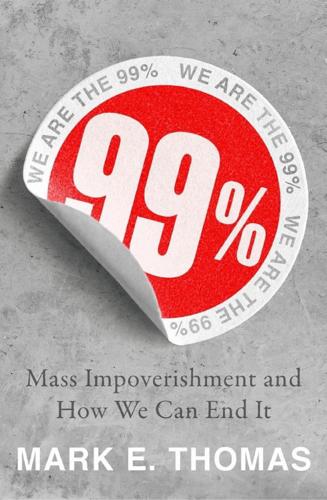
99%: Mass Impoverishment and How We Can End It
by
Mark Thomas
Published 7 Aug 2019
It was widely reported, for example, that the Saudi Prince Alwaleed bin Talal Al Saud was deeply upset by Forbes’ ranking of his wealth in the 2013 billionaires list.7 He believed he should have been listed among the ten richest people in the world but Forbes disagreed.8 A quick glance at that list for 2016 shows the following: Figure 44: The ten richest people in the world in 2016 Rank Name Net Worth ($ billions) Increase needed to move up one place #1 Bill Gates 75 #2 Amancio Ortega 67 12% #3 Warren Buffett 60.8 10% #4 Carlos Slim Helú 50 22% #5 Jeff Bezos 45.2 11% #6 Mark Zuckerberg 44.6 1% #7 Larry Ellison 43.6 2% #8 Michael Bloomberg 40 9% #9= Charles Koch 39.6 1% #9= David Koch 39.6 1% Source: Forbes9 The average increase in wealth required to move up just one place is 8 per cent – a considerable undertaking against a moving target. Larry Ellison, for example, is extraordinarily wealthy but Bill Gates has almost twice as much wealth. Even though neither of them is constrained in their lifestyles, it is a reasonable assumption that Larry Ellison is painfully aware of the gap between himself and Bill Gates.
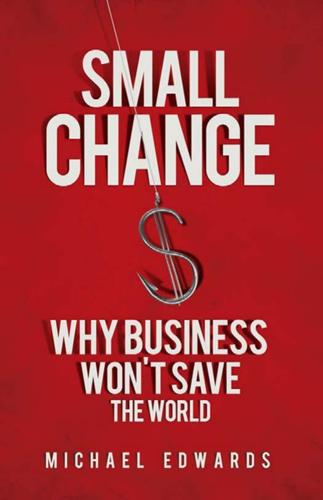
Small Change: Why Business Won't Save the World
by
Michael Edwards
Published 4 Jan 2010
It has been nicknamed philanthrocapitalism by Matthew Bishop and Michael Green1, and its followers believe that business thinking and market methods will save the world — and make some of us a fortune along the way. Bobby Shriver, Bono’s partner in the Red brand of products, hopes that sales will help “buy a house in the Hamptons” while simultaneously swelling the coffers of the Global Fund to Fight AIDS, Tuberculosis and Malaria.2 Larry Ellison, who founded Oracle, thinks that “the profit motive could be the best tool for solving the world’s problems, more effective than any government”3 — until government has to bail you out, of course, as it did for large swaths of American finance and industry in the aftermath of the financial crash in September 2008.
…
In this book, I won’t be focusing on non-U.S. examples like these because so little rigorous information is available on their efforts, but it is clear that the influence of philanthrocapitalism is spreading from the United States to other parts of the world, just as in earlier generations of philanthropy. The four richest people in the world are philanthrocapitalists — Bill Gates, Warren Buffett, Carlos Slim, and Larry Ellison, with combined assets of $135 billion, more than the gross domestic product of some of the world’s most populous countries, including Nigeria and Bangladesh.6 Not all philanthrocapitalists are rich (we’ll meet some of them in chapter 2), and not all rich philanthropists subscribe to these methods and approaches, but the basic message of this movement is pretty clear: Traditional ways of solving social problems do not work, so business thinking and market forces should be added to the mix.
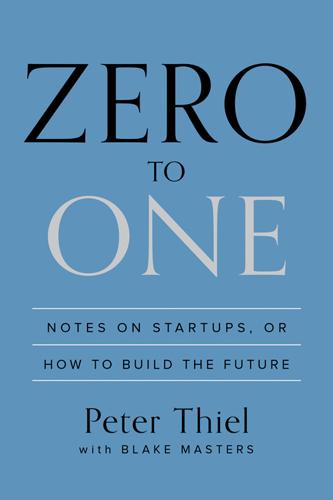
Zero to One: Notes on Startups, or How to Build the Future
by
Peter Thiel
and
Blake Masters
Published 15 Sep 2014
—these companies totally lost sight of the wider question of whether the online pet supply market was the right space to be in. Winning is better than losing, but everybody loses when the war isn’t one worth fighting. When Pets.com folded after the dot-com crash, $300 million of investment capital disappeared with it. Other times, rivalry is just weird and distracting. Consider the Shakespearean conflict between Larry Ellison, co-founder and CEO of Oracle, and Tom Siebel, a top salesman at Oracle and Ellison’s protégé before he went on to found Siebel Systems in 1993. Ellison was livid at what he thought was Siebel’s betrayal. Siebel hated being in the shadow of his former boss. The two men were basically identical—hard-charging Chicagoans who loved to sell and hated to lose—so their hatred ran deep.
…
So Ellison was probably thrilled when in 1996 a small database company called Informix put up a billboard near Oracle’s Redwood Shores headquarters that read: CAUTION: DINOSAUR CROSSING. Another Informix billboard on northbound Highway 101 read: YOU’VE JUST PASSED REDWOOD SHORES. SO DID WE. Oracle shot back with a billboard that implied that Informix’s software was slower than snails. Then Informix CEO Phil White decided to make things personal. When White learned that Larry Ellison enjoyed Japanese samurai culture, he commissioned a new billboard depicting the Oracle logo along with a broken samurai sword. The ad wasn’t even really aimed at Oracle as an entity, let alone the consuming public; it was a personal attack on Ellison. But perhaps White spent a little too much time worrying about the competition: while he was busy creating billboards, Informix imploded in a massive accounting scandal and White soon found himself in federal prison for securities fraud.

Live Work Work Work Die: A Journey Into the Savage Heart of Silicon Valley
by
Corey Pein
Published 23 Apr 2018
Maybe some kindly billionaire would put me up in exchange for a little song and dance. As we turned down Broadway, the mansions grew bigger and even more ostentatious. One house was adorned with a giant robot boasting an impressive mechanical dong. The silvery cock wagged in the direction of Oracle founder Larry Ellison’s mansion across the street. Was this some decorative commentary on Ellison’s reputation as a massive prick? The robot’s owner happened to be married to the daughter of Ellison’s late Oracle cofounder, Bob Miner, and the art installation was widely assumed to represent some filial beef, although the owners rejected that interpretation in a Vanity Fair dispatch from the neighborhood.
…
The robot’s owner happened to be married to the daughter of Ellison’s late Oracle cofounder, Bob Miner, and the art installation was widely assumed to represent some filial beef, although the owners rejected that interpretation in a Vanity Fair dispatch from the neighborhood. One holiday season, the robot, named Goliath, was brutally beaten. According to the San Francisco Chronicle, police found “a trail of robot pieces—including a Santa hat—that led across the street, in the direction of the home of Oracle founder Larry Ellison.” Apparently, Ellison’s college-age daughter Megan Ellison had thrown a party the night of the attack. Putting two and two together, it appears a couple of revelers may have been the attackers. Mercifully, Goliath’s appendage was left unharmed. Not far from Ellison’s place on Broadway was a seven-bedroom rental property valued at $8 million.
…
The author of this bloodthirsty screed was no illiterate barstool general. Bradbury was a Harvard-educated programmer who had been an early employee at Oracle—the world’s second-largest software company after Microsoft. He went on to found Aeiveos, a private corporation devoted to quixotic life extension research, bankrolled by Oracle CEO Larry Ellison, who had a well-documented obsession with finding the real-life fountain of youth. Bradbury’s friends and business associates included luminaries of the transhumanism scene such as Kurzweil. When Bradbury died in 2011 at age fifty-four, the chairman of the transhumanist Institute for Ethics and Emerging Technologies, George Dvorsky, remembered the would-be nuclear genocidaire as a “generous, driven and often outspoken individual” who “railed against the needless deaths of people the world over.”

Palo Alto: A History of California, Capitalism, and the World
by
Malcolm Harris
Published 14 Feb 2023
We’re buying an idea,” an Oracle engineer recalls being told.4 Thanks to the Reagan defense buildup, Oracle had the time and money to develop its product, and eventually it did work. In 1983, Don Valentine and Sequoia Capital helped boost the firm onto the commercial market, and after the Oracle version 5 software debuted, in 1985—the eccentric CEO Larry Ellison started at version 2—the company went public, in a spring cluster with Microsoft and a new Palo Alto computer company called Sun. The personal computer was, from the first Alto with its Ethernet board, the interpersonal computer. When Andy Bechtolsheim built the computer board for the router Cisco appropriated, he was building a knockoff version of the fancy workstations donated by Xerox.
…
The CIA started its own venture capital program called In-Q-Tel, pumping tens of millions of dollars a year into early-stage national security tech from an office in Menlo Park.9 But that was a drop in the bucket compared to the billions in “nat sec” spending, including the new Department of Homeland Security. Silicon Valley’s self-styled anti-authoritarians got patriotic very fast. Leading the race was database contractor Oracle and its aggressive CEO, Larry Ellison. Within two months of the attacks Oracle had a new division dedicated to designing and selling homeland security and disaster recovery solutions, headed by a 32-year CIA veteran named David Carey, whose last agency title was executive director, number 3 on the organizational chart. “How do you say this without sounding callous?”
…
They worked through the aerospace and telecom big shots like Boeing, Lockheed, Raytheon, Northrop Grumman, AT&T, and Verizon, thereby avoiding even lenient direct oversight. These companies had to get their semiconductors somewhere, had to host their files on servers and manage databases; subcontracting was a good way to expand fast and flexibly, and they did. You were either with us or against us in the war on terror, the president said, and Larry Ellison more or less spoke for the sector when he joined the decade’s long “U-S-A” chant. Still, despite its role as the Western citadel of anticommunism and the world’s most exciting investment opportunity, Silicon Valley began as a minor partner in the George W. Bush coalition. The Cold War was over, and the region was still recovering after the dot-com crash.
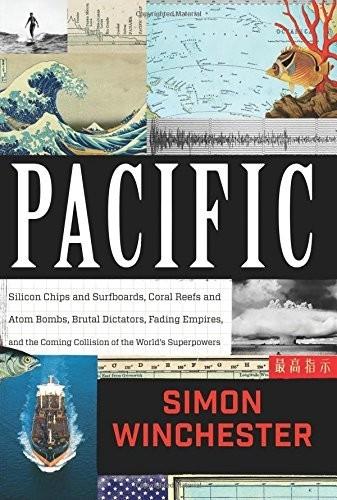
Pacific: Silicon Chips and Surfboards, Coral Reefs and Atom Bombs, Brutal Dictators, Fading Empires, and the Coming Collision of the World's Superpowers
by
Simon Winchester
Published 27 Oct 2015
For now, the Kiribati government is building sandbag seawalls, and hopes the ocean will perhaps calm itself and drop back to what the landlubbers regard as its proper level.7 Poised between those unsung and solitary figures who have wrought some measure of beneficial change (the Australian coral scientist, the Japanese albatross protector, the generations of nameless Hawaiian cloak makers) and the might and power of governments who hope to do so, too, is a scattering of others who occupy a different category altogether: a corps d’élite of the extremely rich, usually men, who entertain the wish to leave their own substantial mark on the planet. One man who has publicly declared his wish to make such an impression on the Pacific Ocean is Larry Ellison, the billionaire sea-loving founder of the Oracle Corporation. His ambition for immortality stems from his purchase in 2012 of nearly all of the somewhat played-out but delightfully shabby little Hawaiian island of Lana’i, which once was the Dole Food Company’s largest pineapple grove, and the largest such plantation in the world.
…
The company’s entire business was eventually bought by an elderly Californian named David Murdock, who built himself on Lana’i a handsome home and a fine Victorian-style orchid house for his prodigious collection; threw up two enormous hotels, one in the cool of Lana’i City and the other down by the ocean; and when he arrived on-island, progressed through town in a horse-drawn carriage expecting displays of adoring fealty from his plantation workers, whom he called “my children.” But Murdock soon tired of the island, as most unsentimental businessmen tend to tire of an entity that doesn’t make them serious money. So it was Murdock who did the eventual deal with Larry Ellison: for the three hundred million dollars he paid, Oracle’s boss got just about everything available on the island, except for the orchids—he did get the empty orchid house, though, which has since been refilled—and a prescriptive right that is still retained by Murdock, who at the time was energy-obsessed, to build a wind farm on a headland up in the island’s remote northeast.
…
It was Mark Brazil’s excellent small book The Nature of Japan that first led me to the work of Hiroshi Hasegawa and his heroic rescue of the albatross population of Torishima. Oxford’s Pitt Rivers Museum publishes an excellent online monograph describing the Hawaiian ceremonial cloaks in its possession. Jon Mooallem’s article on Larry Ellison’s purchase of and plans for the Hawaiian island of Lana’i in the New York Times Magazine of September 28, 2014, raised many hackles; much of what he observed confirms the impression I gained when I visited the island six months earlier. CHAPTER 10: OF MASTERS AND COMMANDERS Three books in particular set the scene for the current Chinese expansion of influence in the far western Pacific and the fretfulness it is causing in Washington: Bill Hayton’s The South China Sea; Robert Haddick’s Fire on the Water; and, by the always reliable Robert Kaplan, Asia’s Cauldron.
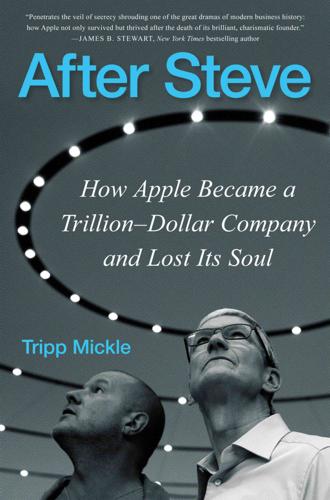
After Steve: How Apple Became a Trillion-Dollar Company and Lost Its Soul
by
Tripp Mickle
Published 2 May 2022
Chapter 6: Fragile Ideas Then he turned around: A few members of Apple’s design team remember the watch effort becoming official in this moment. Others recall a text exchange where the idea first circulated, and designer Julian Hönig building an initial model of a watch afterward. Oracle founder Larry Ellison: Charlie Rose, “Oracle CEO Larry Ellison: Google CEO Did Evil Things, Apple Is Going Down” (video), CBS News, August 13, 2013, https://www.cbsnews.com/news/oracle-ceo-larry-ellison-google-ceo-did-evil-things-apple-is-going-down/. The designer believed: Cambridge Union, “Sir Jony Ive | 2018 Hawking Fellow | Cambridge Union,” YouTube, November 28, 2018, https://www.youtube.com/watch?
…
THE WORLD OUTSIDE INFINITE LOOP was turning on Apple. In the months after Jobs died, impatient investors and customers wanted to know what product was coming next. Jobs’s practice of casting himself as the sole creator of the iPod, iPhone, and iPad had fueled doubt about what Apple could achieve without him. Oracle founder Larry Ellison, one of Jobs’s close friends, predicted that the company was destined for mediocrity and positioned for the type of long decline that had occurred after Jobs had left the company in the 1980s. “He’s irreplaceable,” he told Charlie Rose during a CBS interview. “They will not be nearly so successful, because he’s gone.”
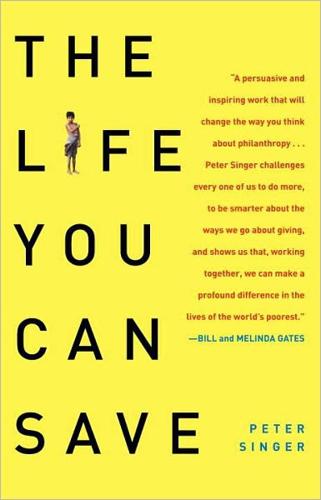
Life You Can Save: Acting Now to End World Poverty
by
Peter Singer
Published 3 Mar 2009
His lifestyle is, rather, symptomatic of our culture, and it is that culture that I wish to criticize. After all, Allen isn’t alone in enjoying such toys. Octopus has now slipped to sixth place in size, behind yachts owned by royalty from Dubai and Saudi Arabia, the Russian billionaire Roman Abramovich, and Larry Ellison, the chief executive officer of the software company Oracle. Ellison is another extravagant billionaire who could be doing a lot more good with his money; he has been quoted as saying “Money is just a method of keeping score.” Currently ranking at fourteen on Forbes’s list of the world’s richest, he is estimated to be worth $25 billion.
…
In a single hour, Rising Sun burns up as much diesel as the average American driver would need to drive a diesel-powered Volks wagen Jetta for seven years.10 In terms of smog-inducing nitrogen oxide emissions, the yacht engines are even worse: It would take the average American driver twenty years to drive a Jetta far enough to equal the nitrogen oxide emissions that Rising Sun emits in an hour. And all that fuel is being burned up not so that people can grow food, or get to work, or visit their loved ones, but so that Larry Ellison can amuse himself and show off how rich he is. It’s time we stopped thinking of these ways of spending money as silly but harmless displays of vanity, and started thinking of them as evidence of a grievous lack of concern for others. We need an ethical culture that takes account of the consequences of what each of us does for the world in which we are living, and that judges accordingly.

Troublemakers: Silicon Valley's Coming of Age
by
Leslie Berlin
Published 7 Nov 2017
Several insurance companies hoped the system might help with saving and reviewing documentation for claims, complaints, and reimbursements. In the end, only a few systems were installed, and the Videofile project was shut down. But Videofile was a fruitful failure; it helped to launch two major companies in brand-new industries. Larry Ellison, a cofounder of the database giant Oracle, worked on the Videofile system in the early 1970s. And Alcorn was about to meet the men who would found the world’s first wildly successful video game company, Atari.I Near the desk Alcorn had been assigned at Ampex, two men shared a small office. They made an odd pairing, Alcorn thought.
…
The venture capital community in Silicon Valley did not yet appreciate the importance of software. Today software accounts for more than half of venture capital investments in the Valley, but in 1977, the figure was 7 percent.24 Venture capital was for hardware: computers, semiconductors, disk drives, and other tangible, capital-intensive businesses. In 1977, when Larry Ellison and two cofounders tried to raise funds to launch Oracle—today one of the largest companies in the United States—venture capitalists were not interested. “When they heard the investment was about software, they wouldn’t even see me. In fact, their receptionists would search my briefcase to make sure I hadn’t taken a current copy of BusinessWeek with me when I left the room,” Ellison says.25 Kurtzig, who never used the word “software” in her 1976 business plan, would say she was in the “applications” business—in part because “software” was such an unfamiliar term that when she used it, people assumed that she sold lingerie.
…
Bechtolsheim had designed the workstation while a student at Stanford, so Niels Reimers’s Office of Technology Licensing received an invention disclosure.5 For years, Sun used MANMAN software, running on ASKNET, to track its materials resource planning.6 Sun, which at the turn of the millennium marketed itself as “the dot in dot-com,” crashed after failing dot-com companies canceled their orders for computers and servers. Sun, also facing competition from less expensive servers running Linux and Berkeley Unix operating systems, never recovered. In 2010, Oracle Corporation acquired Sun for $7.4 billion. Oracle’s cofounder and CEO was Larry Ellison, a former Ampex employee who had worked on the same Videofile system as Atari’s Al Alcorn, Nolan Bushnell, and Ted Dabney. When Facebook CEO Mark Zuckerberg left the Sun sign angled so that employees pulling out of the main campus parking lot could see it, he was sending them a message: take none of Facebook’s success—the wealth, the accolades, the free lunches, the pride you feel in your company’s name—for granted.
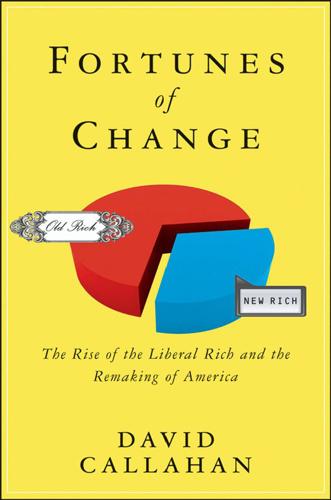
Fortunes of Change: The Rise of the Liberal Rich and the Remaking of America
by
David Callahan
Published 9 Aug 2010
In 1982, roughly 50 members of the Forbes 400 had college degrees. By 2006, 244 of those on the list had finished college and at least 132 had graduate degrees—or nearly a third of U.S. billionaires. That some of America’s richest people dropped out of college, such as Bill Gates, Steve Jobs, Michael Dell, and Larry Ellison, stands at odds with the broader trend. According to an analysis by Forbes, billionaires in the finance sector were the most educated group among the super-rich in 2006: 55 percent had graduate degrees. Attending an elite university seems to have much to do with getting rich, too. A 2008 analysis by Forbes found that 141 U.S. billionaires had gone to just five top schools for either undergraduate or graduate degrees: Harvard, Stanford, the University of Pennsylvania, Yale, and Columbia.
…
In any given issue of Vanity Fair, there are stories about Johnny Depp’s private island in the Caribbean or photos of George Clooney at his villa I 103 c05.indd 103 5/11/10 6:19:28 AM 104 fortunes of change on Lake Como or mention of the billionaire-owned mega-yachts that trawl the seas. (Paul Allen’s 416-foot Octopus has been spotted as far afield as Mombasa, Kenya, while the 453-foot Rising Sun, which is jointly owned by Larry Ellison and David Geffen, has turned up in Croatia, Sardinia, and St. Maarten.) But stereotypes of the rich as either neocolonists or jet-setters gloss over the complexity of attitudes that actually hold sway in the upper class. This group is anything but monolithic when it comes to America’s role in the world—and never has been.
…
The William Flora Hewlett Foundation is now among the top c08.indd 193 5/11/10 6:24:56 AM 194 fortunes of change five foundations in the United States and supports a wide array of progressive organizations. Steve Jobs isn’t alone in his lack of philanthropy. Amazon’s Jeff Bezos hasn’t gotten around to giving away large chunks of his wealth, either. Nor has Larry Ellison of Oracle, the third-richest man in the United States, or Microsoft’s Steve Ballmer, who was worth $14.5 billion in 2010. Inevitably, though, these and other giant tech fortunes will one day be harnessed to some kind of public purpose, as they are too big to be disposed of privately. Only then will we have a full picture of how the technology sector’s vast new wealth is likely to affect the United States and the world.

The Everything Blueprint: The Microchip Design That Changed the World
by
James Ashton
Published 11 May 2023
The proceeds of a £17m rights issue were used partly to eliminate bank borrowing. Acorn’s sales of computers and services into schools were suffering and telecoms providers had been slow to trial its digital interactive TV technology. One venture remained a source of hope and it involved an interesting character from Silicon Valley. Larry Ellison was the well-connected founder of Oracle, the database software firm, a sailing fanatic with bouffant brown hair, designer stubble and boxy suits. The Windows 95 operating system had just launched with great razzmatazz and Ellison wanted to create something that would break Microsoft’s stranglehold on personal computing.
…
It was frustrating: if Arm didn’t crystallise some of the value from the options handed to staff years earlier, Saxby feared the company would lose people and momentum. What changed was the appointment of Stan Boland as Acorn’s finance director that autumn. The young numbers man from the ICL computer group was inspired to join Acorn when he saw Larry Ellison hold aloft a new network computer at a conference in London and boast that it was designed in the UK. As soon as he started work, Boland discovered the NC contract with Oracle had been terminated. Inside the company, he encountered ‘an army of very capable, but rather disorganised engineers working on a variety of different projects, some of which were paid for and some which were not paid – a cornucopia of different things’.
…
The neoclassical-style property, set in a nine-acre hilltop estate, boasted a colonnaded pool house, tennis courts, manicured gardens, a detached library and panoramic views of the surrounding mountains. A short drive from the Stanford campus, Son had chosen to put down roots in one of the most exclusive neighbourhoods in Silicon Valley that counted Intel’s Gordon Moore, venture capitalist John Doerr and the Oracle chief executive Larry Ellison among its residents. The Internet of Things It was this sumptuous property that Simon Segars pulled up to on 27 June 2016, the latest in a series of meetings he had attended with Son over several years without ever really understanding their purpose. Some of them had taken place in tandem with Warren East, who had handed over Arm’s leadership to Segars in July 2013 after 12 years at the helm, having expanded the company’s range of licensees and, crucially, kept Intel at bay.

Move Fast and Break Things: How Facebook, Google, and Amazon Cornered Culture and Undermined Democracy
by
Jonathan Taplin
Published 17 Apr 2017
As Ben Tarnoff, writing in the Guardian noted, one of the reasons Peter Thiel was drawn to Donald Trump’s authoritarian candidacy was that “he would discipline what Thiel calls ‘the unthinking demos’: the democratic public that constrains capitalism.” But for now there are few constraints on Tech capitalism. The monopoly profits of this new era have been very, very good to a few men. The Forbes 400 list, which ranks American wealth, places Bill Gates, Larry Ellison, Larry Page, Jeff Bezos, Sergey Brin, and Mark Zuckerberg in the top ten. The Silicon Valley venture capitalist Paul Graham (CEO of Y Combinator), in a 2016 blog post, was quite open about celebrating income inequality. He wrote, “I’ve become an expert on how to increase economic inequality, and I’ve spent the past decade working hard to do it.
…
Of the sixty-two richest people on the Forbes 400, twenty-six earned their fortunes from the media and tech businesses that are the subject of this book. The list of the top ten wealthiest people reads like our table of contents. 1. Bill Gates 2. Jeff Bezos 3. Warren Buffet 4. Mark Zuckerberg 5. Larry Ellison 6. Michael Bloomberg 7. Charles Koch 8. David Koch 9. Larry Page 10. Sergey Brin So only Warren Buffet and the Kochs do not owe their fortunes to technology. And only Buffet does not owe his wealth to the power of monopoly capitalism. During the 2012 election, Mitt Romney famously cast the Forbes 400 billionaires as “job creators,” but a look into the workforce of the technology business would indicate that this is not really the case.

The Future of Technology
by
Tom Standage
Published 31 Aug 2005
What has yet to sink in Actual 104 is that this downturn is some103 thing more than the bottom of 102 another cycle in the technol101 ogy industry. Rather, the 1 1960 65 70 75 80 85 90 95 2002 sector is going through deep Source: Intel structural changes which suggest that it is growing up or even, horrors, maturing. Silicon Valley, in particular, has not yet come to grips with the realities, argues Larry Ellison, the chief executive of Oracle, a database giant (who in his early 60s still sports a youthful hairdo). “There’s a bizarre belief that we’ll be young forever,” he says. It is not that Moore’s law has suddenly ceased to apply. In fact, Mr Moore makes a good case that Intel can continue to double transistor density every 18 months for another decade.
…
Mr Gerstner, who has spent most of his career outside the it industry, does not point fingers, but examples of the industry’s “bizarre practices”, as he puts it, are not hard to find. The most obvious one is Oracle, a database giant which had a near-death experience in 1991, having cut some reckless deals to meet expectations. The firm is also known to 20 COMING OF AGE have released software prematurely, most recently its e-business suite. And it is run by Larry Ellison, arguably the most colourful boss in the industry, and Jeff Henley, the archetype of a grandfatherly cfo. To be fair, it must be said that the company has matured greatly in recent years. In future, technology itself could lead to a better balance in the sector as a whole. The internet made it possible to run asps such as salesforce.com, but it also enabled hardware-makers to monitor servers and bill customers remotely on the basis of the average use per month.
…
POSTSCRIPT Since this section was published in 2003, the it industry has continued to mature and consolidate. There has been a series of mergers and takeovers, including Oracle’s purchase of PeopleSoft, the tie-up between Veritas and Symantec, Adobe’s purchase of Macromedia, and ibm’s sale of its pc division to Lenovo, a Chinese firm. Larry Ellison of Oracle has 39 THE FUTURE OF TECHNOLOGY acted as the cheerleader for the idea that the industry will never recapture the glories of its youth. “It’s not coming back,” he said in an interview in 2003. “The industry is maturing. The valley will never be what it was.” The material on pages 4–40 first appeared in a survey in The Economist in May 2003. 40 2 SECURING THE CLOUD THE FUTURE OF TECHNOLOGY Securing the cloud Digital security, once the province of geeks, is now everyone’s concern.
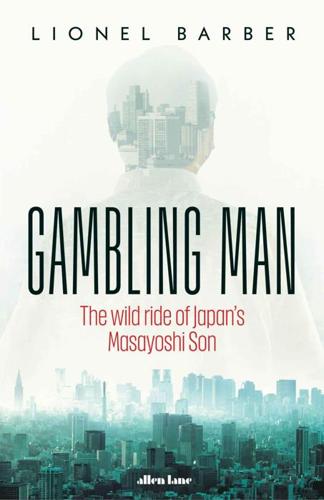
Gambling Man
by
Lionel Barber
Published 3 Oct 2024
But others like Kozmo.com, More.com, Shopping.com, SportsBrain and WebVan were like comets in the night sky. During this frenetic period, old friends and business partners like Jordy Levy detected a change in Masa’s behaviour. He mixed with the likes of Bill Gates, GE’s Jack Welch and Oracle’s Larry Ellison on the golf links and was no longer available for a slap-up dinner. ‘He had outgrown us,’ Levy recalled.16 That same month, June 1999, shareholders voted to make SoftBank a pure holding company, turning the parent company into a giant internet investment fund. SoftBank was now at the centre of a web of related companies, enjoying far more flexibility to raise capital and shuffle assets.
…
‘The people who are crazy enough to think they can change the world are the ones who do.’ Masa first encountered Steve Jobs in the mid 1980s at the annual Comdex trade fair in Las Vegas. Sometime in the summer of 1998, they had their first serious conversation under a cherry tree at the Woodside, California, home of Larry Ellison, boss of the Oracle software group and a fellow Japanophile.2 Ellison’s home was in fact more like a village, a compound of intricately fashioned wooden houses modelled after a Japanese emperor’s palace. The 23-acre estate took almost a decade to design and build, including a lake and a waterfall operated by an on-off switch.
…
The wedding celebrations took place at Borgo Egnazia in Puglia, a five-star resort on the southeast coast of Italy. Hollywood stars led by Brad Pitt, Ashton Kutcher and Demi Moore were among the guests. Over three days, they mixed with Silicon Valley’s richest led by Page, Brin, Mark Zuckerberg, and Larry Ellison of Oracle, all flying in by private jet. Masa was also present, though he steered clear of the scratch cricket match on the beach and other booze-filled festivities. One afternoon, he spotted Rajeev Misra. ‘Ah, Rajeev,’ said the SoftBank boss, embracing his former partner, ‘I’ve not seen you since the Vodafone Japan deal.
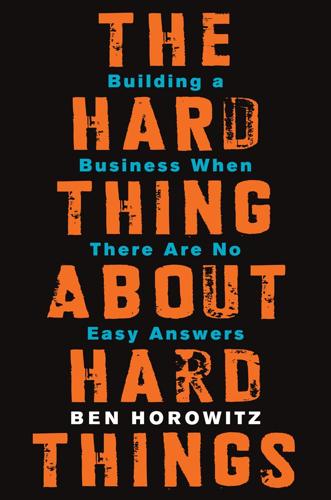
The Hard Thing About Hard Things: Building a Business When There Are No Easy Answers
by
Ben Horowitz
Published 4 Mar 2014
As late as November 1995, Bill Gates wrote a book titled The Road Ahead, in which he predicted that the Information Superhighway—a network connecting all businesses and consumers in a world of frictionless commerce—would be the logical successor to the Internet and would rule the future. Gates later went back and changed references from the Information Superhighway to the Internet, but that was not his original vision. The implications of this proprietary vision were not good for business or for consumers. In the minds of visionaries like Bill Gates and Larry Ellison, the corporations that owned the Information Superhighway would tax every transaction by charging a “vigorish,” as Microsoft’s then–chief technology officer, Nathan Myhrvold, referred to it. It’s difficult to overstate the momentum that the proprietary Information Superhighway carried. After Mosaic, even Marc and his cofounder, Jim Clark, originally planned a business for video distribution to run on top of the proprietary Information Superhighway, not the Internet.
…
You’ve already decided they can’t do it. Hiring scalable execs too early is a bad mistake. There is no such thing as a great executive. There is only a great executive for a specific company at a specific point in time. Mark Zuckerberg is a phenomenal CEO for Facebook. He would not be a good CEO for Oracle. Similarly, Larry Ellison does a terrific job at Oracle but he would not be the right person to manage Facebook. If you judge your team in advance and have a high sense of urgency, you will bring in executives who can manage at high scale in advance of needing them. Unfortunately, you will probably ignore their ability to do the job for the next twelve months, which is the only relevant measure.

I Hate the Internet: A Novel
by
Jarett Kobek
Published 3 Nov 2016
NetSuite was co-founded by a billionaire named Larry Ellison. (4) Corporate mobile data will double this year. Are you in control? This billboard advertised a company named Druva, which offered secure data integration across computers, tablets and mobile phones. Druva had raised funding from the venture capital firm Sequoia Capital. (5) Oracle Open World, Sept 22 - 26, San Francisco, #OOW13 This billboard advertised a conference dedicated to the products of Oracle, a company that sold database management software to other companies. Oracle was co-founded by a billionaire named Larry Ellison. (6) NetApp is the world’s #1 storage OS?

The Contrarian: Peter Thiel and Silicon Valley's Pursuit of Power
by
Max Chafkin
Published 14 Sep 2021
“Now is the time for optimism,” a Cantor Fitzgerald analyst told CNN. Startups like PayPal still had money in the bank, and there was a widespread sense, however unrealistic, that there was no cause for alarm and that the information revolution would march on. Beenz, the virtual currency startup, raised an additional $51 million from Larry Ellison and others to remake the financial system. In August 2000, The Guardian wrote that Flooz had a chance of realizing “Hayek’s dream of companies challenging governments for the right to issue money,” referring to Friedrich Hayek, the great libertarian economist. Those two companies wouldn’t run into serious trouble until the end of the year.
…
In an early scene, the Thiel character—who is known in the show as Peter Gregory and who shares Thiel’s affectless demeanor, his love for seasteading, and his disdain for elite universities—is successfully manipulated by a promising engineer who threatens to go to back to college. The show’s writers had been unsparing with other tech figures, incorporating aspects of the Google founders and Oracle’s Larry Ellison into the villainous Gavin Belson—a greedy big tech executive with a persecution complex and full-time spiritual adviser—and savagely mocking the investor and NBA team owner Mark Cuban, whose fictional double is obsessed with his own net worth and a failed but financially remunerative tech product he created in the 1990s.
…
On May 6, BuzzFeed reported that a number of the company’s prominent corporate clients had been firing it—recent departures included American Express, Coca-Cola, and NASDAQ. Around this time, Thiel was secretly attempting to arrange a sale to Oracle, the big database provider, with Michael Ovitz, the Hollywood mogul, who was friendly with both Thiel and Oracle cofounder Larry Ellison, playing the role of matchmaker. There was a lunch with the three men and another investor, Marc Abramowitz, but the potential deal fell through, and, as the presidential election heated up, Thiel needed a candidate who would ensure that his wealth would be protected, as well as one who would be open to buying the kind of software that Palantir was selling.

The Thinking Machine: Jensen Huang, Nvidia, and the World's Most Coveted Microchip
by
Stephen Witt
Published 8 Apr 2025
The only way to meet Carmack’s future needs was to multiply pipelines on a single silicon square. Before committing, though, Huang had to do his homework. He had to understand why the approach had failed so many times. Seymour Cray’s powerful parallel supercomputers were floundering, with customers complaining about their high costs and complexity. Larry Ellison, the founder of Oracle, had invested millions in the parallel start-up nCube; by the late 1990s, it was failing too. The issue was that programming in parallel was difficult—acting on two or more data streams at once required swapping between multiple memory banks, and the learning curve was steep.
…
Featuring a library, a gym, and a movie theater, it was one of the city’s most expensive homes. To the sanctified roster of Jobs, Bezos, Gates, and Zuckerberg, one could now add the name of Huang. His chips were so valuable that they were used as loan collateral, and demand for them brought powerful men to their knees. In late 2023, Huang met with Elon Musk and Oracle cofounder Larry Ellison for sushi at the Nobu restaurant in Palo Alto. Ellison and Musk had a collective net worth above $300 billion, yet in this rarefied company, Huang was demonstrably the alpha—the other two spent the entire meal pleading for Huang to ship them more AI chips. “Elon and I were begging, I guess is the best way to describe it,” Ellison recalled.

Amazon Unbound: Jeff Bezos and the Invention of a Global Empire
by
Brad Stone
Published 10 May 2021
The name “Redshift” was suggested by Charlie Bell, a former engineer for Boeing on NASA’s space shuttle and the senior vice president in charge of AWS’s operations; it’s the term for the change astronomers see in light, the fastest thing in existence, that’s emitted from a celestial object like a star as it moves away from the observer. Nonetheless, Larry Ellison, then the CEO of Oracle—whose logo happens to be red—saw it as corporate trash talk and began to see red himself. That “never even occurred to us,” Jassy said. “When we were told later that Oracle believed that, we thought it was kind of funny.” A bitter rivalry between Oracle and Amazon, already simmering with Amazon’s entry into databases, intensified.
…
“Then a customer would pay for that coat and they’d leave a review about the sleeves falling off in the first minute.” Gunningham, a member of the S-team, was in charge of global selling as well as FBA and the marketplace. He’d grown up on a ranch in Argentina, earned a mathematical sciences degree at Stanford University, and worked with Larry Ellison at Oracle and Steve Jobs at Apple before scoring a kind of high-tech hat trick by joining Jeff Bezos at Amazon. Colleagues said he was creative and empathetic—and a big thinker, in Amazon’s lexicon. Gunningham quickly recognized that the flood of Chinese merchandise would stir controversy among sellers in the West who would not be able to match the low prices.
…
At least nine tech companies, including Microsoft, IBM, and SAP America, banded together to protest that the process was biased in Amazon’s favor and to lobby Congress and the Pentagon to split the contract into multiple parts. One of those companies, Oracle, then went even further. Acting in the flamboyant and antagonistic style of its founder, Larry Ellison, Oracle sued the Department of Defense, challenging the legality of a single-winner award and sowing doubts about the sanctity of the process. Its complaint alleged that several Defense Department officials had either worked for or advised Amazon in the past and had improperly influenced JEDI.
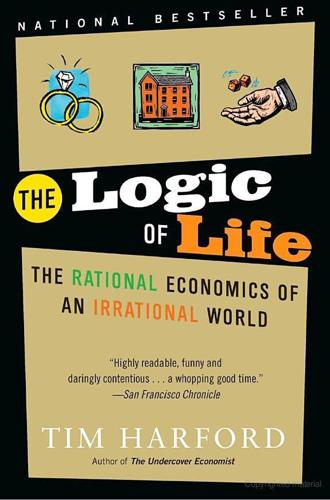
The Logic of Life: The Rational Economics of an Irrational World
by
Tim Harford
Published 1 Jan 2008
But we need to leave it behind in the quest to understand how that pay is structured. While much of Eisner’s pay may have been an attempt to motivate his ambitious lieutenants, to be fully effective the pay package should also have encouraged him to be honest, diligent, and smart. Did it? The really huge CEO payments that one reads about in the papers, such as Eisner’s, or Larry Ellison’s $706 million payout from Oracle in 2001, are almost always the result of stock options. Stock options, put simply, are contracts that allow their owners to buy shares at a specified price. If the actual price of the share rises above the price specified in the option contract, then the option can be cashed in for money.
…
Stock options seem like a sensible way of paying CEOs because the higher the company’s share price rises, the more valuable the options are. Stock options should encourage the CEO to put all his efforts into boosting the share price—and the share price is, after all, the market’s best guess at whether the company will make money in the future. The stock option revolution that culminated with Larry Ellison’s mega-payout arguably began with a dry academic paper published in 1990 by two economists, Michael Jensen and Kevin J. Murphy. The best way to understand the paper is to think about dining out at a restaurant with a big crowd of people and then splitting the check equally. As we all know, this can be a vexing experience.
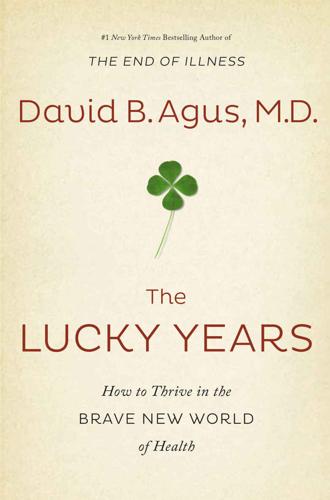
The Lucky Years: How to Thrive in the Brave New World of Health
by
David B. Agus
Published 29 Dec 2015
More praise for The Lucky Years “Dr. Agus describes how a series of scientific breakthroughs enables everyone to lengthen and improve their lives—a future in which our body’s natural mechanisms can be enlisted to fight disease and our genes can be edited to eliminate inherited ones. It is an inspiring vision.” —Larry Ellison, cofounder and executive chairman, Oracle Corporation “The Lucky Years is a steady dose of actionable knowledge about the one thing relatable to everyone: life. It’s the doctor-patient relationship we all want and deserve. Dr. Agus is a trusted voice in a field of uncertainty.” —Ashton Kutcher “It sometimes takes a genius to know the difference between what’s good and bad for us amid all the noise in health circles.
…
Your collective passion to understand and enlighten comes through every day. I am lucky to be a part of such a program. To my friends Dominick Anfuso, Marc Benioff, Glenn Boghosian, Yael Braun, Jerry Breslauer, Eli Broad, Sharon Brous, Bill Campbell, Steve, Jean and Stacey Case, Robert Day, Michael Dell, John Doerr, Bryce Duffy, Larry Ellison, Bob Evans, Sandy Gleysteen, Darryl Goldman, Jimmy (Taboo) Gomez, Al Gore, Brad Grey, Davis Guggenheim, Yoshiki Hayashi, Uri Herscher, Walter Isaacson, Peter Jacobs (and the CAA team), Ashton Kutcher, Jimmy Linn, Dan Loeb, Max Nikias, Fabian Oberfeld, Howard Owens, Chemi and Shimon Peres, Amy Powell, Robin Quivers, Bruce Ramer, Linda Ramone, Ed Razek, Shari Redstone, Sumner Redstone, Joe Schoendorf, Dov Seidman, Greg Simon, Bonnie Solow, Steven Spielberg, Tom Staggs, Elle and Paul Stephens, Gregorio Stephenson, Howard Stern, Meir Teper, Yossi Vardi, Jay Walker, David Weissman, Will.i.am, and Neil Young: your mentorship, friendship, and advice are appreciated beyond measure.
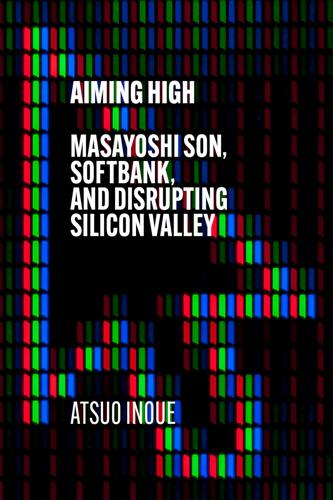
Aiming High: Masayoshi Son, SoftBank, and Disrupting Silicon Valley
by
Atsuo Inoue
Published 18 Nov 2021
Allen quit his job at Honeywell and Gates dropped out of Harvard to move to Albuquerque and start Microsoft. Steve Jobs and Steve Wozniak were also at the forefront of the emerging computer industry (they would go on to found Apple Computer Company in 1976), while Scott McNealy (Sun Microsystems) and Larry Ellison (Oracle) could also be said to be Son’s contemporaries. The digital information revolution was calling and all of these individual Damascus moments would lay the groundwork for it to become a reality. In September 1975, Son enrolled at Holy Names College, telling himself he had to really knuckle under and study.
…
The order from on high was an odd one. ‘By tomorrow morning I want you to cover one of the walls in my office with photos of all of my rivals.’ And so Otsuki did as he was told, plastering a wall with faces of technology sector entrepreneurs and giants of the IT sector such as Bill Gates, Scott McNealy, Steve Jobs, Larry Ellison and Philippe Kahn. When Otsuki asked why exactly Son wanted him to do such a thing, he replied, ‘Across the Pacific Bill, Scott, Larry and Steve are all putting a mighty shift in, achieving their own visions, and I want to be reminded of that every morning. It’s motivation and inspiration for me to go one further.’
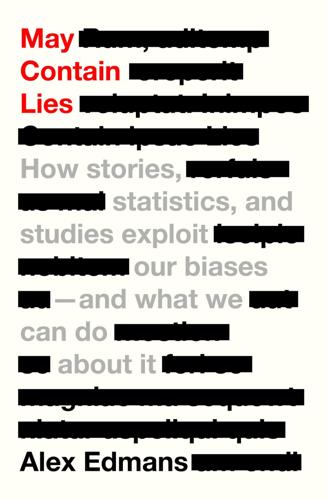
May Contain Lies: How Stories, Statistics, and Studies Exploit Our Biases—And What We Can Do About It
by
Alex Edmans
Published 13 May 2024
Founded in 2003 by Elizabeth Holmes, the medical start-up Theranos claimed it could perform hundreds of tests, including the diagnosis of several life-threatening diseases, from a finger-prick of blood. Investors injected over $700 million, including media mogul Rupert Murdoch, Oracle founder Larry Ellison and former US Secretary of State George Shultz. They’d all reached the top through a lifetime of scrutiny and scepticism – separating the few promising ideas from the hundreds that were pie-in-the-sky. For a small, portable machine to run two hundred simultaneous tests from a few drops of blood was stretching scientific plausibility, so it was essential to put Holmes’s claims under the microscope.
…
He identified a number of factors that he claimed were behind Jobs’s success, such as his adoption by the right parents, upbringing and focus. Chapter 1 is entitled ‘Childhood: abandoned and chosen’ and its first section is ‘The adoption’, so we’ll discuss the first factor, but the same concerns apply to the others. While Isaacson considers only Jobs, others have pointed out how Amazon’s Jeff Bezos4 and Oracle’s Larry Ellison were also adopted and deduce that adoption must drive success. Such a conclusion is based on facts. Jobs, Bezos and Ellison were all definitely adopted, and all ended up undeniably successful. However, these facts are meaningless, because facts are not data. You can’t just take a selected sample of adopted CEOs who made it big, just like you can’t focus only on frequent traders that brag about their winnings.
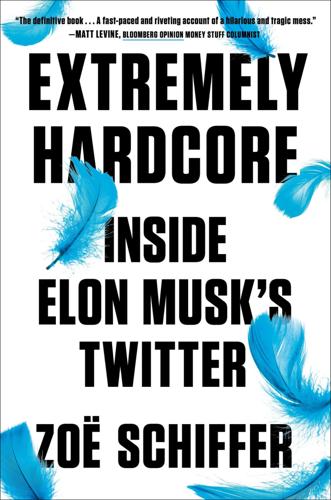
Extremely Hardcore: Inside Elon Musk's Twitter
by
Zoë Schiffer
Published 13 Feb 2024
CHAPTER 10 “I’d Jump on a Grande for You” Now that Elon Musk had offered to buy Twitter for $44 billion, he needed to come up with the money. He might’ve been the richest man in the world, with a net worth that hovered around $219 billion, but that wealth was relatively inaccessible, as much of it was tied up in Tesla stock. “Any interest in participating in the Twitter deal?” he asked his friend Larry Ellison, the billionaire CEO of Oracle, who sat on Tesla’s board and owned $1 billion of Tesla stock, on April 20. “Yes, of course,” Ellison responded. He suggested he could offer “a billion . . . or whatever you recommend.” Musk suggested $2 billion or more. “This has very high potential and I’d rather have you than anyone else,” he added.
…
Musk committed more than $30 billion in equity financing, which included his existing $4 billion stake in Twitter, close to $20 billion in cash after selling part of his stake in Tesla, and approximately $7 billion that he’d secured from investors, including the venture capital firm Andreessen Horowitz and his billionaire friend Larry Ellison. Jack Dorsey also agreed to roll over his 2.4 percent stake in Twitter, saving Musk approximately $1 billion. The rest of the funding came from major banks, which committed a whopping $13 billion in debt financing—a structure known as a leveraged buyout. Twitter borrowed money against its own assets, meaning the company—not Musk—would be on the hook if Twitter couldn’t make its interest payments, which would amount to roughly $1.5 billion a year.
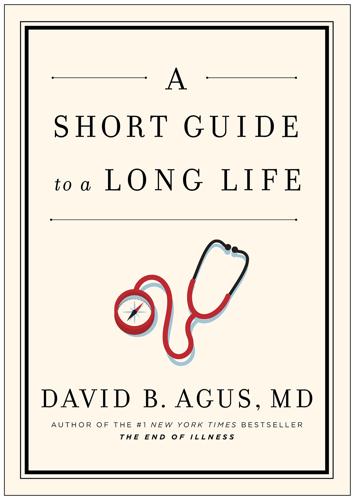
A Short Guide to a Long Life
by
David B. Agus
Published 7 Jan 2014
I also have to thank those who continue to support and inspire me on a regular basis, including Jeff Fager, Sandy Gleysteen, Gayle King, Jonathan LaPook, Chris Licht, Norah O’Donnell, Karolyn Pearson, David Rhodes, and Charlie Rose at CBS News, who empower me to be able to educate and inform. To Dominick Anfuso, Marc Benioff, Gerald Breslauer, Eli Broad, Bill Campbell, Michael Dell, Larry Ellison, Robert Evans, Murray Gell-Mann, Al Gore, Brad Grey, Davis Guggenheim, Danny Hillis, Walter Isaacson, Peter Jacobs, Clifton Leaf, Max Nikias, Fabian Oberfeld, Howard Owens, Shimon Peres, Maury Povich, Carmen Puliafito, Bruce Ramer, Sumner Redstone, Joe Schoendorf, Dov Seidman, Bonnie Solow, Steven Spielberg, Elle Stephens, Yossi Vardi, Jay Walker, David Weissman, and Neil Young: your mentorship, friendship, and advice are truly appreciated.
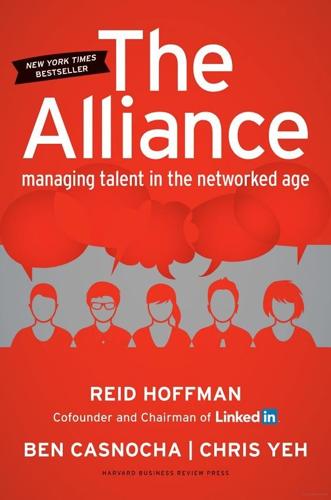
The Alliance: Managing Talent in the Networked Age
by
Reid Hoffman
,
Ben Casnocha
and
Chris Yeh
Published 15 Jan 2014
But an employee can buy into an inspirational company vision without thinking, “I want to spend the rest of my life pursuing this future” or “These company values encompass all of my values in life.” Even the most focused and successful business leaders have values and interests beyond their day job. Larry Ellison is passionate about winning the America’s Cup, while Amazon’s Jeff Bezos has funded projects like the 10,000 Year Clock and bought the Washington Post. The goal isn’t perfect congruence on all dimensions, but rather a healthy alignment for a finite scope and time frame. Alignment means that managers should explicitly seek and highlight the commonality between the company’s purpose and values and the employee’s career purpose and values.
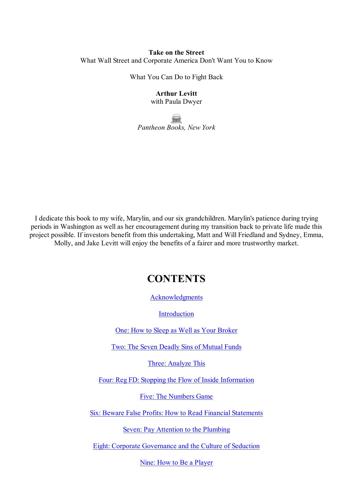
file:///C:/Documents%20and%...
by
vpavan
If Cisco Systems Inc. had expensed options for its 2001 fiscal year, for example, it would have had to reduce earnings by $1.7 billion, turning a $1 billion loss into a $2.7 billion deficit. Moreover, when employees exercise their options, companies get a hefty tax break on the difference between the grant price and the exercise price. Cisco's tax deduction in 2000 came to $1.4 billion, on top of a $2.5 billion tax break in 1999. In 2001 Oracle Corp. CEO Larry Ellison showed how options had failed as a tool to motivate managers to boost shareholder return, and instead had become a license to print money. Ellison reaped a record $706 million by cashing in his Oracle options in the same year that the software company missed earnings projections and its share price declined 57 percent.
…
It did not, for example, have a separate compensation committee (although it does now). Instead, important executive pay issues were referred to the full board, which could hardly give them the attention they deserved, or be as objective as a subcommittee of independent directors. One director, Oracle CEO Larry Ellison— Jobs's close friend— was invited to join the board in 1997, even though he warned the company that he would not attend most meetings. Since joining, Ellison has attended a little less than half of Apple's formal board meetings, an abysmal record. One member of Apple's audit committee, Jerome York, is the CEO of MicroWarehouse Inc., whose Mac Warehouse catalog was responsible for nearly $150 million of Apple's $5.4 billion in 2001 sales.
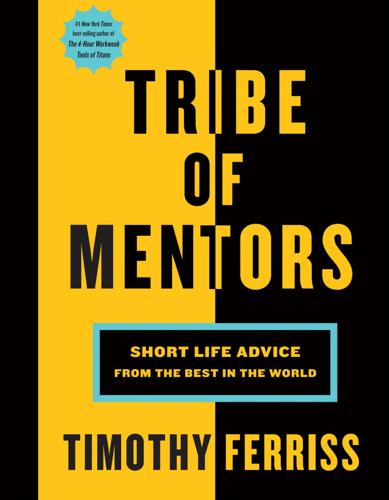
Tribe of Mentors: Short Life Advice From the Best in the World
by
Timothy Ferriss
Published 14 Jun 2017
I’ve never been satisfied that I had the last word, always felt certain there were further insights and nuances to be learned; To have a life-changing positive impact on those I coached; and To leave an enduring mark on the field of swim coaching, to leave the profession better off than I found it. At 66, I’m just as passionate and curious as I was at 21, if not more so, and I have no plans to retire. I can’t imagine anything else I might have done which would have brought greater fulfillment. “After starting my first job at Oracle . . . I ended up in Larry Ellison’s old office, which he didn’t entirely clean out, leaving behind some 40 copies of The Mythical Man-Month.” Marc Benioff TW: @Benioff salesforce.com MARC BENIOFF is a philanthropist and chairman and CEO of Salesforce. A pioneer of cloud computing, Marc founded the company in 1999 with a vision to create an enterprise software company with a new technology model based in the cloud, a new pay-as-you-go business model, and a new integrated corporate philanthropy model.
…
Marc is the author of three books, including the national bestseller Behind the Cloud, which details how he grew Salesforce from zero to $1 billion in annual sales. Currently, he is one of only four entrepreneurs in history to have built an enterprise software company with more than $10 billion in annual revenue (the other three being Bill Gates of Microsoft, Larry Ellison of Oracle, and Hasso Plattner of SAP). What is the book (or books) you’ve given most as a gift, and why? Or what are one to three books that have greatly influenced your life? One of the most powerful books in business I ever read was Managing, by the former head of ITT, Harold Geneen. It changed my life and my whole approach to business.
…
A lot of the things we do at Salesforce are based on his techniques, such as our quarterly operations reviews, which we’re religious about. The Mythical Man-Month by Frederick P. Brooks, Jr. is another book that had a huge impact on me. After starting my first job at Oracle, I was promoted in 1990 to be the youngest vice president. I ended up in Larry Ellison’s old office, which he didn’t entirely clean out, leaving behind some 40 copies of The Mythical Man-Month. Larry had given this book to every software executive whom he met within the company. This short book says that to write great software, do it in small teams; having 100 or 1,000 or 2,000 developers won’t make it happen.
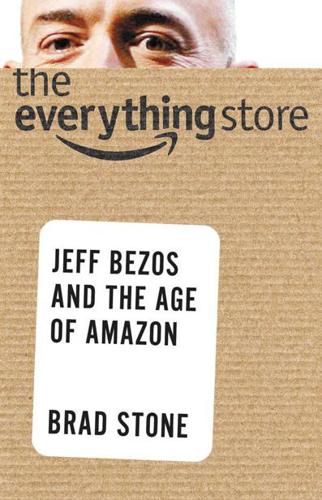
The Everything Store: Jeff Bezos and the Age of Amazon
by
Brad Stone
Published 14 Oct 2013
Strictly speaking, that is not true; Bezos last saw him when he was three years old. It is of course unknowable whether the unusual circumstances of his birth helped to create that fecund entrepreneurial mix of intelligence, ambition, and a relentless need to prove himself. Two other technology icons, Steve Jobs and Larry Ellison, were adopted, and the experience is thought by some to have given each a powerful motivation to succeed. In Bezos’s case, what is undeniably true is that from his earliest years, his parents and teachers recognized that this child was different—unnaturally gifted, but also unusually driven. His childhood was a launching pad, of sorts, that sent Bezos rocketing toward a life as an entrepreneur.
…
“I guess supply chain isn’t doing anything interesting next year.” [After reading a narrative.] “This document was clearly written by the B team. Can someone get me the A team document? I don’t want to waste my time with the B team document.” Some Amazon employees currently advance the theory that Bezos, like Steve Jobs, Bill Gates, and Larry Ellison, lacks a certain degree of empathy and that as a result he treats workers like expendable resources without taking into account their contributions to the company. That in turn allows him to coldly allocate capital and manpower and make hyperrational business decisions while another executive might let emotion and personal relationships intrude.

The Millionaire Fastlane: Crack the Code to Wealth and Live Rich for a Lifetime
by
Mj Demarco
Published 8 Nov 2010
* * * PART 3: Poorness–The Sidewalk CHAPTER 5: THE SIDEWALK ROADMAP When you're the first person whose beliefs are different from what everyone else believes, you're basically saying, “I'm right, and everyone else is wrong.” That's a very unpleasant position to be in. It's at once exhilarating and at the same time, an invitation to be attacked. ~ Larry Ellison The Sidewalk Roadmap Most people are lifelong Sidewalkers, followers of the Sidewalk Roadmap. The Sidewalk is the plan most followed, a contract for a pleasurable today in lieu of a more secure tomorrow. A Sidewalker exists in a state of one-something-from-broke: One album failure from broke.
…
When you own a three bedroom home on Elm Street, it's accessible to a few. This duality makes Internet systems one of the best business seedlings in existence. Additionally, computer systems aren't limited to the Internet. It could be software or applications. Some of the richest people on the planet are software billionaires, like Bill Gates of Microsoft and Larry Ellison of Oracle. Software enjoys plump margins because it is easily replicated. Once the code is written, it's done. You can easily sell one or 10,000. Can you replicate an office building with ease? You can't. Software millionaires can be “average Joes.” Facebook and iPhone application developers are making money fast.
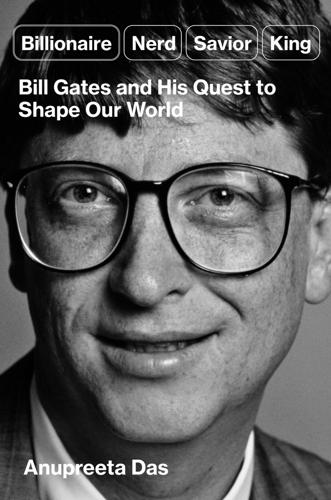
Billionaire, Nerd, Savior, King: Bill Gates and His Quest to Shape Our World
by
Anupreeta Das
Published 12 Aug 2024
At the same time, Steve Jobs—who, like Gates, could be mercurial and harsh, but who did not share the same nerdy traits—was building his reputation as an exacting design maven with a far more beguiling vision of what the personal computer could be. The Apple PC was an elegant, easy-to-use machine that Jobs had full control over, from the design specifics to the presentation. Gates and Jobs were early collaborators on software but also fierce rivals, each disdainful of the other. Jobs designed products that created desire—Larry Ellison, the cofounder of Oracle, once called Apple the only “lifestyle brand in the computer industry”—whereas Microsoft software, by comparison, was dull but dominant.8 In his biography of Jobs, Walter Isaacson compares the era of Jobs and Gates to the relationship between Albert Einstein and Niels Bohr in twentieth-century physics, or between Thomas Jefferson and Alexander Hamilton in early American governance.
…
Buffett encouraged people to write letters addressing how they had arrived at their decision, arguing that written pledges were important for the historical record, and because they might inspire future generations to think about philanthropy the same way Carnegie’s Gospel of Wealth had inspired him and Gates. To those who were resistant, he gently suggested that there was little point in taking their money with them to the coffin. The software billionaire Larry Ellison said he took the pledge simply because Buffett had personally asked him to do so. Gates took a different approach to draw billionaires into the philanthropic circle. He and French Gates hosted dinners with small groups of wealthy people around the country, typically no more than a dozen, to gauge their interest in signing the pledge.

The End of Work: Why Your Passion Can Become Your Job
by
John Tamny
Published 6 May 2018
As Walter Isaacson recounts in The Innovators, “For much of the twentieth century, venture capital and private equity investing in new companies had been mainly the purview of a few wealthy families, such as the Vanderbilts, Rockefellers, Whitneys, Phippses, and Warburgs.”28 Venrock, the Rockefeller family’s venture capital vehicle, invested alongside Arthur Rock in Apple Computer.29 Technology is not the only field to benefit from the existence of inherited fortunes, of course. The institutions of high culture—symphony orchestras, museums, and such—are obvious fruits of established wealth, but popular entertainment benefits as well. Megan Ellison, the daughter of Larry Ellison, the founder of Oracle, has taken her inheritance to Hollywood, producing such acclaimed films as Joy, American Hustle, and Zero Dark Thirty,30 while Teddy Schwarzman, the son of the private equity billionaire Steve Schwarzman, has The Imitation Game and other films on his movie-production résumé.31 Because some have abundant wealth to lose, the broad economy gains.
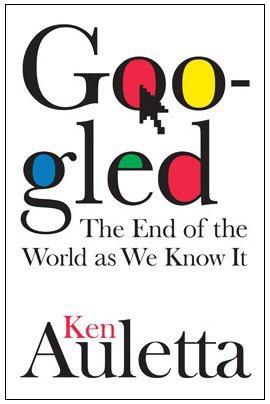
Googled: The End of the World as We Know It
by
Ken Auletta
Published 1 Jan 2009
Applying that to a business model and making sure that the trains are running on time—and at the same time never losing the technology vision—is a feat. Eric’s technology skills mean that no one can bullshit him. You can bullshit me. I’m not an engineer.” Being an engineer, alone, is not enough. Oracle has thrived for a long time as a company founded and headed by Larry Ellison, who is not an engineer. Ditto Apple under Steve Jobs. This point is made by Dan Rosensweig, the former COO of Yahoo who is today the CEO of Activision Blizzard’s Guitar Hero franchise. What makes a successful CEO, he said, “is a balanced appreciation” of the many factors, including engineering, an entrepreneurial and business culture, plus good management.
…
Right now they can afford to, but at some point in time they are going to need to have a crisp vision of who they are and where they’re going, and focus on that.” Although Mary Meeker believes Google is a great company, she offers another caution: the power and precariousness of a culture shaped by its founders. When founders stay involved in the enterprise—she cited Steve Jobs of Apple and Larry Ellison of Oracle—they often maintain the core values and mission of the business and bring something invaluable to the enterprise. But Jobs and Ellison lost focus, and watched their companies suffer. They also profoundly learned from their ordeals, while Page and Brin have yet to “experience nasty failure” and its concurrent ability to teach, as Al Gore also noted.
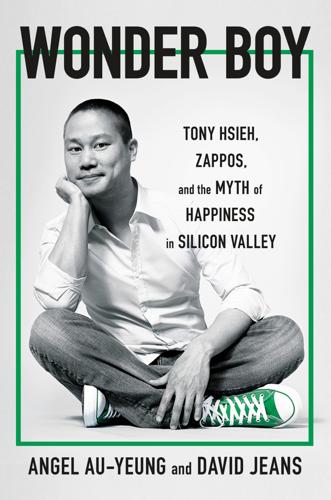
Wonder Boy: Tony Hsieh, Zappos, and the Myth of Happiness in Silicon Valley
by
Angel Au-Yeung
and
David Jeans
Published 25 Apr 2023
CHAPTER 4 LINKEXCHANGE It was a weekday, and Tony and Sanjay were again lounging by the pool during a very long lunch break at their new condo in San Mateo, California. They had landed jobs right after college as software engineers at Oracle, the high-flying enterprise software behemoth at the heart of Silicon Valley. Led by the brash Bronx-born contrarian and playboy billionaire Larry Ellison, Oracle, which at the time was the world’s largest maker of data management software, was a keystone in Silicon Valley. Comparing their $40,000 salaries to what their other Harvard classmates would be earning, Tony and Sanjay learned they would be making a lot more money than the rest of them.
…
While such efforts sound radical to most people, they have become widely accepted, even adopted, as ways to further the realm of productivity and individual betterment within Silicon Valley, a place where its leaders consistently pioneer what was previously thought unimaginable. Living longer, for example, is something that Larry Ellison, Jeff Bezos, and Peter Thiel have each spent millions of dollars on researching. But as his fixation on biohacking and flow states deepened, Tony was venturing closer to a dark rabbit hole from which he might not escape. His friends in Park City tried to find comfort in reverting to their old habits, despite his changing behavior and ever-grander visions.

Lonely Planet's 2016 Best in Travel
by
Lonely Planet
Published 30 Sep 2015
Renewable energy initiatives are popping up all over the islands. Wind and wave energy on Maui, geothermal power on the Big Island and solar panels across the archipelago are all signs that the islands are on track to achieve their goal of 70% energy self-sufficiency by 2030. Indeed, with the financial backing of tech billionaire Larry Ellison, the small central island of Lana‘i hopes to become a self-sufficient dreamland of electric cars, sustainable agriculture and green energy. Festivals & events Starting on Easter Sunday, Hilo on the Big Island celebrates Hawaiian art and culture for a week with hula competitions at the Merrie Monarch Festival, honouring King David Kalakaua, who was known for his patronage of the arts.

The Meritocracy Trap: How America's Foundational Myth Feeds Inequality, Dismantles the Middle Class, and Devours the Elite
by
Daniel Markovits
Published 14 Sep 2019
Note that the global trend—which spans countries with vastly different political systems and domestic policy regimes—strongly implies that labor’s decline stems from economic fundamentals rather than shallow political or policy choices. Eight of the ten richest Americans: The ten richest Americans, according to Forbes magazine, are (in order): Bill Gates, Jeff Bezos, Warren Buffett, Mark Zuckerberg, Larry Ellison, Charles Koch, David Koch, Michael Bloomberg, Larry Page, and Sergey Brin. See “Forbes 400,” Forbes, accessed August 26, 2018, www.forbes.com/forbes-400/list/. Of these, all but the Koch brothers are self-made, and the Koch brothers inherited a relatively small business (from its entrepreneur-founder), which they built into a much larger one, at a growth rate that resembles self-made entrepreneurship.
…
Dolan, eds., “Forbes 400: The Definitive Ranking of the Wealthiest Americans,” Forbes, October 3, 2018, www.forbes.com/forbes-400/#7de6813e7e2f. Hereafter cited as Kroll and Dolan, “Forbes 400.” The founders who hold these shares include: Jeff Bezos (1), Bill Gates (2), Warren Buffett (3), Mark Zuckerberg (4), Larry Ellison (5), Larry Page (6), and Sergey Brin (9). Others among the top one hundred—for example, George Soros (60) and Carl Icahn (31)—owe their fortunes to carried interest. reported by one-percenters: Victor Fleischer, “How a Carried Interest Tax Could Raise $180 Billion,” New York Times, June 5, 2015, http://nytimes.com/2015/06/06/business/dealbook/how-a-carried-interest-tax-could-raise-180-billion.html.
…
Moreover, even these consequences would have followed only if the regnant legal order governing titles and property permitted the divestiture at all, rather than entailing the estate to guarantee that it remained in the family. See Langbein, “Twentieth-Century Revolution,” 725–26. upon their deaths: “History of the Pledge,” The Giving Pledge, accessed October 12, 2018, https://givingpledge.org. Signatories include Bill Gates, Warren Buffett, Mark Zuckerberg, Larry Ellison, and Michael Bloomberg, all in the top ten of 2018’s Forbes 400. Kroll and Dolan, “Forbes 400.” An advertisement for the Wall Street Journal: “People who don’t have time make time to read the Wall Street Journal,” Wall Street Journal, accessed October 12, 2018, www.wsj.com/maketime. When law students were recently asked: This is reported in an unpublished early draft of Heather Kappes et al., “‘Who You Are’ Heightens Entitlement More Than ‘What you Did’” (manuscript on file with author).
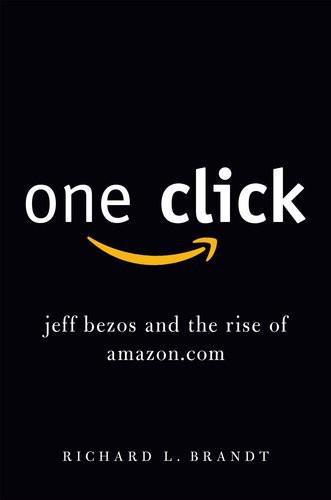
One Click: Jeff Bezos and the Rise of Amazon.com
by
Richard L. Brandt
Published 27 Oct 2011
In fact, Bezos personifies a new breed of executive that arose with the emergence of the game-changing technology companies in the 1980s and 1990s. In a January/February 2000 Harvard Business Review article by anthropologist and psychoanalyst Michael Maccoby, titled “Narcissistic Leaders: The Incredible Pros, the Inevitable Cons,” Bezos was one of the business leaders singled out as a “productive narcissist.” (Bill Gates and Larry Ellison also made the list.) These executives have big enough egos to make up seemingly random rules of business leadership. However, unlike other narcissists, they get the job done. Bezos also has a hugely infectious enthusiasm for his company. One of his incredible talents has been to convince employees, from the highest manager to the lowest customer service rep stuck to her phone ten hours a day, that working at Amazon was not just a job—it was part of a visionary quest, something to give higher meaning to their lives.
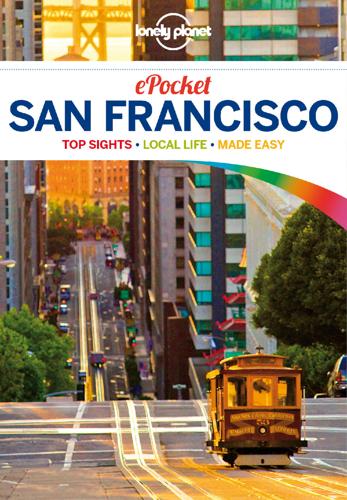
Lonely Planet Pocket San Francisco
by
Lonely Planet
and
Alison Bing
Published 31 Aug 2012
Cable car with Transamerica Pyramid in the background BERTRAND RIEGER/HEMIS/CORBIS © Don’t Miss Powell-Hyde Cable Car The journey is the destination on this hilly line, with the Golden Gate Bridge popping in and out of view. Hop off the cable car atop zig-zagging Lombard St ( Click here ) to see Russian Hill’s priceless pine-framed panorama, naming rights to which belong not to resident billionaire and Oracle CEO Larry Ellison, but penniless poet George Sterling, to whose memory Sterling Park ( Click here ) was dedicated. Powell-Mason Cable Car Powell-Mason’s ascent up Nob Hill feels like the world’s longest roller-coaster climb. Stop for a hilltop martini ( Click here ), or continue on to Chinatown’s Chinese Historical Society (Click here ).
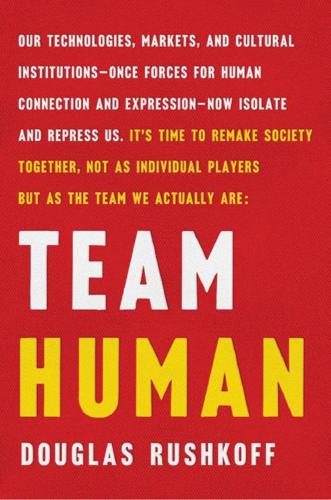
Team Human
by
Douglas Rushkoff
Published 22 Jan 2019
The Soviets’ launch of the Sputnik satellite in the 1960s led America to begin offering advanced math in high school Alvin Powell, “How Sputnik Changed U.S. Education,” Harvard Gazette, October 11, 2007. 27. For these reasons, many of the most ambitious engineers, developers, and entrepreneurs end up dropping out of college altogether Bill Gates, Steve Jobs, Mark Zuckerberg, Evan Williams, Travis Kalanick, Larry Ellison, Michael Dell, John Mackey, Jan Koum, to name only a few. 28. Consider Thomas Jefferson’s famous invention, the dumbwaiter Silvio A. Bedini, Thomas Jefferson: Statesman of Science (Basingstoke: Palgrave–MacMillan, 1990). Even today, Chinese laborers “finish” smartphones by wiping off any fingerprints Victoria Turk, “China’s Workers Need Help to Fight Factories’ Toxic Practices,” New Scientist, March 22, 2017. 29.
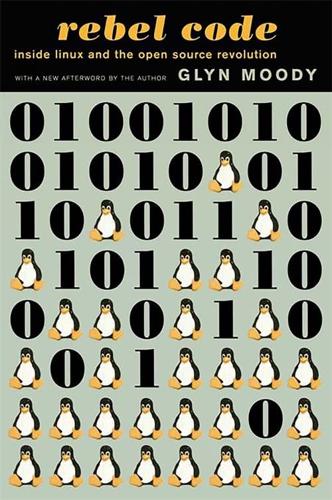
Rebel Code: Linux and the Open Source Revolution
by
Glyn Moody
Published 14 Jul 2002
He notes, “My official title was at the outset ‘Vice President of Microsoft Alliance.’ So I used to hand out my card and say, ‘This is my title, but my real job is how do we beat Microsoft.’” When “it just became obvious that engaging with the open source community was going to be much more interesting for Oracle and for me than trying to figure out how to get Larry [Ellison, Oracle’s CEO] and Bill [Gates] to have a pleasant conversation,” his title became the more diplomatic “Vice President of Strategic Alliances.” Oracle had been thinking about a GNU/Linux port well before the announcement in July 1998. “As much as a year and a half or two years prior to that,” Miner says, “I had seen from time to time on the internal mailing lists various people, most notably Magnus Lonnroth, advocating that we ought to take a look at this thing.”
…
He remembers that “the people from Oracle were completely overwhelmed” when they saw the size and enthusiasm of the crowd at that meeting. “Everyone just looked at us and went, ‘You know, there’s something going on here,’” he says. Miner concedes, “The timing of that meeting is not purely coincidental.” Even at this point, Oracle’s CEO, Larry Ellison, was “skeptical of whether this would really be a serious commercial platform,” Miner believes. “But he’d been aware that we had products working on Linux and FreeBSD for some time, and to his credit in the end he was supportive of the decision to commercialize it and make the commitment to go ahead and support it not as just as a free give-away unsupported product, which is the approach that one or two of Oracle’s competitors took, but as a commercial product with a price and full support.”
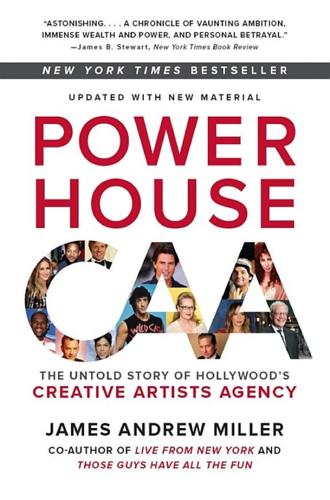
Powerhouse: The Untold Story of Hollywood's Creative Artists Agency
by
James Andrew Miller
Published 8 Aug 2016
Chris Brown Bill Broyles Jerry Bruckheimer Genevieve Bujold Sandra Bullock Ken Burns Tim Burton John Calley Robinson Cano Mark Canton Kate Capshaw Glenn Gordon Caron Jim Carrey Johnny Carson Graydon Carter Maverick Carter Dana Carvey Leo Castelli Gil Cates Bob Cavallo Chevy Chase Cher Peter Chernin Robert Chertoff Ted Chervin James Clavell Bill Clinton George Clooney Glenn Close Lee Cohen Sam Cohen Sam Cohn Chris Columbus Sean Connery Martha Coolidge Francis Ford Coppola Sofia Coppola Costa-Gavras Kevin Costner Katie Couric Michael Crichton Hume Cronyn Crosby, Stills & Nash Tom Cruise Lindsay Czarniak Bob Daly Matt Damon Andy Davis Geena Davis John Davis Martha Davis Marvin Davis Roger Davis Gavin de Becker Dan Deirdorf Fred Dekker Peter Dekom Freddy Demann Jonathan Demme Ted Demme Lisa De Moraes Rebecca De Mornay Robert De Niro Brian De Palma Johnny Depp Bo Derek Ira Deutchman Danny DeVito Dean Devlin Neil Diamond Cameron Diaz Leonardo DiCaprio Joan Didion Vin Diesel Barry Diller Celine Dion Richard Donner Lindsay Doran Michael Douglas Peter Drucker Clint Eastwood Blake Edwards Marty Ehrlichman Jane Eisner Michael Eisner Doug Ellin Larry Ellison Roland Emmerich Joe Eszterhas Chad Everett Jeff Fager Tony Fantozzi Frank Farian Chris Farley Will Ferrell Sally Field Bert Fields Carrie Fisher Ryan Fitzpatrick Mick Fleetwood Joe Flint Jane Fonda Harrison Ford Ted Fortsmann Bob Fosse Jamie Foxx Mark Frost Zach Galifianakis Sandy Gallin Alex Gartner Bill Gates David Geffen François Gilles Terry Gilliam Arne Glimcher Roberto Goizueta Eric Gold Whoopi Goldberg Leonard Goldenson Bo Goldman Akiva Goldsmith Roger Goodell Larry Gordon Berry Gordy Sam Gores Donald Grant Brian Grazer Steve Greenberg Brad Grey Wyc Grousbeck Andy Grove Phil Guarascio Peter Guber Marc Gurvitz Gene Hackman Hall and Oates Tom Hanks Tom Hanson Ted Harbert Mark Harmon Jack Harrower Patrick Hasburgh Ethan Hawke Goldie Hawn Salma Hayek Amy Heckerling Ed Helms Gary Hendler John Henry Jonathan Hensleigh Katharine Hepburn Kirk Herbstreit Marshall Herskovitz Steve Heyer Colin Higgins Masahiko Hirata Barry Hirsch Dustin Hoffman Jan Hoffman Ron Howard L.
…
And that’s how it was, we could call anyone anywhere in the world, and our thoughts were valued and our presence was welcomed. We were perceived as the guys who understood the “secret sauce” of creating value from intellectual property—business wise, savvier, and, most important, able to get things done. We had reach to Bill Gates, Steve Jobs, Larry Ellison, Roberto Goizueta and Don Keough, Phil Knight, foreign media titans, heads of investment banks, and hedge funds. It seemed as if we could walk into any room at any time anywhere in the world. BRUCE VINOKOUR: I recall as if it were yesterday being pulled over to the side of the street by a police officer and getting a speeding ticket one morning while on my way to work.
…
Nevertheless, there was clear value to be built by collaborating with each other, and so we met with many interesting companies—Microsoft, Apple, Intel, Electronic Arts, Nintendo, Virgin Interactive, and Sega, among others. If Michael was going to be in a meeting, that almost always meant we would be meeting with the company’s CEO. We met with Andy Grove. Discussions between Larry Ellison and Michael benefited greatly because of their shared values and interests in Eastern philosophies. I remember meeting with Steve Jobs in the Pei building, when concerns over his being seen there meant that we held the meeting in one of the more unimpressive conference rooms with no windows. And of course we went up to Apple headquarters in Cupertino several times.
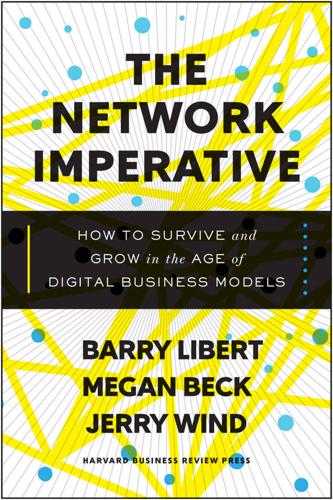
The Network Imperative: How to Survive and Grow in the Age of Digital Business Models
by
Barry Libert
and
Megan Beck
Published 6 Jun 2016
The hard work of operationalizing the vision—to transform Enterprise from an asset financier and service provider to a digitally enabled network orchestrator—was still ahead. OPERATE Enact Your Network Business Model When you innovate, you’ve got to be prepared for people to tell you that you are nuts. —Larry Ellison, former CEO, Oracle WHAT DOES IT TAKE FOR A LARGE FIRM TO INNOVATE? Let’s look at Google, one of the most innovative companies of the past decade, and its secret lab, X, previously known as Google X. Google is well known for its capability with digital technology and for its ability to innovate, and it has developed a specific structure and process for nurturing its most innovative projects, the ones it calls “moonshots.”
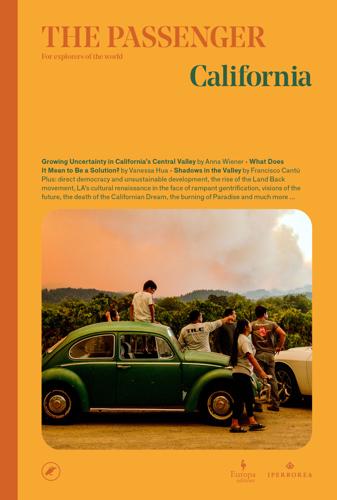
The Passenger
by
AA.VV.
Published 23 May 2022
Having started out as a dishwasher in a cafeteria at the University of Portland and going on to work in a catering company where he was shocked by the low quality of the food, he understood there was market potential. So he moved to Palo Alto with the intention of feeding the giants of the valley. The first to believe in him was Larry Ellison from Oracle, who asked him to set up a real Italian sandwich shop inside the company building. The rest is history. Bauccio recognised the importance of organic ingredients and saw the notion of cooking dinner every night at home (or, worse, going out to restaurants) as being unsustainable for the Bay Area lifestyle: people liked to have lunch in their workplace cafeterias and bring home a snack, thereby saving money and time.
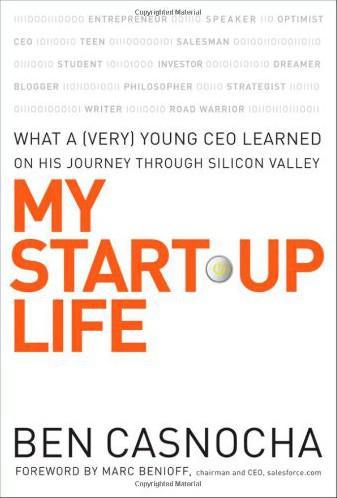
My Start-Up Life: What A
by
Ben Casnocha
and
Marc Benioff
Published 7 May 2007
Business Crossing the Chasm, by Geoffrey Moore The Ultimate Question, by Fred Reichheld Winning the Loser’s Game, by Charles Ellis The Moral Consequences of Economic Growth, by Benjamin Friedman The MouseDriver Chronicles, by Kyle Lusk and John Harrison Freakonomics, by Steven Levitt and Stephen Dubner The Effective Executive, by Peter Drucker Soros: The Life and Times of a Messianic Billionaire, by Michael Kaufman The Medici Effect, by Frans Johanson Free Prize Inside and the Big Moo, by Seth Godin Softwar: An Intimate Portrait of Larry Ellison, by Matthew Symonds The Marketing Playbook, by John Zagula How Would You Move Mount Fuji? by William Poundstone The Four Obsessions of an Extraordinary Executive, by Patrick Lencioni The Entrepreneur’s Guide to Business Law, by Constance Bagley Good to Great, by Jim Collins On Becoming a Leader, by Warren Bennis 179 180 APPENDIX C Information Rules, by Carl Shapiro and Hal Varian eBoys, by Randal Stross Fooled by Randomness, by Nassim Nicholas Taleb Compassionate Capitalism, by Marc Benioff Love Is the Killer App, by Tim Sanders Globalization The World Is Flat, by Tom Friedman Creative Destruction, by Tyler Cowen Globaloney, by Michael Veseth Money Makes the World Go Round, by Barbara Garson How “American” Is Globalization?
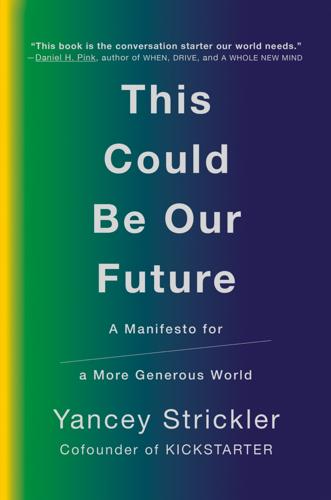
This Could Be Our Future: A Manifesto for a More Generous World
by
Yancey Strickler
Published 29 Oct 2019
These are the ten wealthiest people in the world in 2019: Jeff Bezos (Amazon) Bill Gates (Microsoft) Warren Buffett (Berkshire Hathaway) Bernard Arnault (LVMH) Carlos Slim Helu (America Movil) Amancio Ortega (Zara) Larry Ellison (Oracle) Mark Zuckerberg (Facebook) Michael Bloomberg (Bloomberg LP) Larry Page (Alphabet/Google) Are these the ten happiest people in the world? Probably not. But they’re probably not the ten least happy people either. The costs of being not-rich are significant.
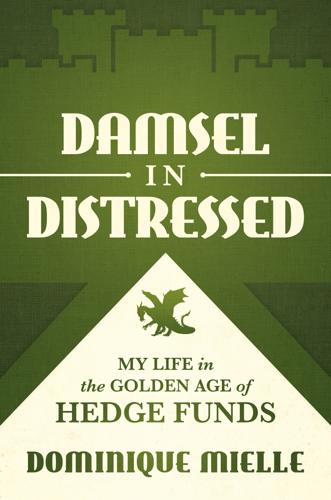
Damsel in Distressed: My Life in the Golden Age of Hedge Funds
by
Dominique Mielle
Published 6 Sep 2021
A September to Remember So we found ourselves way out on a limb in underestimating and underpricing risk, and happily going about our business until such time as it could no longer be ignored. I remember the exact day that happened for me. It was Sunday, September 14, 2008. The Canyon senior managers had been invited to a beautiful party for the daughter of one of the partners. The event was held on a vast beachfront property in Malibu owned by Larry Ellison of Oracle, who has since turned it into a high-end commercial development anchored by a Nobu restaurant. It was a picture-perfect day and they had set up, as one does, multiple dance floors and bars, entertainers, dancers, white leather furniture, ice sculptures, and a splendid buffet. Hundreds of dressed-up guests with their spouses and children were determined to have a jolly time.
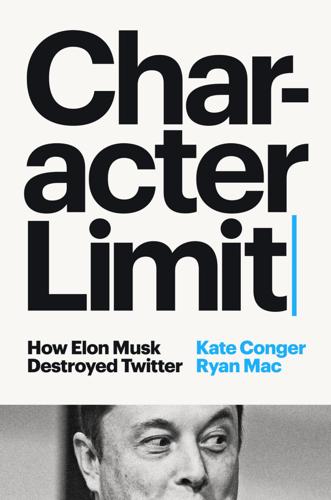
Character Limit: How Elon Musk Destroyed Twitter
by
Kate Conger
and
Ryan Mac
Published 17 Sep 2024
“Buy twitter,” replied Mike Cernovich, a far-right influencer who had once encouraged Pizzagate. He wrote that Twitter only respected those who were “leftist making death threats against conservatives.” “Doesn’t sound very balanced,” Musk replied. The billionaire also received encouraging text messages from friends and acquaintances, among them Oracle founder Larry Ellison, who agreed for the need of a new Twitter; Mathias Döpfner, a German media executive who called for Musk to buy Twitter and then hand it over to him to run; and Sam Bankman-Fried, the founder and leader of crypto exchange FTX, who wanted to invest. But one message in particular caught Musk’s attention.
…
Sure, a new Tesla factory was noteworthy, but there was more excitement about Twitter and his involvement. What was he going to do? Everyone wanted to know, and even those closest to him had no clear idea. Neither did Musk. * * * >>> The next day, Friday, April 8, the Tesla chief flew to Lanai, the Hawaiian island owned by Larry Ellison. The trip was meant to be for rest and relaxation with his latest love interest, Natasha Bassett, a twenty-nine-year-old Aussie actress, but Musk continued to stew about Twitter. He had a call with Agrawal to discuss engineering processes at the company and he voiced his gripes about fake users and spam that flooded his replies.
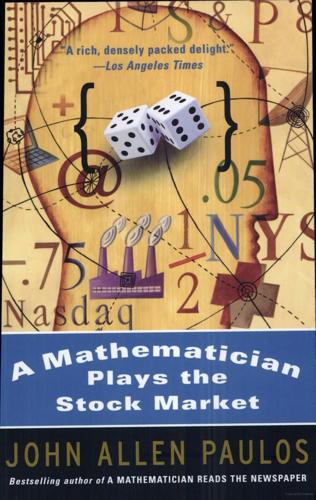
A Mathematician Plays the Stock Market
by
John Allen Paulos
Published 1 Jan 2003
No, he cut out free coffee for employees to save money. As Tyco spiraled downward, its CEO, Dennis Kozlowski, spent millions of company dollars on personal items, including a $6,000 shower curtain, a $15,000 umbrella stand, and a $7 million Manhattan apartment. (Even successful CEOs are not always gentlemen. Oracle’s Larry Ellison, a fierce foe of Bill Gates, a couple of years ago admitted to spying on Microsoft. Amusingly, Oracle’s sophisticated snoops didn’t employ state-of-the-art electronics, but tried to buy the garbage of a pro-Microsoft group in order to examine its contents for clues about Microsoft’s public relations plans.
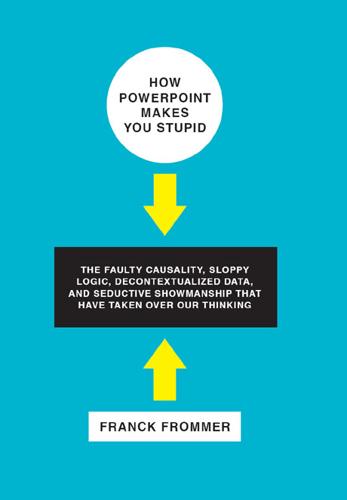
How PowerPoint Makes You Stupid
by
Franck Frommer
Published 6 Oct 2010
After tables and graphs, Jobs is content to project just one number per slide, a kind of abstraction of number, to produce a shock effect. One of the first climaxes in the show is the presentation of the new management team. After a Hollywood-style display—photographs of the candidates and their titles (all heavyweights of American business, including the co-founder of Oracle, Larry Ellison)—Jobs shows a video in which each member of the board gives his sense of the company’s future, in the form of a documentary interview. Rather than a usual lineup on the stage, a fake roundtable with a moderator or a beauty-pageant-style parade, Jobs opts for high-tech staging, bringing out the ubiquity of the tool and especially its great possibilities.
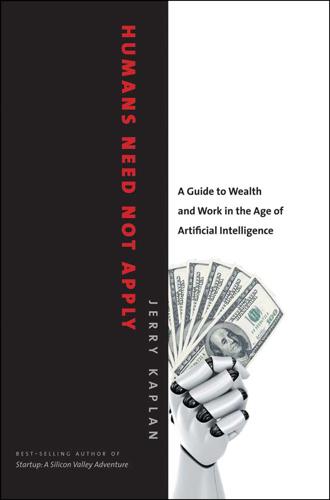
Humans Need Not Apply: A Guide to Wealth and Work in the Age of Artificial Intelligence
by
Jerry Kaplan
Published 3 Aug 2015
He loves and emulates Jimi Hendrix’s playing style (and I might add is very good at it), which is why he personally financed this particular civic project. The list of wealthy people who have purchased or supported sports teams, or even whole sports, seems endless. For instance, Oracle’s CEO Larry Ellison invested $300 million in the America’s Cup yacht race. Thom Weisel, founder of Montgomery Securities, personally organized a bailout of USA Cycling, the governing body for U.S. bicycle racing, in 2000. There’s a widespread belief that for the economy to thrive, we need a robust and healthy middle class.
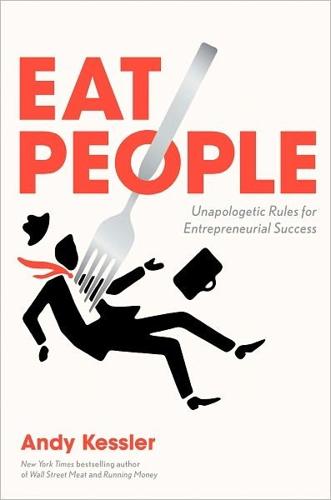
Eat People: And Other Unapologetic Rules for Game-Changing Entrepreneurs
by
Andy Kessler
Published 1 Feb 2011
Pixar was working on its first feature film, Toy Story, which pioneered a whole new way to tell compelling stories. He (and Steve Jobs) got rich, but the rest of us got to see spectacular movies for ten bucks. Quite the bargain. I met Carl Rosendahl, whose Pacific Data Images was doing similar things for Jeffrey Katzenberg and DreamWorks with a project called Shrek. I met Larry Ellison as he was selling databases to corporations, when it wasn’t so obvious that he was going to completely transform their back offices, squeezing out costs in their finance and supply chains and making them much more productive. Oracle saved businesses a fortune, and they passed the savings along to the rest of us in the form of everything from cheap goods at Walmart to cheap trades at Charles Schwab.
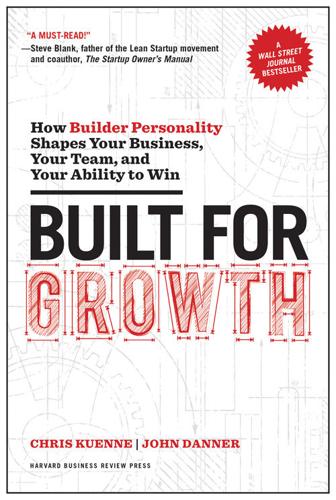
Built for Growth: How Builder Personality Shapes Your Business, Your Team, and Your Ability to Win
by
Chris Kuenne
and
John Danner
Published 5 Jun 2017
How This Book Can Help You We’re not the first authors who seek to understand the phenomenon of building successful businesses from scratch or to understand personality, for that matter. You can find clues to such success in biographies of legendary entrepreneurs—from Andrew Carnegie, Henry Ford, and Larry Ellison to Mary Kay, Arianna Huffington, and Oprah Winfrey. These stories can be fascinating, educational, and even inspiring. You can learn much about what it takes to launch, grow, and sustain a business that way. This is not a book about the mechanical steps of launching a startup or another venture, product-market fit, or the keys to innovation.
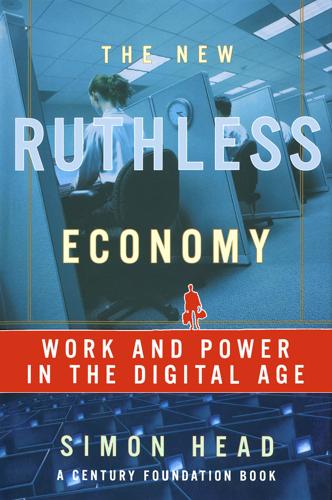
The New Ruthless Economy: Work & Power in the Digital Age
by
Simon Head
Published 14 Aug 2003
But outside the highly specialized world of enterprise resource planning (ERP) software, SAP is almost totally unknown, as indeed are most of SAP's U.S. competitors, companies such as Peoplesoft, J. D. Edwards, and Siebel Systems. Only SAP's leading U.S. competitor, Oracle Corporation, has escaped such anonymity, but this is due more to the intense rivalry and personal animosity between Oracle's CEO Larry Ellison and Microsoft's Bill Gates than to Oracle's strong presence in the field of what has come to be known as "enterprise computing.'' As we have seen, ERP grew out of the reengineering of the early 1990s, taking the single business processes that were the concern of reengineers, and then joining them together to form giant megaprocesses.
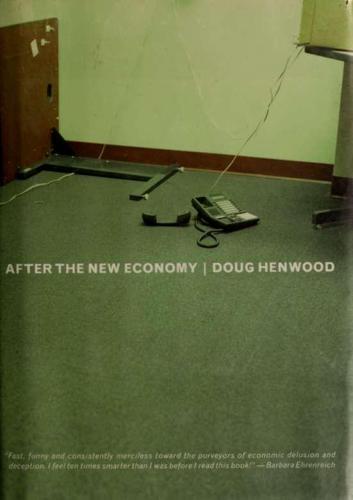
After the New Economy: The Binge . . . And the Hangover That Won't Go Away
by
Doug Henwood
Published 9 May 2005
And options offered gigantic payofis to senior execs (and, democratic rhetoric to the contrary, options were overwhelmingly concentrated among senior execs, not ordinary employees, as we saw at the end of chapter 3). When Business Week started doing its annual compensation survey in 1950, the highest-paid CEO was GM's Charles Wilson, who took home $652,156 (before taxes), or 229 times as much as the average worker. In 2001, the pay champ was Oracle's Larry Ellison, who exercised some long-held options, netting himself $706 million (even though the company and its stock was doing rather badly)—or 28,193 times as much as the average worker.Those are extreme cases compared over the very long term, but even nonextreme comparisons are stunning: the average CEO pulled down more than 400 times as much as the average hourly worker in 2001, up from a mere 42 times in 1980 (Borrus and Foust 2003).
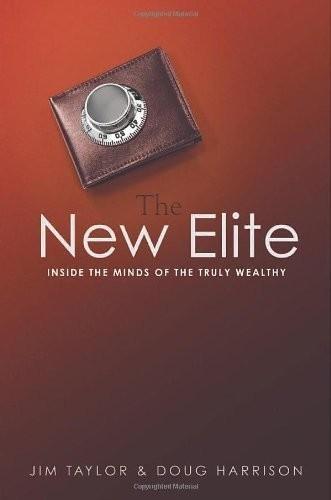
The New Elite: Inside the Minds of the Truly Wealthy
by
Dr. Jim Taylor
Published 9 Sep 2008
The son of a cab driver, he borrowed $200 from his uncle when he was just twelve to finance his newspaper delivery route and later dropped out of college to become a court reporter. Today he owns the Venetian Las Vegas luxury hotel, as well as numerous other properties throughout the world. In 1995 he sold his successful trade show business, featuring the high-tech showcase COMDEX, for $860 million. Another college dropout, Oracle founder Larry Ellison, is just behind Adelson with a total net worth of approximately $25 billion. The commonalities among America’s wealthiest people—selfmade wealth, entrepreneurship, modest backgrounds—are also prevalent among the wealthiest individuals from other countries as well. Mexico’s richest person, second overall in the world behind Buffett, is Carlos Slim Helu.
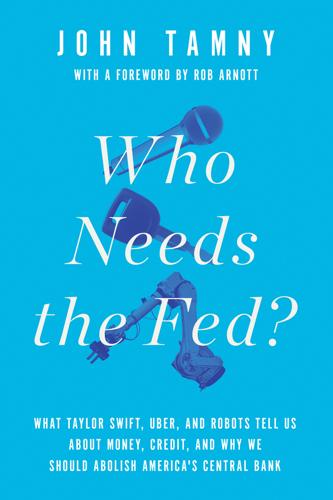
Who Needs the Fed?: What Taylor Swift, Uber, and Robots Tell Us About Money, Credit, and Why We Should Abolish America's Central Bank
by
John Tamny
Published 30 Apr 2016
As the failure rate in Silicon Valley reveals, private investors are quite fallible, and yes, they are all-toocapable of funding egregious Solyndra equivalents. The major difference is that when Globe.com falters, investors quickly starve it of capital so that it can destroy no more. When politicians spend, they have an unlimited source of funds—you, me, Michael Dell, and Larry Ellison—to tap. They can continue to support that which doesn’t work. Stated simply, businesses disappear on a daily basis, but government programs are generally forever. Since the federal government’s “War on Poverty” began, in the 1960s, more than $16 trillion has been spent on the battle.3 Yet, it seems that both liberals and conservatives miss the real story here.
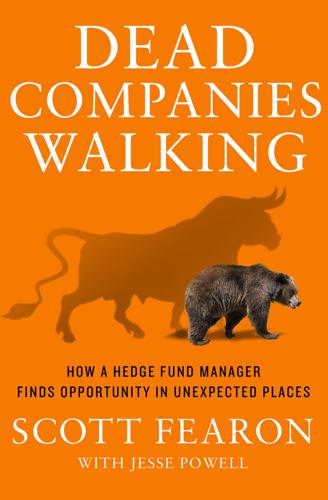
Dead Companies Walking
by
Scott Fearon
Published 10 Nov 2014
This was especially true during the dotcom boom, when people who seemed perfectly reasonable would stop you on the street and tell you that the “new economy” of the internet had made investing metrics such as profit margins—or even actual revenues—relics of a bygone age. Sunk, Part II Manias don’t die easily, especially when they’re fueled by rich, powerful, and obsessive people. In 2013, fourteen years after Alan swore that “immersive viewing” would magically cause Americans to love sailing, Oracle founder Larry Ellison tried to bring yachting to the masses again when he hosted the America’s Cup on San Francisco Bay. Ellison made many of the same claims the CEO of Quokka Sports had tried out on me more than a decade earlier—specifically, that people would suddenly care about a bunch of billionaires on sailboats if they could see the action up close.

Immortality, Inc.
by
Chip Walter
Published 7 Jan 2020
If he were to write up on a whiteboard all the symptoms of aging without actually calling them aging, Maris figured it would look like any other degenerative, genetic disease that would eventually kill you. Surely science could find ways to stop such a sickness—even reverse it. But if that was true, where was the company that was getting on it? When Maris looked around in 2012, he found the answer was no one. Some nonprofit organizations like Oracle co-founder Larry Ellison’s Medical Foundation and the Buck Institute for Research on Aging were exploring ways to eradicate aging diseases like cancer and Alzheimer’s. But none of these delivered the heft needed to really get at the problem in a truly fundamental way. To make matters worse, Ellison had recently decided to gut funding for any new antiaging projects after throwing almost $350 million at the problem over 15 years with little more to show for it than a lot of his Oracle profits disappearing down a black hole.

The Code: Silicon Valley and the Remaking of America
by
Margaret O'Mara
Published 8 Jul 2019
ROLM, the company that had made Burt McMurtry’s venture career, earned 99 percent of its $10 million revenue in 1975 from “mil spec” sales of rugged, impact-resistant minicomputers designed for soldiers’ use in the field. A rising star of the 1980s, the relational database company Oracle got its start with a CIA contract that Larry Ellison and his co-founders completed while working at Ampex in the late 1970s. As military spending soared, this ever-present defense sector grew larger, even if it stayed partially submerged from view.11 The beating heart remained the place that started it all: Lockheed Missiles and Space, whose 24,000-strong 1980s workforce was nearly twice as large as Intel and five times larger than Apple.
…
As the president agonized, the titans of tech checked out the view from the other side, meeting with Republican lawmakers and reconsidering their somewhat recent conversion to the Democratic cause. Despite the personal entreaties of his Valley loyalists, Clinton vetoed the lawsuit bill. Congress promptly overrode him. It was a win for tech, a loss for Clinton, and an ugly crack in the White House love affair with Silicon Valley. Larry Ellison was so fed up that he initially refused to endorse Clinton’s reelection, and wrote a big check to Republican challenger Bob Dole.21 Lerach was furious as well. He decided to stop this government steamroller in its tracks at the state level, bankrolling a fall 1996 state ballot initiative to circumvent the new federal limitations entirely.
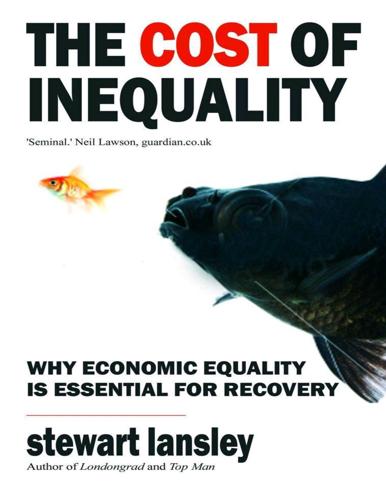
The Cost of Inequality: Why Economic Equality Is Essential for Recovery
by
Stewart Lansley
Published 19 Jan 2012
The first 1982 list contained no hedge fund or private equity barons. These were industries about to be born. Gradually their founders have worked their way into and up the list. The premier division of American billionaires (the top 50) is still dominated by new technology tycoons—from Bill Gates and Paul Allen of Microsoft to Larry Ellison of Oracle and Larry Page and Sergey Brin who invented Google. The top 50 also includes retailers like the Walton family who own Wal-Mart and Jeff Bezos of Amazon along with manufacturers like the confectioners, Forest and John Mars. The next group of 150, in contrast, is riddled with Wall Street financiers and hedge fund and private equity operators who have made their fortunes through the financial re-engineering of existing companies.

Dogfight: How Apple and Google Went to War and Started a Revolution
by
Fred Vogelstein
Published 12 Nov 2013
* * * In mid-May 2013, at the end of a marathon keynote presentation to open its conference for software developers, Google served up a surprise to its exhausted listeners. At the three-hour mark, Larry Page, the company’s publicity-shy CEO, came out to deliver remarks and take questions from the audience. Page isn’t a rock star CEO as Steve Jobs and Bill Gates once were, or as Mark Zuckerberg at Facebook and Larry Ellison at Oracle continue to be. In fact, Page’s appearance was notable for the exact opposite reason: few could remember the last time they had seen him center stage. He has been Google’s CEO for two years and is one of its cofounders. But during that entire fifteen-year period—Google was founded in 1998—he has taken pains to avoid the limelight.
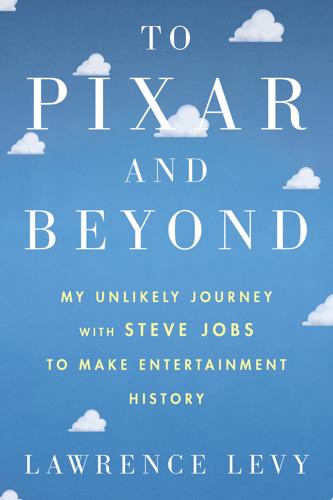
To Pixar and Beyond
by
Lawrence Levy
At the end of the first day’s trading, Pixar’s stock was at $39. That gave Pixar a market value of close to $1.5 billion and did indeed make Steve a billionaire. I later heard that while I was glued to the computer screen watching Pixar’s trades, Steve had stepped into a nearby office and made a phone call to his friend Larry Ellison, the founder and CEO of Oracle Corporation. All he apparently said was “Larry, I made it.” The next day’s headline in the Wall Street Journal’s report on the IPO read: STEVE JOBS IS BACK IN THE SADDLE AGAIN, BECOMING A BILLIONAIRE IN PIXAR IPO The article said: There are plenty of analysts who think the market’s valuation of Pixar, at a total of $1.46 billion, is a sign of investors gone mad.

Lab Rats: How Silicon Valley Made Work Miserable for the Rest of Us
by
Dan Lyons
Published 22 Oct 2018
Russian venture capitalist and Facebook investor Yuri Milner owns a twenty-five-thousand-square-foot imitation French château in Los Altos Hills, for which he reportedly paid $100 million in 2011, which was said to be the highest price ever paid in the United States for a piece of residential real estate. Scott McNealy, co-founder of Sun Microsystems, is trying to unload his twenty-eight-thousand-square-foot Palo Alto mansion, which features a climbing wall and a disco, for just under $100 million, the Wall Street Journal reports. Both of those pale in comparison to Oracle founder Larry Ellison’s twenty-three-acre estate in Woodside, which is modeled after a Japanese emperor’s palace. The place took nine years to build, reportedly at a cost of $200 million. Its highlight is Katsura House, a replica of a teahouse from a sixteenth-century royal compound in Kyoto. The replica, which was built in Japan, then disassembled and shipped to California, is 10 percent bigger than the original.
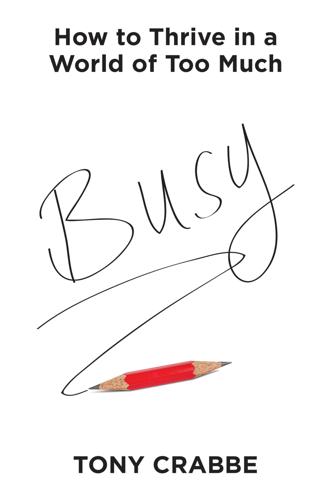
Busy
by
Tony Crabbe
Published 7 Jul 2015
Conspicuous Consumption Before he started Silicon Graphics, Jim Clark said a fortune of $10 million would satisfy him. Before founding Netscape, he thought $100 million would make him happy. Before initiating myCFO and Healtheon, he believed $1 billion would be needed. More recently he said, “Once I have more money than Larry Ellison, I’ll be satisfied.”3 Ellison, the founder of the software giant Oracle, is worth $13 billion. How much is enough for you? Don’t worry about answering that question, because as soon as you get close to reaching that amount, your definition of enough will have changed. In 1899, the sociologist and economist Thorstein Veblen coined the term “conspicuous consumption” to describe a certain group of people who, during the Industrial Revolution, had become extremely rich.
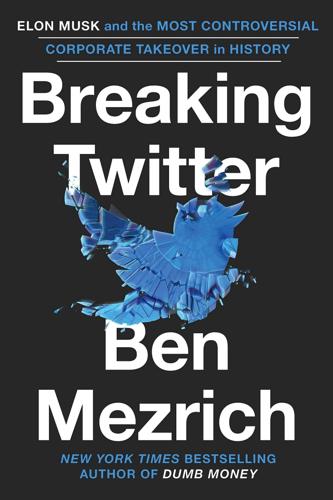
Breaking Twitter: Elon Musk and the Most Controversial Corporate Takeover in History
by
Ben Mezrich
Published 6 Nov 2023
Though there was no way Elon was going to avoid bearing the brunt of the expense of buying Twitter, from the moment he’d hinted at his plans to take the platform private, his wealthy friends and associates had been lining up to help out. In many cases, raising billions from the sorts of people Elon had in his contacts seemed no more difficult than borrowing change to top off a parking meter. As far back as April, he’d reached out to billionaire Larry Ellison, asking how much Ellison might be able to chip in: “A billion… or whatever you recommend,” Ellison had texted back. “Whatever works for you,” Musk had nonchalantly responded. “I’d recommend maybe 2B or more. This has very high potential and I’d rather have you than anyone else.” To which Ellison had happily agreed: “Since you think I should come in for at least 2B… I’m in for 2B.”

Lonely Planet Best of Hawaii
by
Lonely Planet
Catch the shuttle into Lanaʻi City and pour your own coffee for breakfast at Blue Ginger Café (%808-565-6363; www.bluegingercafelanai.com; 409 7th St; mains $5-15; h6am-8pm Thu-Mon, to 2pm Tue & Wed) before strolling the town’s shops and superb Culture & Heritage Center (www.lanaichc.org; 111 Lanaʻi Ave; h8:30am-3:30pm Mon-Fri, 9am-1pm Sat) F. In the afternoon, snorkel at Hulopoʻe Beach or dive at Manele Bay before heading back to Maui on the sunset ferry. Life with Larry Decades of sleepy seclusion for Lanaʻi were interrupted in 2012 when the fabulously wealthy co-founder of Oracle, the huge software developer, Larry Ellison, bought out the island’s longtime owner Castle & Cooke (which once ran the ubiquitous pineapple plantations under the Dole name). For his estimated $600 million purchase price, Ellison got 98% of Lanaʻi (the rest is private homes or government land) and a bevy of businesses, such as the resorts.
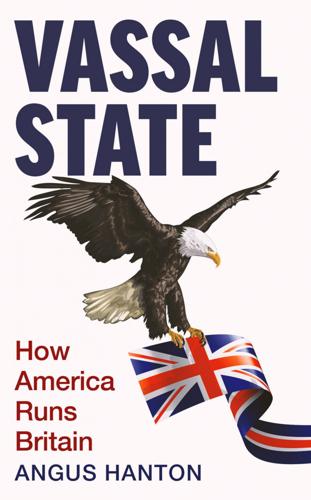
Vassal State
by
Angus Hanton
Published 25 Mar 2024
Viewed collectively, however, their endeavours could also look like keeping up with the Joneses. Space, in any case, is just the latest frontier of competition between the US tech titans for mastery of every conceivable sphere – including the oceans. In the first decade of this century, Paul Allen was locked in a battle with Oracle Corporation’s Larry Ellison to see who could build the bigger yacht. After Allen had commissioned the 416-foot Octopus, Ellison asked the dockyard building his boat, Rising Sun, to add an extension, bringing it to 452 feet in length.5 The frontiers these tech titans seek to tame are not merely mechanical, however. Peter Thiel, who founded PayPal with Elon Musk, has invested millions to assess the viability of building new societies on the oceans, outside the jurisdiction of any government, a concept known as ‘seasteading’.
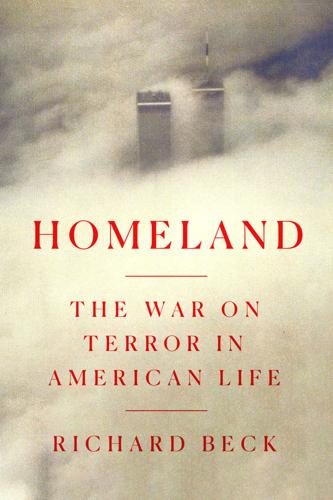
Homeland: The War on Terror in American Life
by
Richard Beck
Published 2 Sep 2024
“I’m deeply concerned about the rather slow pace at which we seem to be making this come true for America,” he said. “Talk won’t prevent terrorism; tools can help prevent terrorism.”[5] When Ashcroft referred to “tools,” he meant the kinds of things that tech entrepreneurs were building out in California’s Silicon Valley. Within weeks of the attacks, Oracle’s CEO, Larry Ellison, one of the world’s richest men, made his way to Washington to offer his company’s assistance in establishing a national system of identification cards. Oracle was a database company. It made software that allowed its customers to store, sort, and analyze huge amounts of information, and it maintained data storage facilities that clients could pay to use rather than having to shell out for hardware of their own.
…
For noncitizen residents, and for any foreign nationals who wanted to enter the United States, the cards would be mandatory. Ellison met with Vice President Dick Cheney to discuss the proposal, and he won the support of both John Ashcroft and the Democratic senator Dianne Feinstein, who counted Larry Ellison as one of her constituents.[6] The public was not very receptive to Ellison’s proposal. A central database containing a scan of every American’s eyeballs sounded a bit too much like something out of Orwell to be palatable. But the government’s ultimate rejection of the database might have had more to do with the timing and the messenger than with the proposal itself.

More Joel on Software
by
Joel Spolsky
Published 25 Jun 2008
You develop shoe-shining software in VB 3.0 using bits and pieces of JavaScript, Franz Lisp, and a FileMaker database running on an old Mac connected over the network using AppleScript, then 4. Everyone thinks it’s the cat’s whiskers, so, always having dreamed of starting your own software company and maybe being Bill Gates or perhaps even just Larry Ellison 5. You buy the rights to ShoeShiner 1.0 from your old company and get VC to start your own company, ShoeShiner LLC, marketing shoe-shining software, but Set Your Priorities 291 6. None of your beta testers can get it to work because of the obscure dependencies on AppleScript and the hard-coded IP addresses in the source code, so it takes a month to install at each client site, and 7.
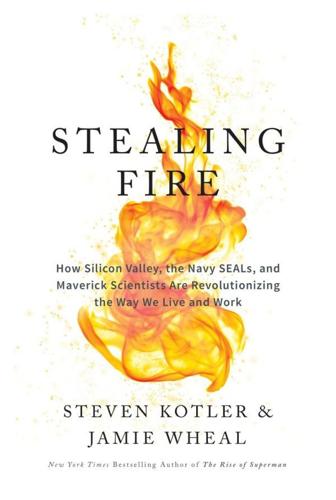
Stealing Fire: How Silicon Valley, the Navy SEALs, and Maverick Scientists Are Revolutionizing the Way We Live and Work
by
Steven Kotler
and
Jamie Wheal
Published 21 Feb 2017
The ecstasy will always come with the agony—that’s the human condition. Nothing we do absolves us from the broke-open beauty of that journey. So there will be cracks. Thankfully, there will be always be cracks. Because, as Cohen reminds us, that’s where the light gets in. Conclusion Row Your Boat or Fly Your Boat? In 2013, what Larry Ellison wanted, beyond all reason, was a win. So the founder of the software giant Oracle and one of the richest men1 in the world spent more than $10 million building the fastest boat ever to compete in the America’s Cup. The Oracle catamaran was equipped with futuristic hydrofoils that lifted the entire boat out of the water, enabling speeds of up to 55 knots.
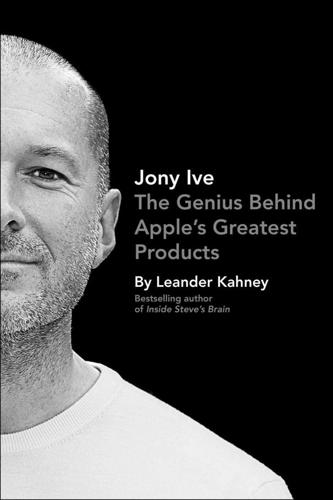
Jony Ive: The Genius Behind Apple's Greatest Products
by
Leander Kahney
Published 14 Nov 2013
It was perfect for schools and workplaces and it seemed, at first glance, ideal for consumers eager to access the Internet. Before Jobs’s return, in May 1996, Apple had joined Oracle Corporation and thirty other hardware and software companies in the Networking Computing Alliance, which set the standard for cheap, diskless computers based on a common networking platform. Jobs’s billionaire best friend, Larry Ellison, was especially bullish on NCs as the future of the computer industry. And as a newly installed member of Apple’s board, Ellison told the press that Apple was building an NC. He’d recently launched a start-up, Network Computing Inc., to kick-start the sector. Influenced by Ellison’s thinking, but also eager to compete with him, Jobs also talked up the NC idea.
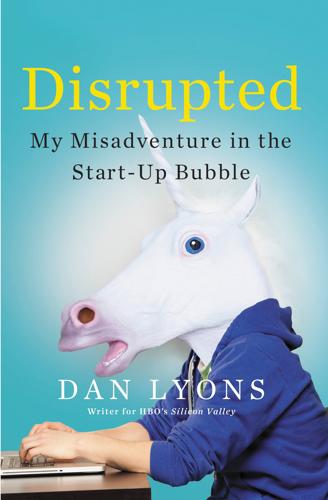
Disrupted: My Misadventure in the Start-Up Bubble
by
Dan Lyons
Published 4 Apr 2016
Jobs ranted and cursed at the people around him; he went drunk-driving with Bono and smashed into other drivers; he threw scalding tea on his long-suffering assistant; he got into trouble with the Securities and Exchange Commission and lied to investigators; he visited sweatshops in China where children made iPhones and came away feeling that he was the victim. With Sting, he traveled to the Peruvian rain forest, where they tripped on ayahuasca and ended up hugging and sobbing on a mud floor. He and his best friend, Oracle CEO Larry Ellison, drove to the Tenderloin in San Francisco and fired water cannons at transvestite hookers. They made prank phone calls, dialing a local Thai restaurants to order “penis sauce” or calling a hardware store in the Castro section of San Francisco to inquire about black caulk. Eventually I got caught.

Peers Inc: How People and Platforms Are Inventing the Collaborative Economy and Reinventing Capitalism
by
Robin Chase
Published 14 May 2015
However, a combination of fortuitous timing and MySQL’s open-source model led it to become the dominant database platform used in many early stage start-ups and Web apps, including Facebook and Twitter. Ultimately MySQL was acquired by Sun Microsystems in 2008, and in 2009 Oracle acquired Sun. The MySQL story is more compelling when one considers that it managed to use its free and open-source model to fend off competition from database juggernaut Oracle and its CEO, Larry Ellison, perhaps Silicon Valley’s most aggressive software entrepreneur. Wildly successful Peers Inc FOSS examples abound, including the popular Mozilla Firefox browser and the web server Apache. FOSS, because it is free, easily accessible, and useful, is fueling unprecedented rates of software/platform adoption and affordable innovation.
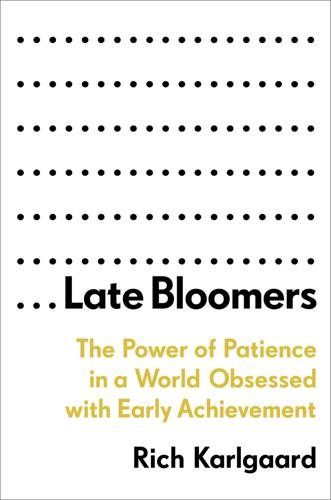
Late Bloomers: The Power of Patience in a World Obsessed With Early Achievement
by
Rich Karlgaard
Published 15 Apr 2019
I knew exactly what I wanted, because I had seen it years before in the Ugly stacks. My hunch about Upside was correct. Within a year of launching, I had the boyish-looking CEO of Sun Microsystems on the cover, caricatured as Michelangelo’s anatomically detailed sculpture David. I commissioned a long investigative article on Oracle, with founder Larry Ellison as Genghis Khan, plotting with his warlords, severed heads at their feet. I had Apple CEO John Sculley as Little Lord Fauntleroy in a sandbox, getting sand kicked on him. Within two years of launching Upside, everybody in technology and venture capital was paying attention to it. Bill Gates of Microsoft gave me four hours of interviews.
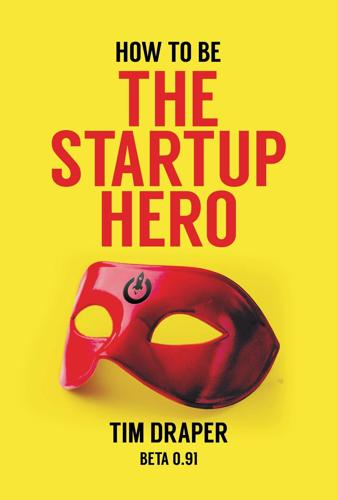
How to Be the Startup Hero: A Guide and Textbook for Entrepreneurs and Aspiring Entrepreneurs
by
Tim Draper
Published 18 Dec 2017
We teach future instead of history, we have a team-based approach rather than individualistic one, and while other schools fall in line with anything that ensures safety, we proudly declare ourselves to be a dangerous school, complete with survival training and open-ended projects and challenges. We believe that students, put to the task, can perform at a much higher level than ever imagined by other schools, and we believe that a student with a purpose can achieve anything in his or her imagination. Steve Jobs, Larry Ellison, Mark Zuckerberg, Elizabeth Holmes, Michael Dell, and many others dropped out of school to pursue their dreams. And they were enormously successful -- in some cases, in spite of their formal education. At Draper University, we embrace and support people who have the gumption to break from the pack to start businesses that might transform industries.

Private Equity: A Memoir
by
Carrie Sun
Published 13 Feb 2024
“How many people?” “Plan for up to eight.” “Minimum number of bedrooms?” “Let’s say six.” “Do you want direct beach access?” “Yes, definitely. Carbon Beach.” Malibu has over twenty miles of coastline along the Pacific Ocean. Carbon Beach, otherwise known as Billionaires’ Beach, is a mere mile of it, where Larry Ellison of Oracle had spent an estimated quarter billion dollars on nine homes. Because the houses there are properties of the 1 percent of the 1 percent of the 1 percent, Carbon Beach homeowners have no need or desire to rent out their abodes. After I spoke to Jen and Maya, who consulted Elisabeth as well as the kids’ schedules, I settled on a Friday afternoon to Sunday evening starting in eleven days.

How to Spend a Trillion Dollars
by
Rowan Hooper
Published 15 Jan 2020
Money spent Universal health care introduced in Ethiopia: $100 billion Vaccine development; expanded immunisation programme for emerging diseases; vaccine outreach programme: $100 billion Eradication of malaria and other tropical diseases: $100 billion Eradication of tuberculosis: $23 billion Cure and eradication of HIV and other infectious diseases: $30 billion Antibiotic resistance: $10 billion Complete map of all cell types in human body: $5 billion Solving heart disease, neurological disease and cancer: $100 billion each = $300 billion Curing damaged cells in the body and extending healthy lifespan by 40 years: $200 billion TOTAL: $868 billion * Not to be outdone, the co-founder of Oracle, Larry Ellison, has vowed to ‘defeat mortality’. ‘Death never made any sense to me,’ he has said. And PayPal co-founder Peter Thiel says death is just a problem to be solved. 3 Go carbon zero AIM: To massively cut our emissions of carbon dioxide and wean the world off fossil fuel. To transition to renewable energy, as fast as possible, and rebuild the power grids across the world.
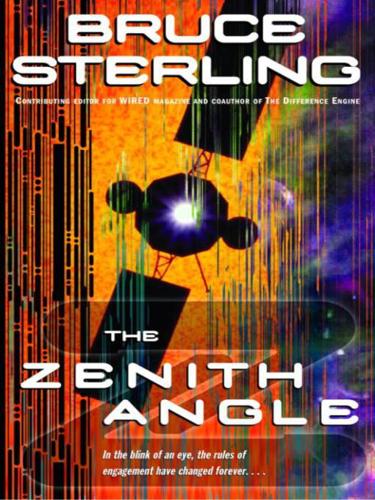
The Zenith Angle
by
Bruce Sterling
Published 27 Apr 2004
Jeb had a whole set of legends attached to him, like a shark followed by remora fish. Jeb had heart arrhythmias. He had advanced diabetes. He’d had a fistfight with Donald Rumsfeld and Condoleezza Rice had had to break it up (this was the best story, actually). Jeb got anxious phone calls three times a day from Larry Ellison. Jeb had a Republican Party slush fund. Jeb had hired Cuban exiles to wiretap the French Embassy. Jeb was addicted to Halcion pills. Jeb was secretly gay. He, Derek R. Vandeveer, had become the toughest, scariest cyberwarrior in Washington. It made Van wonder if he had ever understood anything about any other human being in his life.
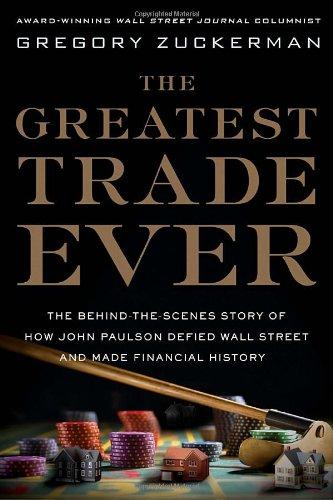
The greatest trade ever: the behind-the-scenes story of how John Paulson defied Wall Street and made financial history
by
Gregory Zuckerman
Published 3 Nov 2009
Appointments back to back, booked solid for the next three months, they look forward to their two-week vacation in January during which they will likely be glued to their BlackBerries or other such devices. What is the point? They will all be forgotten in fifty years anyway. Steve Ballmer, Steven Cohen, and Larry Ellison will all be forgotten. I do not understand the legacy thing. Nearly everyone will be forgotten. Give up on leaving your mark. Throw the BlackBerry away and enjoy life. So this is it. With all due respect, I am dropping out. …... I truly do not have a strong opinion about any market right now, other than to say that things will continue to get worse for some time, probably years.
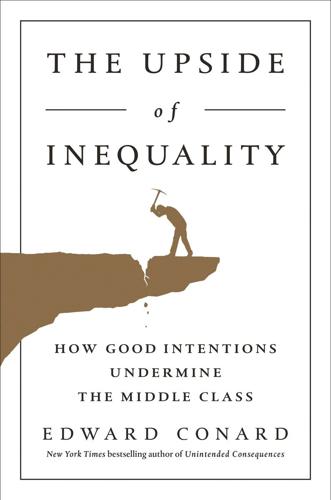
The Upside of Inequality
by
Edward Conard
Published 1 Sep 2016
Similarly, they point to the success of Bill Gates and others like him when marginal tax rates were higher.7 Perhaps only curiosity or glory motivated them. These arguments ignore the fact that high-tech entrepreneurialism was nascent prior to Bill Gates’s windfall, and that it has accelerated greatly since. Surely, the successes of Bill Gates, Steve Jobs, Larry Ellison, Jeff Bezos, Sergey Brin, Larry Page, and the other technology billionaires have sparked an enormous army of wishful risk-takers in their wake. In the short run, slightly higher tax rates may make imperceptible differences in the motivation of determined entrepreneurs. But these small differences have proved to have large compounding effects in the long run.
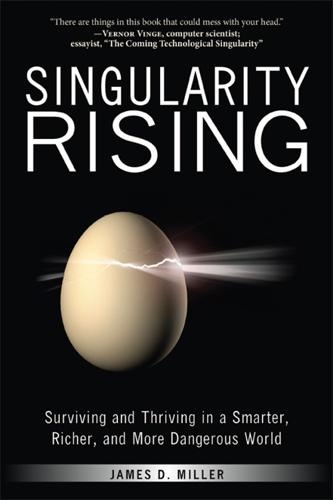
Singularity Rising: Surviving and Thriving in a Smarter, Richer, and More Dangerous World
by
James D. Miller
Published 14 Jun 2012
But chances are that if Peter is alive a thousand years from now, many of his contemporaries will be also. Peter backs the Methuselah Foundation, an organization striving to slow down aging by propelling mankind to a “longevity escape velocity” in which every year, medical science figures out how to increase the human life span by more than one year. Oracle cofounder Larry Ellison, one of the few men whose wealth Peter might envy, also wants to live a long, long time. To further this end, Ellison has donated an estimated $100 to $200 million to anti-aging research.315 If billionaires aged differently than college professors, or if the cure for aging was in creating high-marginal-cost medical treatments, then Ellison and Thiel would have much greater expected life spans than I would.
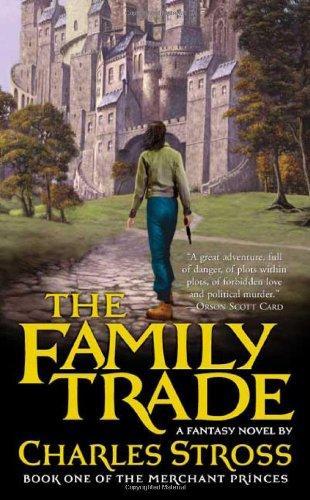
Family Trade
by
Stross, Charles
Published 6 Jan 2004
Once the Clans recognize me officially, at an annual session, that is. And assuming—as Roland says—nobody assassinates me. Princess Beckstein, signing off for The Weatherman, or maybe Business 2.0. Jesus, who’d have thought I’d end up starring in some kind of twisted remake of Cinderella? Or that it would turn out so weird?” And I called Craig Venter and Larry Ellison robber barons in print, she thought mordantly, keying the “pause” button again. “Put that way it sounds funny, but it isn’t. First I thought it was the feds who broke in and grabbed me, and that’s pretty damn scary to begin with. FEMA, secret security courts with hearings held in camera. Then, it could have been the mob, if the mob looked like FBI agents.
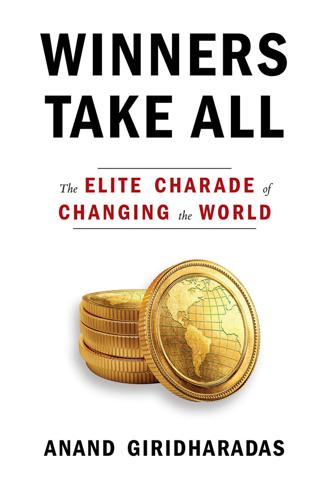
Winners Take All: The Elite Charade of Changing the World
by
Anand Giridharadas
Published 27 Aug 2018
In fact, it was nine billionaires, not sixty-two, as Oxfam would later say when better data came in. And the following year, the number of billionaires it took to account for half the world’s resources dropped from nine to eight. Six of those eight made their money in the supposedly equalizing field of technology: Gates, Zuckerberg, Jeff Bezos of Amazon, Larry Ellison of Oracle, Carlos Slim of Telmex and other Mexican businesses, and Michael Bloomberg, the purveyor of computer terminals. Another, Amancio Ortega, who built the retailer Zara, was famous for applying advanced technology to manufacturing and for automating his factories. The final member of the gang of eight, Warren Buffett, was a major shareholder in Apple and IBM.
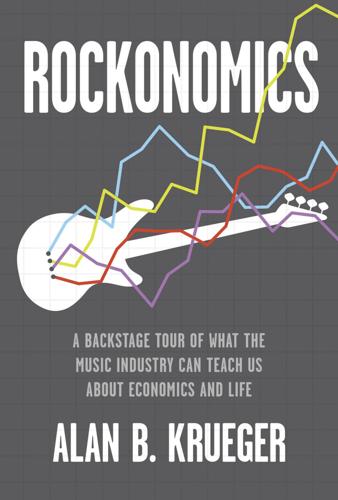
Rockonomics: A Backstage Tour of What the Music Industry Can Teach Us About Economics and Life
by
Alan B. Krueger
Published 3 Jun 2019
By this measure, incomes in the U.S. economy today are almost as skewed as they were in the rock and roll industry when Bruce Springsteen cut “Born in the U.S.A.” One reason the entire economy has veered toward a superstar, winner-take-all affair is the rise of digital technology. Successful entrepreneurs can turn apps and digital technology into fortunes worth billions of dollars. Five of the six wealthiest Americans (Bill Gates, Mark Zuckerberg, Larry Ellison, Michael Bloomberg, and Jeff Bezos)—whose combined wealth equals nearly that of half of the world’s population—made their fortunes because of digital technology.16 Digital technology is scalable. One day soon the top surgeons may be able to operate on a great many more patients due to improvements in digital technology.

Utopia Is Creepy: And Other Provocations
by
Nicholas Carr
Published 5 Sep 2016
Page drives a Prius, which costs around $21,000. Brin gets around for the most part on in-line skates, and he still lives in a rented apartment.” That same year, the BBC wrote that “far from living an extravagant lifestyle, complete with yachts and private jets like fellow software leader Oracle boss Larry Ellison,” Page and Brin “live modest, unassuming lifestyles. They don’t even have sports cars, and instead are said to each drive a Toyota Prius, a plain-looking but rather environmentally friendly saloon.” Last year, Business Week gushed, “Flash and ostentation cut no ice at Google. . . . The status vehicle of choice at the Googleplex is the Toyota Prius hybrid, which both co-founders Sergey Brin and Larry Page drive.”

The End of Illness
by
David B. Agus
Published 15 Oct 2012
Specifically, David Golde, for taking me under your wing; I often wish today you were still here so that I could pick up the phone and once again seek your counsel. To Andy Grove for inspiring me to take greater risks in my thinking and career choices. To my dad for always modeling to me how to be as loving and attentive a doctor as a father. To Steven Spielberg, for your contagious passion and insight. To Larry Ellison, for your certainty and trust in me. To Marc Benioff, for your true friendship. To Al Gore, for pushing me in the right direction (and first introducing me to Danny Hillis). To Max Nikias, Carmen Puliafito, and Eli Broad, for bringing me to USC, a remarkable academic home. To Sumner Redstone, for your unwavering belief in me.
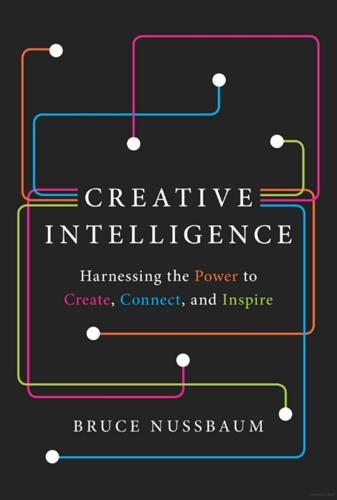
Creative Intelligence: Harnessing the Power to Create, Connect, and Inspire
by
Bruce Nussbaum
Published 5 Mar 2013
Of course, the strategy works the other way too—rather than selling to a larger platform, some entrepreneurs scale by expanding their original platform. Brian Chesky, cofounder of Airbnb, bought smaller platforms similar to his company’s model—Crashpadder and Accoleo, both in Europe. This has been Larry Ellison’s strategy at Oracle as well. And eBay has grown by buying PayPal and other smaller companies. Even Apple has begun to do this by buying the company that made Siri. Of course, you can still pivot and decide not to scale, at least not much. The growing local movement is putting a higher value on staying in the neighborhood than it had in the era when globalization was uncritically celebrated.
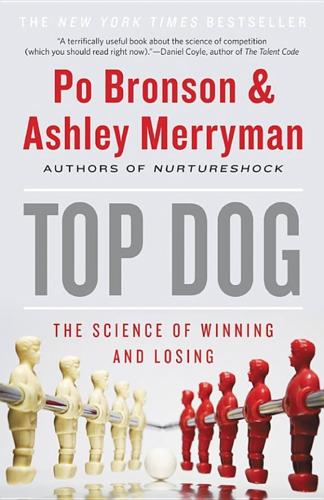
Top Dog: The Science of Winning and Losing
by
Po Bronson
and
Ashley Merryman
Published 19 Feb 2013
The most successful entrepreneurs had ring fingers 10% to 20% longer than their index fingers. As you hold up your hand to examine your own two fingers, this finding probably sounds downright absurd to you. For decades, people have speculated about what made Steve Jobs special, what set apart the Richard Bransons and Larry Ellisons and Mark Zuckerbergs from everybody else—what character traits facilitated their success, or what in their childhoods drove them to build their empires—and here comes two Italian economists to argue it’s all about the length of their fingers! Well, it’s not really about the length of their fingers.

A World Without Work: Technology, Automation, and How We Should Respond
by
Daniel Susskind
Published 14 Jan 2020
The list of nongraduates is striking: Sergey Brin and Larry Page left Stanford University; Elon Musk did likewise; Bill Gates and Mark Zuckerberg left Harvard University; Steve Jobs left Reed College; Michael Dell left the University of Texas; Travis Kalanick left the University of California; Evan Williams and Jack Dorsey left the University of Nebraska and New York University, respectively; Larry Ellison left both the University of Illinois and the University of Chicago; Arash Ferdowsi (cofounder of DropBox) left MIT; and Daniel Ek (cofounder of Spotify) left the Royal Institute of Technology.22 This list could go on. Though these entrepreneurs stepped away for various reasons, all shared the same trajectory afterward: out of education, and into the stratosphere of the labor market.
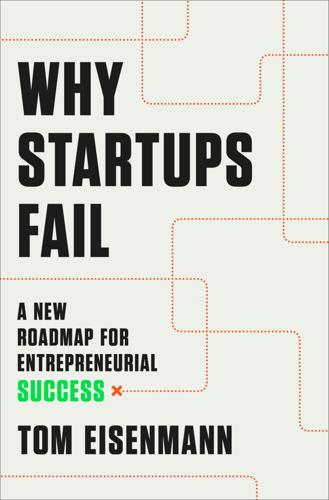
Why Startups Fail: A New Roadmap for Entrepreneurial Success
by
Tom Eisenmann
Published 29 Mar 2021
Published accounts of Better Place and Segway that I draw upon in this chapter put Agassi and Kamen on the high end of the spectrum. If Agassi and Kamen are narcissists, then they’re in good company: In his seminal Harvard Business Review article, “Narcissistic Leaders: The Incredible Pros, the Inevitable Cons,” psychoanalyst Michael Maccoby puts Bill Gates, Steve Jobs, Larry Ellison, and Andy Grove in the same camp. Research has shown that, on average, entrepreneurs exhibit greater degrees of narcissism than the general public. But Maccoby draws a distinction between “productive narcissists”—leaders who leverage their vision, drive, and charisma to achieve breakthrough change—and those who stumble, after silencing dissenting voices and surrounding themselves with yes-men who’ll follow their direction uncritically.
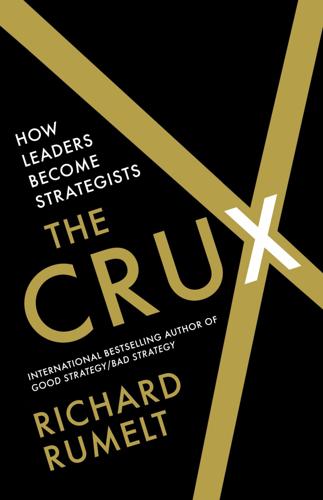
The Crux
by
Richard Rumelt
Published 27 Apr 2022
What Benioff envisioned was the simplification gained by putting all of the software in the “cloud,” so that anyone with a Web browser could use it. With a cloud-based CRM, the user could simply sign on via the Web and have a CRM for a monthly fee. There would be no local servers, no charges for installation or maintenance, and no IT department. Benioff left Oracle in 1999 with the blessing of CEO Larry Ellison plus some $2 million in seed capital; other chunks of venture capital were fairly easily attracted. It was the boom years for dotcom, and the endorsement from Ellison was significant. The initial critical challenge he faced was attracting very good developers and more capital to feed them. How would you choose to attract the best developers?
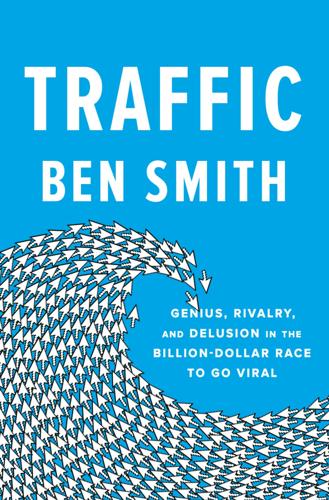
Traffic: Genius, Rivalry, and Delusion in the Billion-Dollar Race to Go Viral
by
Ben Smith
Published 2 May 2023
“So I’m like, ‘He should definitely leave college.’ And he does!” They left him in San Francisco to round up the news during the day, and to show up at parties and try to gather gossip at night. It was an incredible ride, Douglas remembered later. Once he walked up to Mayer at a party at Oracle founder Larry Ellison’s lavish mansion, and she literally ran away from him. For the young blogger, it was “a sick, undeserved rush of power.” One particular target was the young founder of Facebook, Mark Zuckerberg. “We Want to Know If You’re Single Mark Zuckerberg so We Can Contact You Maybe,” read one headline soon after the blog’s launch.
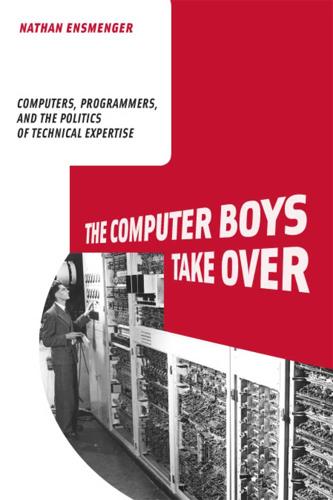
The Computer Boys Take Over: Computers, Programmers, and the Politics of Technical Expertise
by
Nathan L. Ensmenger
Published 31 Jul 2010
Despite their omnipresence in contemporary popular culture and sizable representation in the modern information economy, historians have thus far devoted little attention to these ubiquitous but mysterious computer specialists. There are, of course, whole shelves of books devoted to the small number of inventors and entrepreneurs—Bill Gates, Steve Jobs, and Larry Ellison, in particular—who have managed to translate their computing expertise into fabulous wealth and personal celebrity. There is also considerable literature on the intriguingly subversive subculture of teenage computer hackers. Since the late 1970s, these geeky adolescents have been alternatively hailed as the heroic harbingers of the coming “computer revolution” or castigated as dangerous cybercriminals.7 But neither of these groups is representative of the larger computing community.
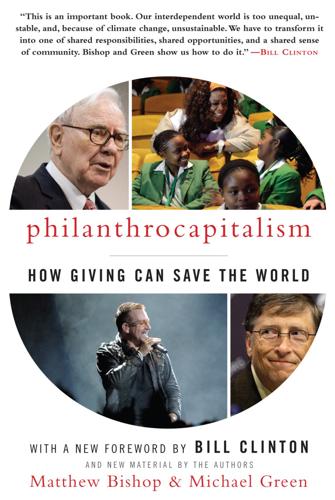
Philanthrocapitalism
by
Matthew Bishop
,
Michael Green
and
Bill Clinton
Published 29 Sep 2008
Summers recalls that there was fierce opposition within Harvard to his efforts to bring in new money and create new collaborative institutions inside the university, which can scare off some would-be donors. “There was often a sense in the Public Health School that they should have a monopoly over consideration of these issues and that there were no structural changes necessary,” Summers says. He managed to convince Larry Ellison, the billionaire founder of Oracle and a reputedly reluctant philanthropist, to donate $115 million to create the Ellison Institute for World Health. But when Summers was forced out in 2006—having offended too many academics by his attempts to shake the university out of its ossified ways, as well as by commenting unwisely about the scientific abilities of women—Ellison withdrew his offer, saying he had lost confidence in the university’s ability to spend the money without Summers at the helm.
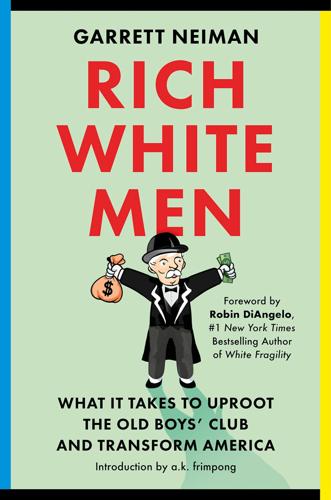
Rich White Men: What It Takes to Uproot the Old Boys' Club and Transform America
by
Garrett Neiman
Published 19 Jun 2023
Half of Jewish Americans report annual household incomes above $100,000, and one-quarter report incomes above $200,000.30 While Jewish Americans are less than 2 percent of the American population, they make up 9 percent of US senators and a third of America’s billionaires.31 Jewish billionaires Mark Zuckerberg, Larry Page, Sergey Brin, Larry Ellison, and Michael Bloomberg—whose combined wealth exceeds $500 billion—are five of America’s ten wealthiest people.32 But every ethnic group that has accessed American power has one thing in common: rich white men eventually deemed their light skin as assimilable into whiteness. In his 1995 book How the Irish Became White, Noel Ignatiev describes how oppressed immigrants became American oppressors.
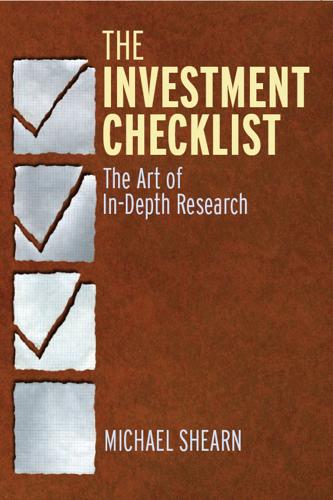
The Investment Checklist: The Art of In-Depth Research
by
Michael Shearn
Published 8 Nov 2011
Under Nardelli, 35,000 workers at Chrysler were laid off and Chrysler headed for bankruptcy. Nardelli left after only 21 months. In both of these instances, Nardelli was paid not on the performance of the business, but instead was paid to join the business. However, large compensation packages do not always necessarily indicate that a stock will underperform. For example, Larry Ellison, founder and chief executive of software maker Oracle, has been one of the highest-paid CEOs of any publicly traded business, earning in excess of $78 million in option awards alone in 2009, yet investors in Oracle would have made 3.5 times their money in the last 10 years ended 2010. (However, it is still difficult to argue that Ellison needs additional stock options to motivate him to do his job, as he owns 23.4 percent of Oracle, as of August 9, 2010.23) Look for Managers Who Don’t Monopolize Stock Options but Offer Options to All Employees You need to determine if the stock option plan of a company is geared to only a few of the top executive officers or if options are widely distributed among employees.

Geek Heresy: Rescuing Social Change From the Cult of Technology
by
Kentaro Toyama
Published 25 May 2015
I’ve been in hundreds of discussions about global poverty with academics, entrepreneurs, nonprofit staff, program officers, and government ministers. With striking regularity, someone will invoke some version of these points to justify their pet intervention with smug certainty of its power. Technocratic zealots aren’t satisfied by seeing their point of view acknowledged; they want it to prevail. In this, they call to mind Larry Ellison, the cofounder and CEO of Oracle, who once said that he modeled his business tactics on Genghis Khan. “It is not sufficient that I succeed,” he said. “All others must fail.”58 Belief in the Tech Commandments isn’t limited to technologists, packaged interventionists, or devotees of RCTs, social enterprises, and happiness.

The Wires of War: Technology and the Global Struggle for Power
by
Jacob Helberg
Published 11 Oct 2021
The decade was also a high-water mark in Washington’s love affair with Silicon Valley; this crystallized when Secretary of State Hillary Clinton told a group of tech executives, “Use me like an app!”15 Hardly a White House roundtable or commission was complete without a handful of Silicon Valley luminaries. State dinners at the White House were studded with tech titans—Zuckerberg, Apple’s Tim Cook, Netflix CEO Reed Hastings, Reid Hoffman of LinkedIn, Oracle chairman Larry Ellison.16 The so-called tech surge to overhaul the healthcare.gov website in late 2013 brought a growing number of technologists into government.17 Google seemed so completely intertwined with the Obama administration that some dubbed it the “Android administration,” after the Google mobile phone.18 Googlers flooded into the administration, and a steady stream of White House staffers left 1600 Pennsylvania Avenue in Washington for 1600 Amphitheatre Parkway in Mountain View.19 It had not yet become cliché—or ironic—to say that we were changing the world.
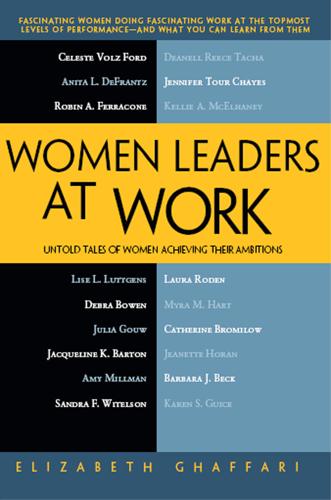
Women Leaders at Work: Untold Tales of Women Achieving Their Ambitions
by
Elizabeth Ghaffari
Published 5 Dec 2011
They coached them well because many of these women did not have any experience in how to do the pitch, how to engage that conversation, how to do “the push and pull” required in the venture community. Springboard held the first event in San Francisco at Oracle because Kay Koplovitz at the time was on the board there and was able to convince Larry Ellison that that was a good thing. When they planned to come to New England, they asked me if Harvard Business School would be willing to host it. That was a big step for Harvard Business School because they primarily host things that are Harvard-related. Harvard seldom gets involved with outside nonprofits that are supported by individual members of the faculty or the staff here.

Culture and Prosperity: The Truth About Markets - Why Some Nations Are Rich but Most Remain Poor
by
John Kay
Published 24 May 2004
The ratio of the market value of companies to the value of their tangible assets rose to unprecedented levels during the bubble. 10. Bruck (1989). 11. Chrystal (1991). In December 1997, Michael Eisner of Disney exercised options worth $60 million. Conyon and Murphy (2000). 12. In 2001 the top ten in the Forbes list were Gates, Allen, and Ballmer ofMicrosoft, Buffett, Larry Ellison of Oracle, and five members of the Walton family. 13. Lowenstein (1995). 14. BUFFETfW. 15. Ortega (1999) provides a more skeptical account. 16. In 2000, action in the English courts and by his brother, the sultan, finally broughtJefri's activities to a halt (Newsweek) December 10, 2000). 17. Lowenstein (1995), 4. 18.

Elon Musk: Tesla, SpaceX, and the Quest for a Fantastic Future
by
Ashlee Vance
Published 18 May 2015
Even very wealthy people like Lauren would tend to reserve something like a McLaren for special events or the occasional Sunday drive. Not Musk. He drove it all around Silicon Valley and parked it on the street by the X.com offices. His friends were horrified to see such a work of art covered with bird droppings or in the parking lot of a Safeway. One day, Musk e-mailed fellow McLaren owner Larry Ellison, the billionaire cofounder of the software maker Oracle, out of the blue to see if he wanted to go race cars around a track for fun. Jim Clark, another billionaire who liked fast things, caught wind of the proposal and told a friend that he needed to rush over to the local Ferrari dealership to buy something that could compete.
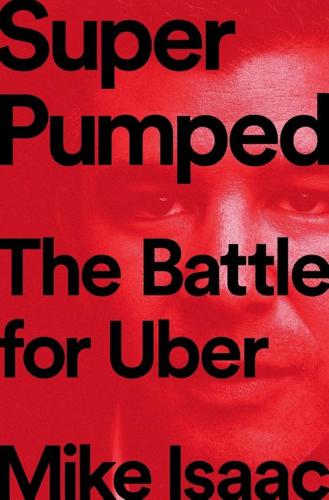
Super Pumped: The Battle for Uber
by
Mike Isaac
Published 2 Sep 2019
They shared their financial models with the young Gurley, imparting years of valuable insights. One colleague, Charlie Wolf, helped Gurley get into Agenda, a famous annual conference of the tech elite in San Francisco. Gurley wandered the conference starstruck, the former benchwarmer trying to imagine himself belonging in a crowd that contained people like Bill Gates, Larry Ellison and Michael Dell—some of the biggest names in the history of computing. His success wasn’t due only to helpful mentors. He quickly forged his reputation by making the right calls on technology stocks and market trends. So much so that he impressed one of Credit Suisse’s bigshots, Frank Quattrone, a legendary Silicon Valley investment banker involved in some of the highest profile technology company deals in history.
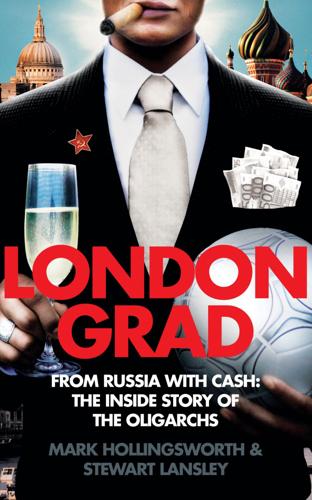
Londongrad: From Russia With Cash; The Inside Story of the Oligarchs
by
Mark Hollingsworth
and
Stewart Lansley
Published 22 Jul 2009
The prestigious vessel requires a crew of sixty-five and carries a large aquarium, an arsenal of tenders, and water toys, including a 22-metre sailing yacht, two 60-knot Buzzi sports boats, and a landing craft to carry a 4x4 Land Rover. The boat leapfrogged Abramovich overnight into the ranks of the super-yacht owners, up there with Microsoft’s Paul Allen, with Oracle founder and racing yachtsman Larry Ellison, and with Prince Sultan bin Abdul Aziz, the Crown Prince of Saudi Arabia. You might think that owning one of the world’s most impressive super-yachts would be enough even for an oligarch, but a few months later in 2003, in conditions of the utmost secrecy, Abramovich completed another deal, one that propelled him into the ‘mega-yacht’ league.
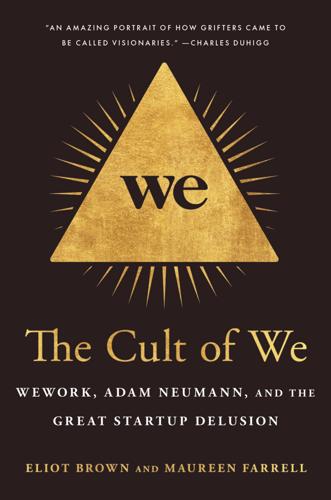
The Cult of We: WeWork, Adam Neumann, and the Great Startup Delusion
by
Eliot Brown
and
Maureen Farrell
Published 19 Jul 2021
A visit to Las Vegas for a week in November was a critical part of that. Once a year, more than 100,000 people would fly into Nevada to attend Comdex, a conference founded back in 1979 that had evolved into the world’s fair of the personal-computing industry, growing in size and stature along with the tech industry. Tech glitterati like Gates, Oracle’s co-founder Larry Ellison, and Intel’s CEO, Andy Grove, vied for key speaking spots, while companies unveiled their latest gadgets and futuristic-seeming products like high-density compact discs, Intel’s Pentium Pro computer chips, and Plasmatron monitors. It all gave Comdex goers an early glimpse—sometimes as much as a year in advance—into consumer technologies that might soon come to market.
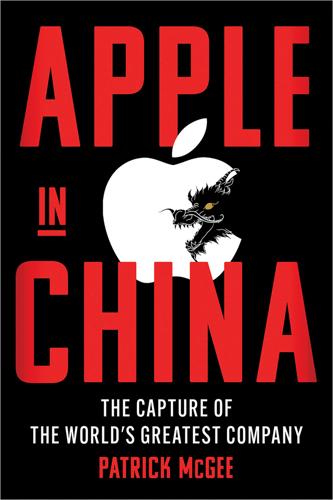
Apple in China: The Capture of the World's Greatest Company
by
Patrick McGee
Published 13 May 2025
The “secret sauce” of how Apple trains America’s biggest rival with cutting-edge expertise could very well be in jeopardy. That Tim Cook personally donated $1 million to Trump’s inauguration suggests he’s well aware of the threat. The Cook Era Two years after the death of Steve Jobs, Oracle CEO Larry Ellison claimed it was inevitable Apple would struggle under Tim Cook. You only had to look, he said, at what happened to the company in the period after Jobs was ousted in 1985. “We already know. We saw. We conducted the experiment,” Ellison told talk show host Charlie Rose in 2013. His finger tracing an upwards curve, he said Apple had been an extraordinary success during Jobs’s first spell at the company, only to slump—his finger dropped—when he left.
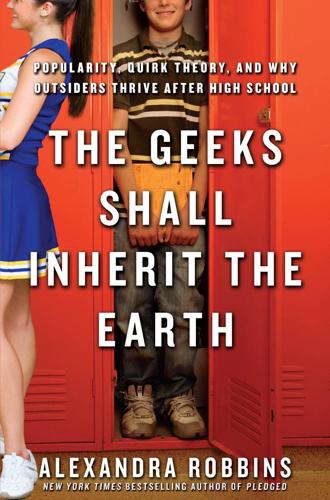
The Geeks Shall Inherit the Earth: Popularity, Quirk Theory, and Why Outsiders Thrive After High School
by
Alexandra Robbins
Published 31 Mar 2009
More important, many teenage nerds and geeks now choose to celebrate their label rather than allow it to imprison them. These outcasts are rising up, exulting in the “geek cred” that differentiates them from other groups and the knowledge and precision that, as Geoffrey suggested, eventually will enable them to profit financially (as have, to name a few, Paul Allen, Sergey Brin, Larry Ellison, Bill Gates, Steve Jobs, Larry Page, and Steve Wozniak, some of whom themselves exemplify quirk theory). They are realizing at an early age that the geeks (and loners, punks, floaters, dorks, and various other outcasts) shall inherit the earth. Some students are fighting their marginalization by co-opting typically derogatory terms.
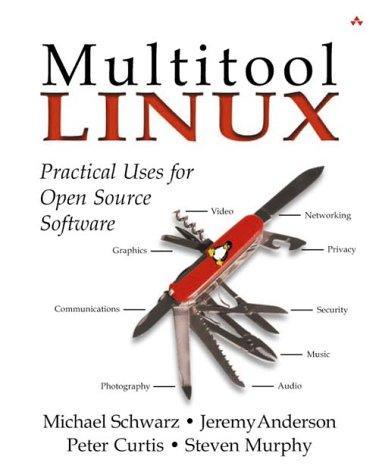
Multitool Linux: Practical Uses for Open Source Software
by
Michael Schwarz
,
Jeremy Anderson
and
Peter Curtis
Published 7 May 2002
There is a very simple remedy to this, however: Don't use GPL'ed code. The GPL is very hostile to closed or proprietary software. If you believe that you will develop a new piece of software and it will be so special that no one else will be able to reproduce it, and that keeping it secret is the best way to make you as rich as, well, Bill Gates or Larry Ellison, then get on with it and good luck! It is certainly within Stallman's rights (or those of anyone else who chooses to use the GPL) to refuse you the right to use any of his code on your path to proprietary riches. The GPL protects not just the author's immediate interest of keeping her code open, it also protects her broader interest, in that there is an ever-growing body of free software out there to learn from and build from.
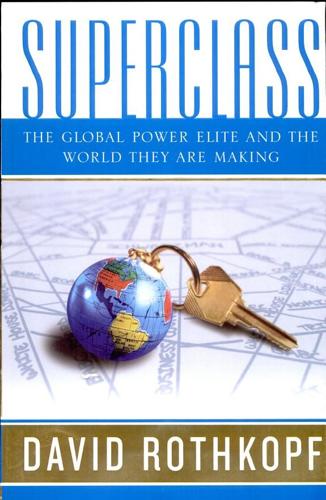
Superclass: The Global Power Elite and the World They Are Making
by
David Rothkopf
Published 18 Mar 2008
And I think it is true again today. But Freud recognized that there is a darker side to narcissism. Narcissists, he pointed out, are emotionally isolated and highly distrustful. Perceived threats can trigger rage. Achievements can feed feelings of grandiosity… Consider how an executive at Oracle described his narcissistic CEO Larry Ellison: “The difference between God and Larry is that God does not believe he is Larry.” That observation is amusing, but it is also troubling. Not surprisingly, most people still think of narcissists in a primarily negative way. After all, Freud named the type after the mythical figure Narcissus, who died because of his pathological preoccupation with himself.
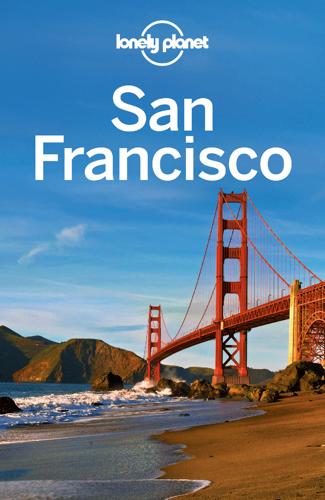
San Francisco
by
Lonely Planet
Powell-Hyde Cable Car The ascent up Nob Hill feels like the world’s longest roller-coaster climb – but on the Powell-Hyde cable car, the biggest thrills are still ahead. This cable car bobs up and down hills, with the Golden Gate Bridge popping in and out of view on Russian Hill. This isn’t a million-dollar view, it’s a $40 million view. That’s how much Oracle CEO and America’s Cup enthusiast Larry Ellison paid in 2011 to buy his neighbor’s house atop Russian Hill, since his own bay view was partially obstructed by trees. Hop off the cable car at Lombard St to walk the zig-zagging route to North Beach. But Russian Hill’s best scenery is hidden nearby. Duck into Russell St, to spot Jack Kerouac’s Love Shack where he wrote On the Road, or follow stairway walks to shady Macondray Lane and blooming Ina Coolbrith Park.

Terms of Service: Social Media and the Price of Constant Connection
by
Jacob Silverman
Published 17 Mar 2015
Steve Jobs remains secure in his perch as an industry icon, his example now posthumous and unimpeachable. The industry’s triumphant individualism has been augmented by the introduction of Ayn Rand as Silicon Valley’s de facto house philosopher; her atavistic arguments for the virtues of selfishness and unfettered enterprise have found supporters from Wikipedia’s Jimmy Wales to Oracle’s Larry Ellison. Unabashed cyber-libertarianism, combined with an avaricious and wholly unconflicted brand of consumerism, permeates America’s digital elite. Evgeny Morozov, a fierce critic of the industry, highlighted two important strains of belief in his recent books: the congenital utopianism of Silicon Valley moguls and their attendant faith in technological solutionism.
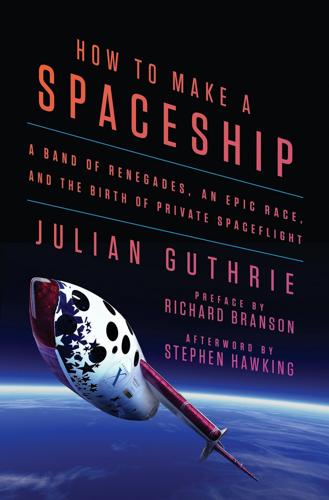
How to Make a Spaceship: A Band of Renegades, an Epic Race, and the Birth of Private Spaceflight
by
Julian Guthrie
Published 19 Sep 2016
I was immediately drawn into Peter’s story—of the space geek kid who can’t let go of an out-of-this-world dream—and the even bigger tale of how the private race to space was launched. I love underdog stories, and this embodies a great David versus Goliath struggle. I had just finished doing publicity for my last book, on Larry Ellison and his quest for the America’s Cup—and his unlikely partnership with a radiator repairman who was the commodore of a blue-collar boating club. I realized Peter’s story, and the story of the men and women who went after the Ansari XPRIZE, would make for a compelling book. Peter said he had been waiting to find the right writer to tell this story of how history was made.
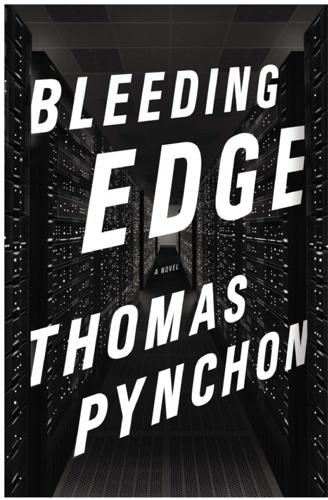
Bleeding Edge: A Novel
by
Thomas Pynchon
Published 16 Sep 2013
“If you were doing something in secret and didn’t want the attention, what better way to have it ridiculed and dismissed than bring in a few Californian elements?” “Ice doesn’t strike me as an antigovernment crusader or a seeker after truth.” “Maybe he thinks it’s all real and wants to be duked in. If he isn’t already. He doesn’t talk about it at all. Everybody knows that Larry Ellison races yachts, Bill Gross collects stamps. But this, what Forbes would probably call, ‘passion’ of Ice’s, isn’t too widely known. Yet.” “Sounds like something you want to post on your Weblog.” “Not till I find out more. Every day there’s new evidence, too much Ice money going for hidden purposes in too many directions.

Fancy Bear Goes Phishing: The Dark History of the Information Age, in Five Extraordinary Hacks
by
Scott J. Shapiro
Microsoft can charge monopolistic prices, and engage in other anti- competitive practices, because it knows that most users are locked into its product. Frank and Cook argued that Winner Take All markets exacerbate inequalities. When only a few winners get the lion’s share, the rest fight over the scraps. It is worth noting that of the ten richest people in the world, six are tech billionaires, and two (Bill Gates and Larry Ellison) are founders of operating system companies (Microsoft and Oracle), with a combined wealth of $250 billion. Winner Take All markets for technology exhibit other pathologies. Because they tend to be sticky and non-ergodic, the technologies that win may not be the best-performing ones. JOS might be the superior operating system, but since Microsoft got to market first, we are all stuck with it.
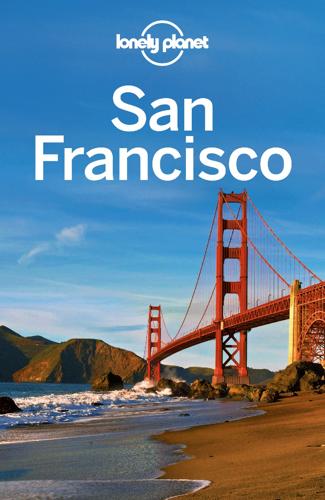
San Francisco
by
Lonely Planet
Powell-Hyde Cable Car The ascent up Nob Hill feels like the world’s longest roller-coaster climb – but on the Powell-Hyde cable car, the biggest thrills are still ahead. This cable car bobs up and down hills, with the Golden Gate Bridge popping in and out of view on Russian Hill. This isn’t a million-dollar view, it’s a $40 million view. That’s how much Oracle CEO and America’s Cup enthusiast Larry Ellison paid in 2011 to buy his neighbor’s house atop Russian Hill, since his own bay view was partially obstructed by trees. Hop off the cable car at Lombard St to walk the zig-zagging route to North Beach. But Russian Hill’s best scenery is hidden nearby. Duck into Russell St, to spot Jack Kerouac’s Love Shack where he wrote On the Road, or follow stairway walks to shady Macondray Lane and blooming Ina Coolbrith Park.

Scale: The Universal Laws of Growth, Innovation, Sustainability, and the Pace of Life in Organisms, Cities, Economies, and Companies
by
Geoffrey West
Published 15 May 2017
It is also not surprising that some of the most prominent of these are funded by Silicon Valley tycoons. After all, they have revolutionized society and not unreasonably want both themselves and their hugely successful companies to go on living forever and are willing to spend their money in trying to do so. Among the more prominent ones are Larry Ellison, the founder of Oracle, whose foundation has spent hundreds of millions of dollars on aging research; Peter Thiel, a cofounder of PayPal, who has invested millions in biotech companies oriented toward solving the problem of aging; and Larry Page, a cofounder of Google, who started Calico (the California Life Company), whose focus is on aging research and life extension.

WTF?: What's the Future and Why It's Up to Us
by
Tim O'Reilly
Published 9 Oct 2017
Former employees make accusations of a toxic workplace culture that tolerates sexual harassment. It is easy to forget that many of the people who invent the future do so by crashing through barriers, crushing competitors, and dominating a new industry by force of will as well as intellect. Sometimes dirty tricks come into play. Thomas Edison and John D. Rockefeller, Bill Gates and Larry Ellison, were all justifiably reviled at various points in their careers. When I began my work in computing, Microsoft was routinely referred to as “the Evil Empire.” Whatever you may think of Uber, it is hard to deny its impact on the economy. If we want to understand the future, we have to understand Uber.
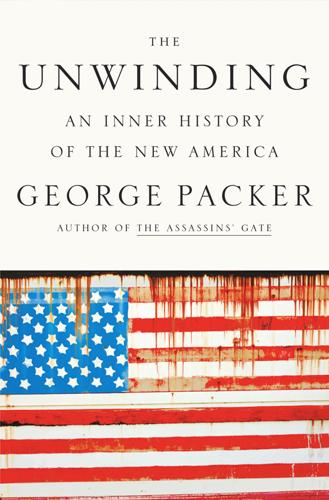
The Unwinding: An Inner History of the New America
by
George Packer
Published 4 Mar 2014
Parents dressed in leopard print shirts, skintight minidresses, and Spinal Tap or Tina Turner wigs, ate “Jumpin’ Jack Flash” hanger steaks, danced to an eighties band called Notorious, and were goaded by the auctioneer to bid skyward on Pimp My Hog! and Rockin’ Goddess Retreat. A tour of the famous Japanese garden of Larry Ellison—CEO of Oracle, the third-wealthiest American, and the highest-paid executive of the decade—went for twenty thousand dollars; a Mad Men–themed dinner for sixteen at a private home (“Amid the libations and smokes, inhibitions are shed and your behavior is worthy only of regret”) was pumped up to forty-three thousand dollars by a real estate investor and his wife.

The Rise and Fall of Nations: Forces of Change in the Post-Crisis World
by
Ruchir Sharma
Published 5 Jun 2016
Today immigrants make up 13 percent of the total U.S. population, but they account for 25 percent of the new business owners and 30 percent of the people working in Silicon Valley. Of the top twenty-five U.S. tech companies in 2013, 60 percent were founded by first- or second-generation immigrants. Steve Jobs at Apple: second generation from Syria. Sergey Brin at Google: first generation from Russia. Larry Ellison at Oracle: second generation from Russia. Jeff Bezos at Amazon: second generation from Cuba. While many of these founders with immigrant roots hail from countries mired in war or economic dysfunction, quite a few come from families that left the heavily regulated economies of Europe, including old East Germany (Konstantin Guericke of Symantec), France (Pierre Omidyar of eBay), and Italy (Roger Marino of EMC).

The Billionaire's Apprentice: The Rise of the Indian-American Elite and the Fall of the Galleon Hedge Fund
by
Anita Raghavan
Published 4 Jun 2013
In 2000, the couple splurged on their biggest purchase yet, a nine-thousand-square-foot mansion with six bedrooms and six and a half bathrooms and more than half a dozen marble fireplaces, in Atherton, California, the richest town in Silicon Valley, which locals call the “home of the bazillionaires.” The price tag was $10.5 million. The Khans paid all cash. Their new house was on Isabella Avenue, several doors down from Oracle billionaire Larry Ellison’s exquisitely simple but exorbitantly expensive Japanese-style abode. In their seven years living in Atherton, the Khans never got an invitation to visit Ellison’s place or drop by the home of another neighbor, Carol Bartz, the former chief executive of Yahoo! Inc. Set on one and a half acres of land, the Khans’ new house had a pool, a tennis court, and a two-story guesthouse, which Roomy turned into an office.
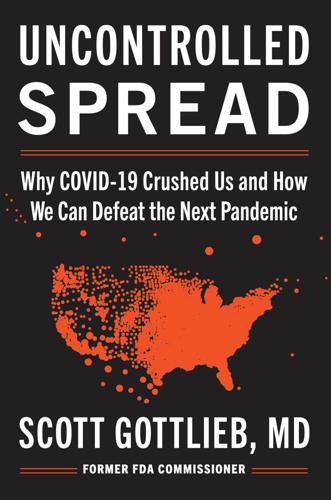
Uncontrolled Spread: Why COVID-19 Crushed Us and How We Can Defeat the Next Pandemic
by
Scott Gottlieb
Published 20 Sep 2021
The next day, at a press conference, the president said that the drug was soon going to be made widely available and “given out to large groups of people.”32 Ten days later, on March 28, Hahn would issue an authorization for the drug’s emergency use as a hospital-based treatment of COVID.33 Privately, those around the commissioner said that the decision to issue the EUA was driven by pressure from officials at HHS, who in turn were under pressure from the White House to make 30 million doses of the drug (donated to the strategic stockpile by the drug maker Novartis) available to patients.34 Since the donated tablets were intended for foreign markets, and weren’t an FDA-approved formulation of the drug that could be legally sold in the US, the EUA was needed to authorize their prescribing and allow them to be legally distributed in the US. At the same time, there was a second reason why HHS officials wanted the EUA. I was told by White House staff that Larry Ellison, the executive chairman of the tech firm Oracle, had proposed to the president that Oracle would lead an effort to develop an app and a database that could track information about the drug’s use and evaluate its treatment effects in patients.35 Inside the White House, proponents of the drug saw the database as a potential way to develop data that would confirm the drug’s purported benefits.

The Bill Gates Problem: Reckoning With the Myth of the Good Billionaire
by
Tim Schwab
Published 13 Nov 2023
The WHO, Murray reported, was simply “ill suited for the role of global monitoring and evaluation of health … We believe that the only viable solution will be to create a new, independent, health monitoring organisation.” What Murray did not clearly disclose was that he himself planned to run this new organization. He first secured a promise of $115 million from tech billionaire (and onetime Bill Gates adversary) Larry Ellison to start his new research institute at Harvard. For reasons that are not totally clear, Ellison abandoned the project before it got off the ground. The student newspaper at Harvard, the Crimson, citing an anonymous source, reported that “Ellison had expressed disenchantment with Murray in private meetings on his yacht.”

Future Crimes: Everything Is Connected, Everyone Is Vulnerable and What We Can Do About It
by
Marc Goodman
Published 24 Feb 2015
But they are not alone, and there is indeed a new breed of “techno-philanthropists” out there, committed to using their wealth to better the world. eBay’s first president, Jeff Skoll, has worked tirelessly crusading against pandemics and nuclear proliferation, endowing his foundation with nearly $1 billion of his own funds. Elon Musk, Pierre Omidyar, Paul Allen, Steve Case, Larry Ellison, Mo Ibrahim, Sir Richard Branson, and Michael Bloomberg have all incredibly generously signed “The Giving Pledge,” committing to dedicate the majority of their wealth to philanthropy. These individuals have personal passions that they are actively supporting with their wealth, ranging from good governance to child development.
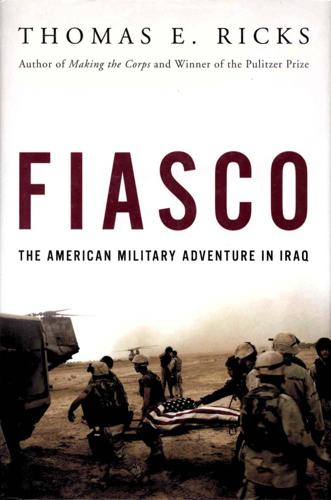
Fiasco: The American Military Adventure in Iraq
by
Thomas E. Ricks
Published 30 Jul 2007
Matthew Moten, chief of military history at West Point, would comment a year later. Bremer vs. the world Back in Washington, frustration with Bremer was growing. "He ignored my suggestions," recalled Wolfowitz. "He ignored Rumsfeld's instructions." One day late in 2003, while sailing in the Mediterranean, Larry Ellison, founder and chief executive of Oracle, the big software company, received a phone call from the Pentagon: Can we borrow General Kellogg, who had retired from the Joint Staff and gone to work for the software giant? Sure, Ellison replied. The CPA was limping, staffed at 54 percent of its estimated requirement.

Console Wars: Sega, Nintendo, and the Battle That Defined a Generation
by
Blake J. Harris
Published 12 May 2014
Michael Milken, the renowned junk bond kingpin who had celebrated the eighties by shaking up Wall Street—which led to his starting off the nineties by serving twenty-two months in prison—was now a free man, and he wanted to do something good with his life. No, something great. And, like Kalinske, he’d always had tremendous passion for combining education with technology, which had led him to start a new company, with his brother and Oracle CEO Larry Ellison, which did just that. “I’ve talked about it with Larry,” Milken explained, “and we’d really like for you to run it. What do you think?” Milken had admired his lunch date ever since the two met in the early eighties, but it was something Kalinske had done at the end of the decade that really got his attention.
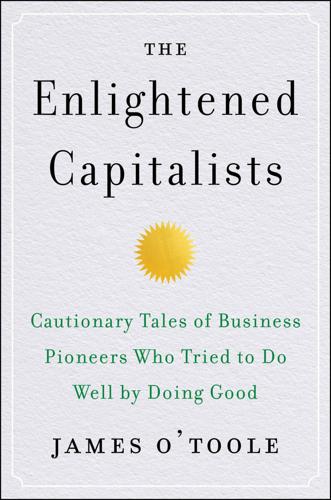
The Enlightened Capitalists
by
James O'Toole
Published 29 Dec 2018
By that same logic, the most virtuous twentieth-century business leaders could be said to have been philanthropists in the mold of Carnegie, Rockefeller, Ford, and Gates, whose careers were devoted to amassing great wealth and not to solving social problems by way of enlightened business practices. In other words, the Gates Foundation could be said to do more good for the world than Microsoft might have done under Gates’s leadership if, to address social problems, he had diverted his attention from the company’s economic and technological functions. Oracle’s chairman Larry Ellison goes further, arguing that “the Ford Motor Company did more good than the Ford Foundation” by providing jobs, tax revenues, and mobility to millions.21 And even the likes of Thomas Edison and Steve Jobs—who evidenced not only little to no interest in addressing social problems during their business careers, but also no desire to engage in philanthropy—are said by some to have made greater social contributions through their technological innovations than they could have made through any acts of social engagement.
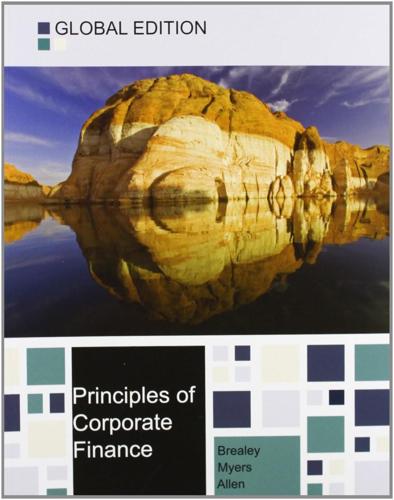
Principles of Corporate Finance
by
Richard A. Brealey
,
Stewart C. Myers
and
Franklin Allen
Published 15 Feb 2014
Most major companies around the world now link part of their executive pay to the stock-price performance.11 This compensation is generally in one of three forms: stock options, restricted stock (stock that must be retained for several years), or performance shares (shares awarded only if the company meets an earnings or other target). Sometimes these incentive schemes constitute the major part of the manager’s compensation pay. For example, in 2011 Larry Ellison, CEO of the business software giant Oracle Corporation, received total compensation estimated at $78 million. Only a small fraction (a mere $1) of that amount was salary. The lion’s share was in the form of stock and option grants. Moreover, as founder of Oracle, Ellison holds over 1 billion shares in the firm.
…
We will look at several such cases in Section 21-5. 21-4 Black–Scholes in Action To illustrate the principles of option valuation, we focused on the example of Apple’s options. But financial managers turn to the Black–Scholes model to estimate the value of a variety of different options. Here are four examples. Executive Stock Options In fiscal year 2011 Larry Ellison, the CEO of Oracle Corporation, received a salary of $1 million, but he also pocketed another $63 million in the form of stock options. The example highlights that executive stock options are often an important part of compensation. For many years companies were able to avoid reporting the cost of these options in their annual statements.
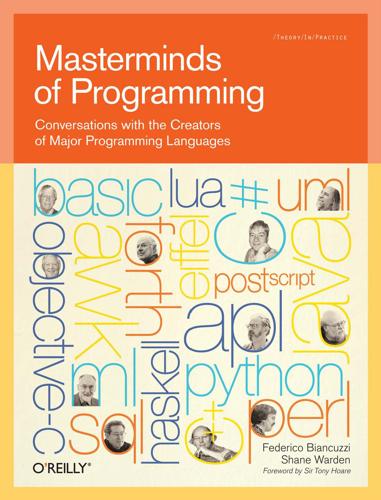
Masterminds of Programming: Conversations With the Creators of Major Programming Languages
by
Federico Biancuzzi
and
Shane Warden
Published 21 Mar 2009
The language should be designed in such a way that many programming errors can be detected and clearly identified at “compile” time (i.e., in the absence of actual input data). Also, the language should provide a mechanism that enables programmers to handle exceptional conditions at runtime. Feedback and Evolution Ted Codd’s original paper on the relational data model was published in the open literature and influenced people outside IBM such as Larry Ellison, and Mike Stonebraker’s group at UC Berkeley. Was this process similar to the “open source” model? How did external visibility affect the development of SQL? Don: In the 1970s, the relational data model was a new idea. It was a subject for advanced research and prototyping and it was not generally available commercially.
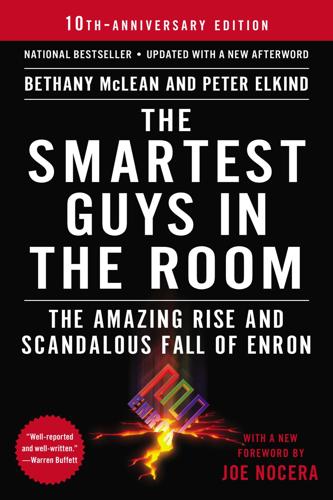
The Smartest Guys in the Room
by
Bethany McLean
Published 25 Nov 2013
What outsiders would buy into this arrangement? Friendly ones. In the first step of the transaction, the broadband division formed a joint venture, called EBS Content Systems, with two partners. One was a vendor involved in the Blockbuster trial called nCube—a tiny video-on-demand equipment company privately owned by Oracle CEO Larry Ellison. The other was an investment vehicle called Thunderbird, owned by Whitewing, the Enron-controlled special- purpose entity. As ever, to justify off-balance-sheet accounting treatment, nCube and Thunderbird had to contribute a total of at least 3 percent of the venture’s equity, that investment had to be at risk, and the outside investors had to control the joint venture.

The Art of SEO
by
Eric Enge
,
Stephan Spencer
,
Jessie Stricchiola
and
Rand Fishkin
Published 7 Mar 2012
These types of changes, if and when they occur, could transform what we today call “SEO” into something else, with the SEO of tomorrow being responsible for helping publishers gain access to potential customers through a vast array of new mechanisms that currently do not exist. Growing Reliance on the Cloud Cloud computing is transforming how the Internet-connected population uses computers. Oracle founder Larry Ellison’s vision of thin-client computing may yet come to pass, but in the form of a pervasive Google “operating system” and its associated, extensive suite of applications. Widespread adoption by users of cloud-based (rather than desktop) software and seemingly limitless data storage, all supplied for free by Google, will usher in a new era of personalized advertising within these apps.
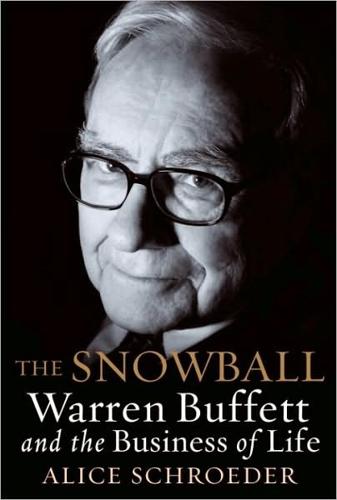
The Snowball: Warren Buffett and the Business of Life
by
Alice Schroeder
Published 1 Sep 2008
CEOs had, on average, been paid forty-two times as much as the average blue-collar worker in 1980. Twenty years later, that ratio had increased to more than four hundred times.35 The top-earning CEOs got billion-dollar packages. In 2000, Sandy Weill was paid $151 million at Citigroup, Jack Welch $125 million at GE, Larry Ellison $92 million at Oracle. Although Steve Jobs was taking only a $1 salary at Apple for 1997 through 1999, he got a windfall $872 million stock-option grant in 2000—plus a $90 million Gulfstream jet.36 When the accountants had tried to change these rules in the early 1990s, corporate America, led by Silicon Valley, stormed the gates of Congress, armed with lobbyists and campaign contributions, begging their representatives to save them from the terrible new accounting rules.